Rt 40 Cumberland, Maryland
to Vandalia, Illinois
Part 1: Cumberland MD to Washington PA
July 2014
Originally planned to span from Cumberland MD to Wheeling WV, the National Road (also National Pike or Cumberland Road) was later extended east to Baltimore MD and planned to reach west to St Louis MO and beyond. However, the coming of the railroad westward in the mid 1800s put an end to construction in Vandalia IL about 2 hours away from St Louis MO. One hundred years later, the invention of the automobile renewed interest and construction resumed. Once again, another new technology – the interstate highway system – put the brakes on the National Road. Instead of weeks to cross the country on 2-lane roads, stopping in each small town along the way, drivers could now go coast to coast in just days. Many small towns along the National Road dried up as travelers (and their money) drove by on the nearby interstate I-70. At one point, Rt 40 reached from Atlantic City NJ to San Francisco CA. With realignments and such, Rt 40 currently ends at Silver Summit UT. At many points along the way, I-70 was laid right over the old road and the two roads are one.
More information and history of the National Road
https://en.wikipedia.org/wiki/National_Road
https://www.fhwa.dot.gov/infrastructure/back0103.cfm
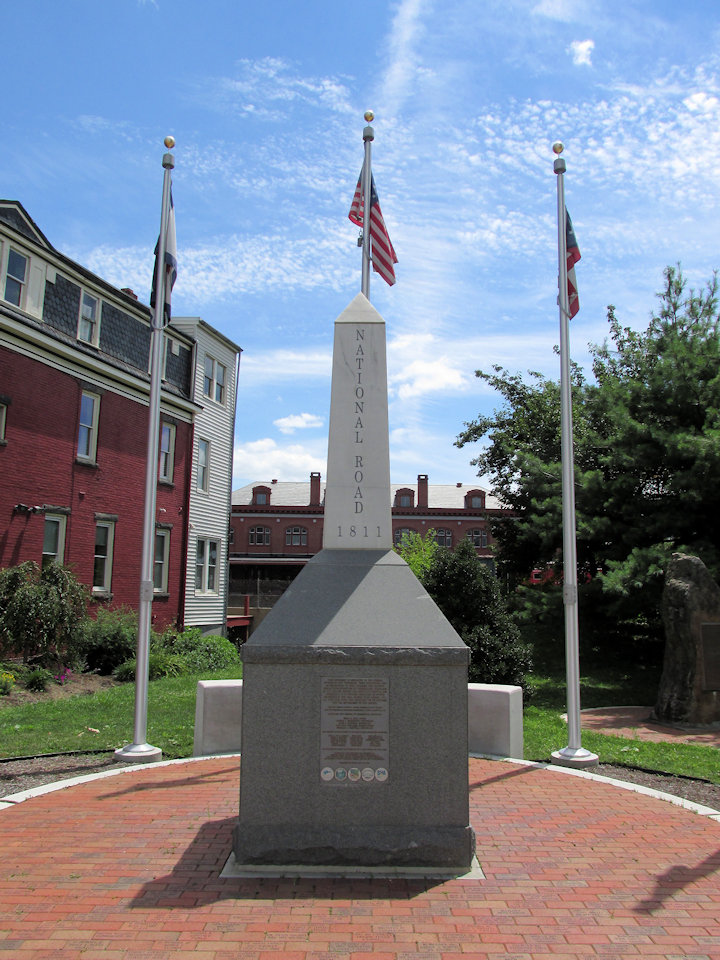
This monument marks the beginning of the National Road.

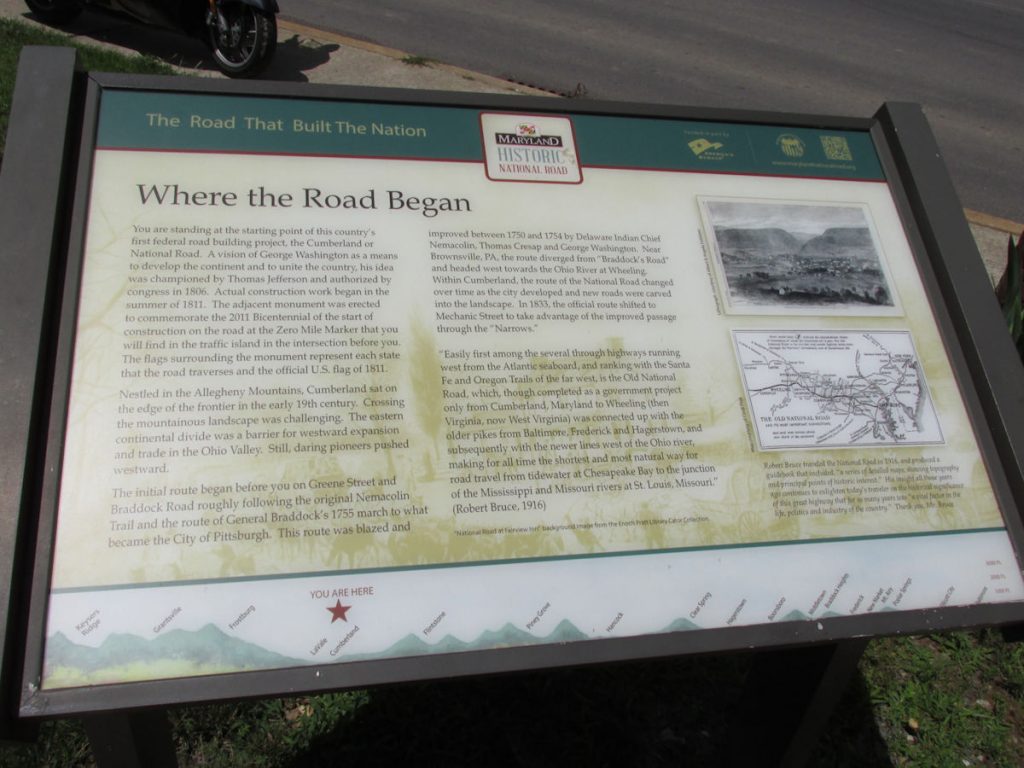
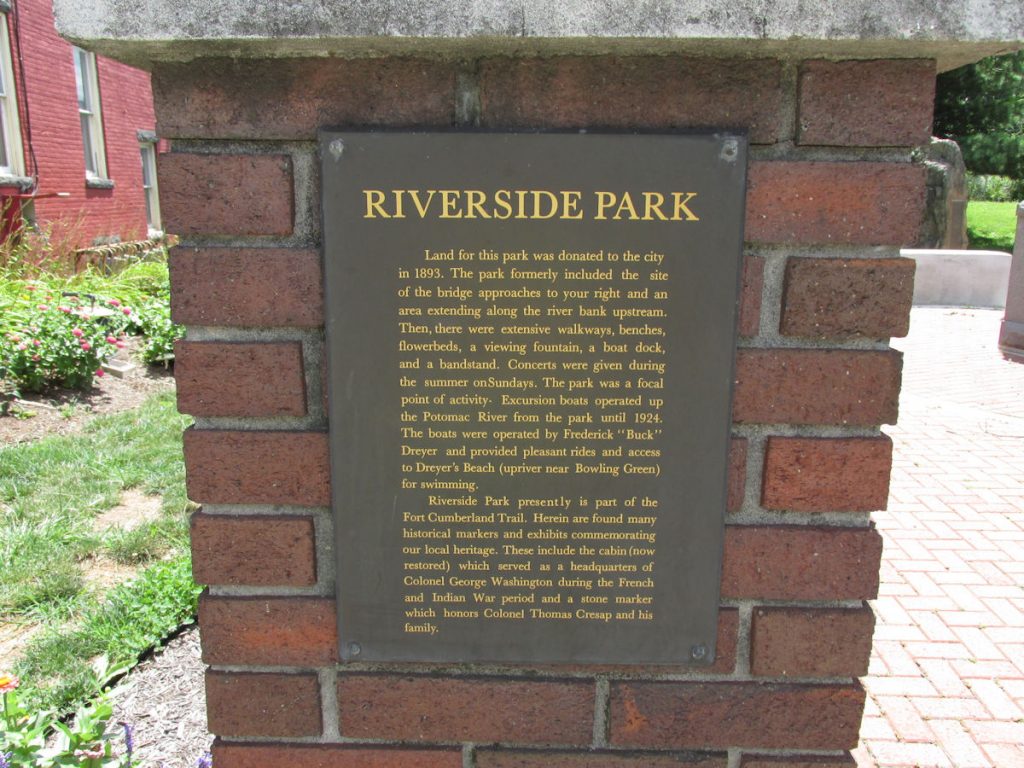
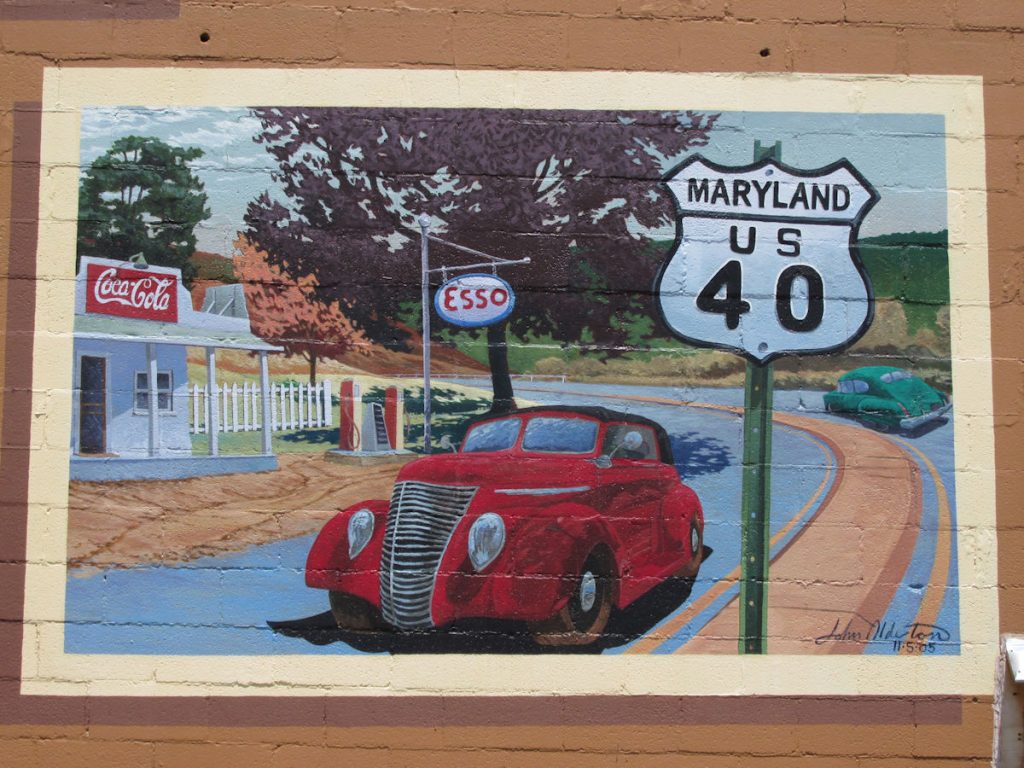
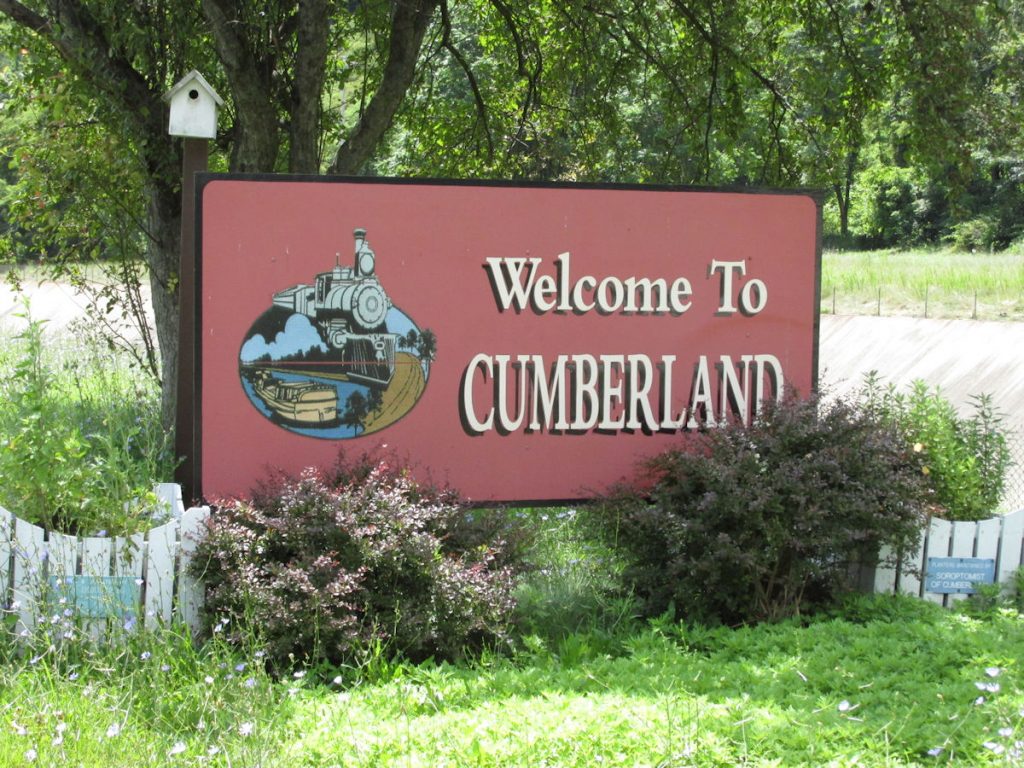
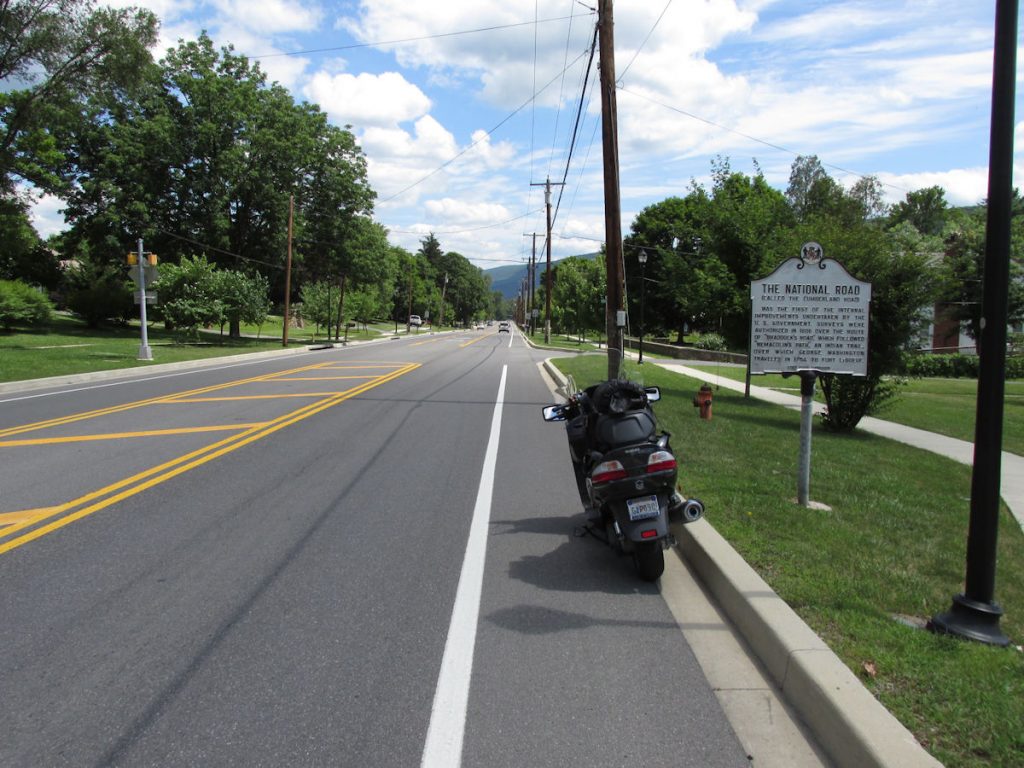

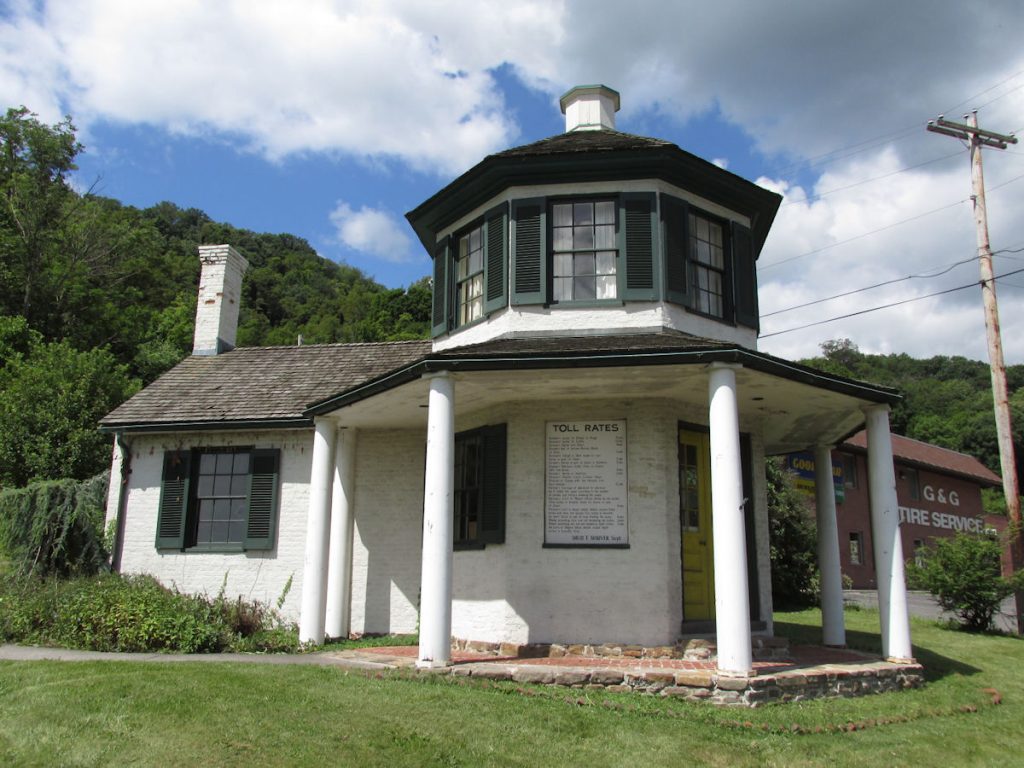
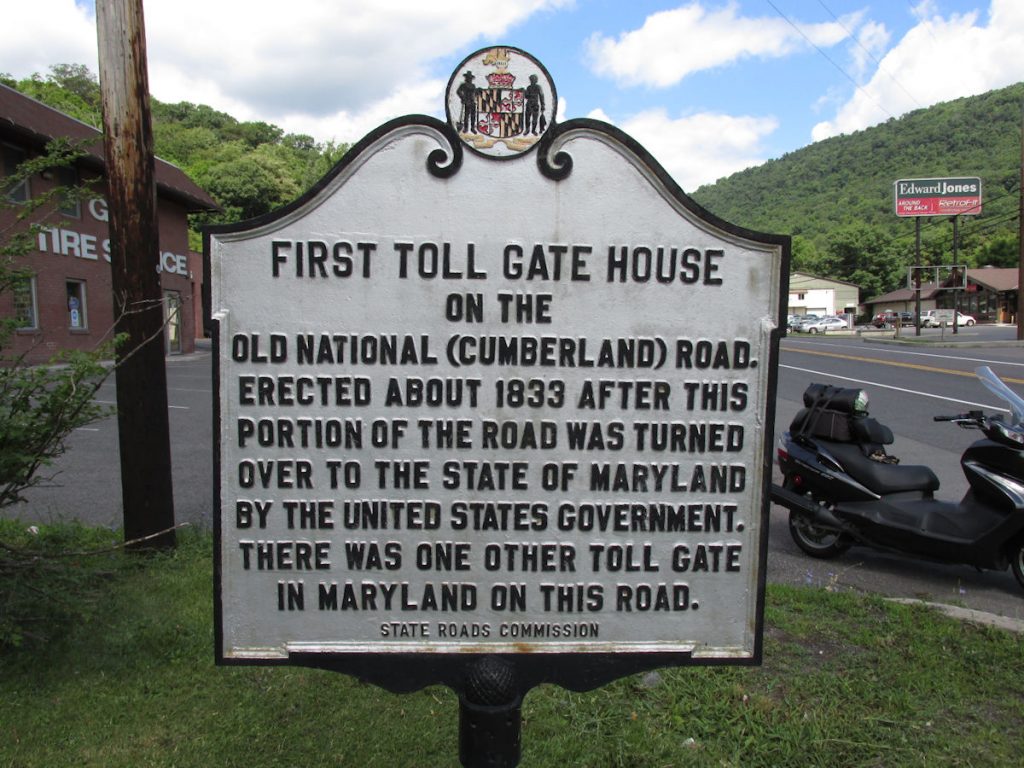
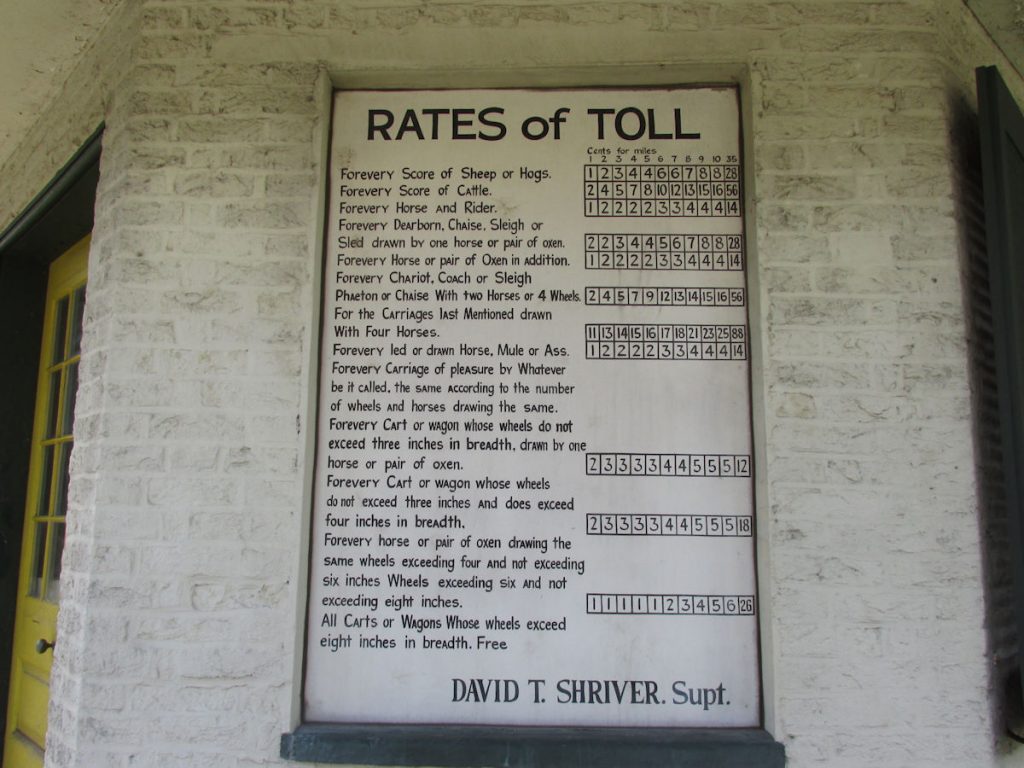
Remember, this was during the 1800s, decades before motorized traffic.
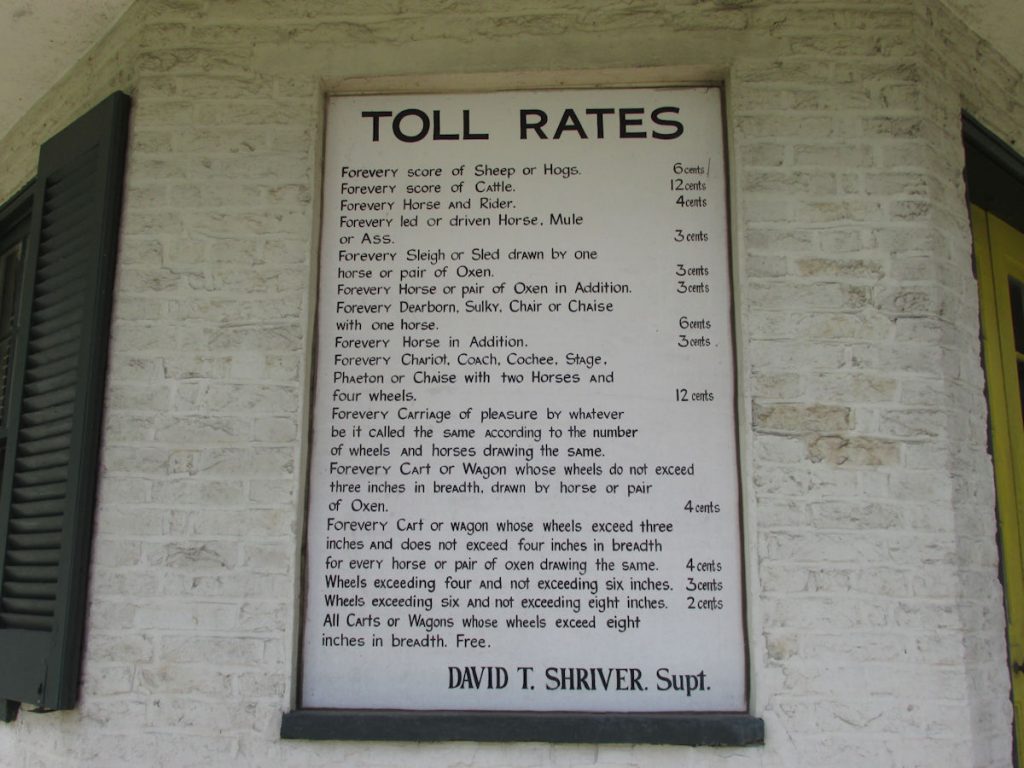
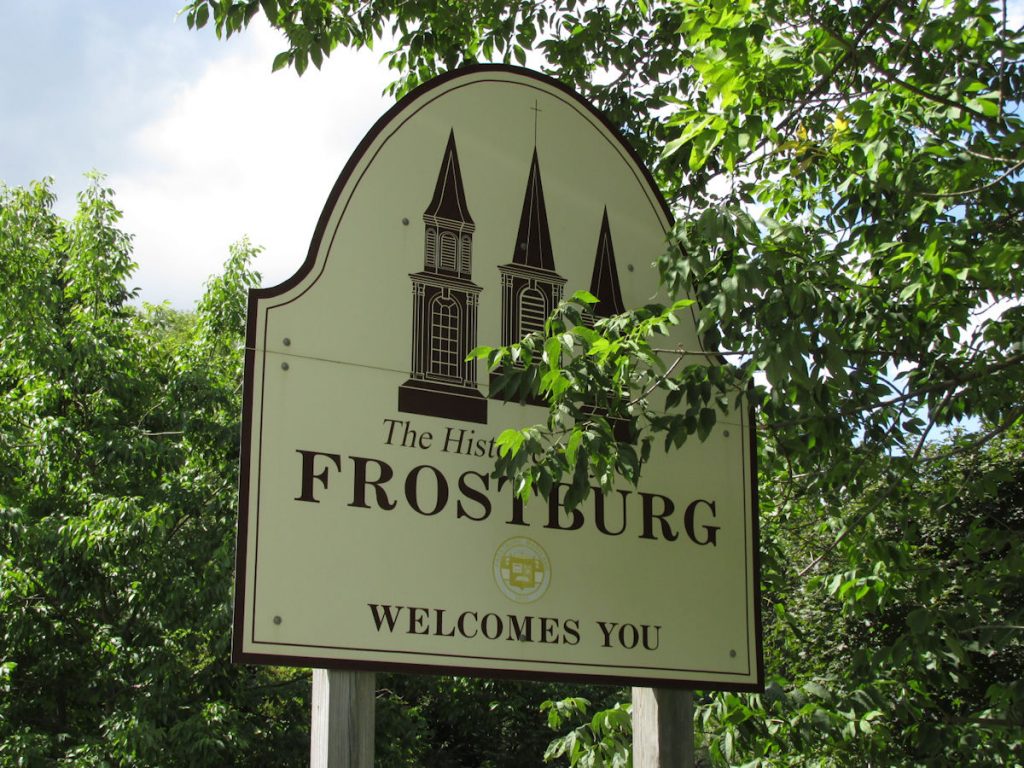
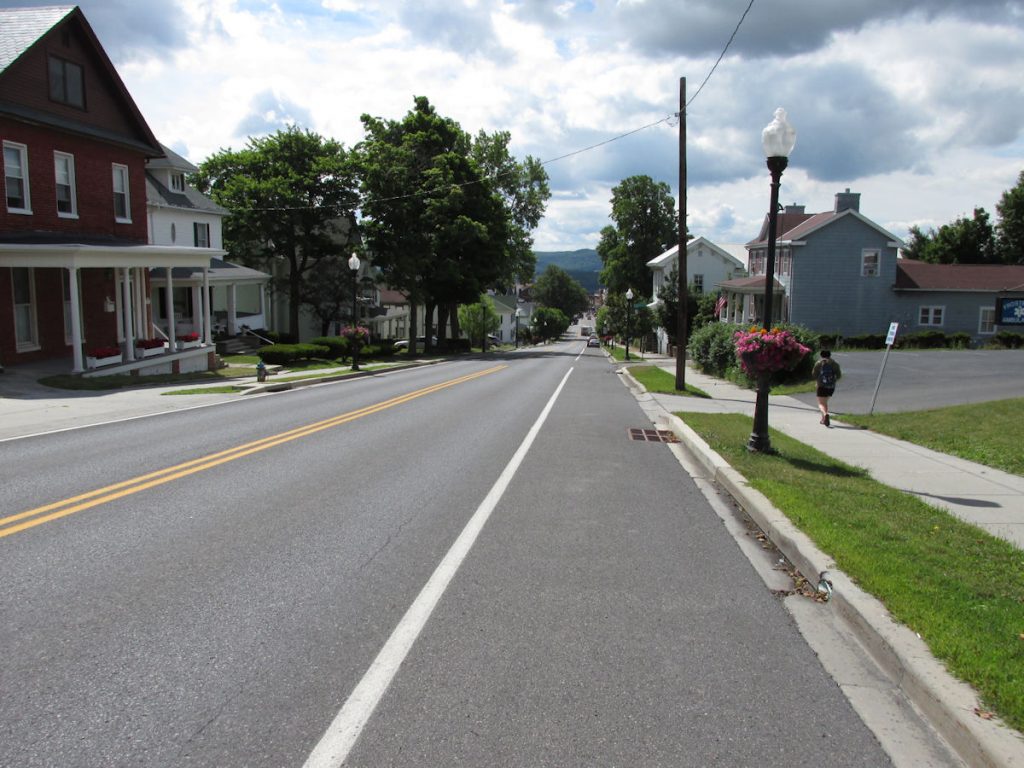
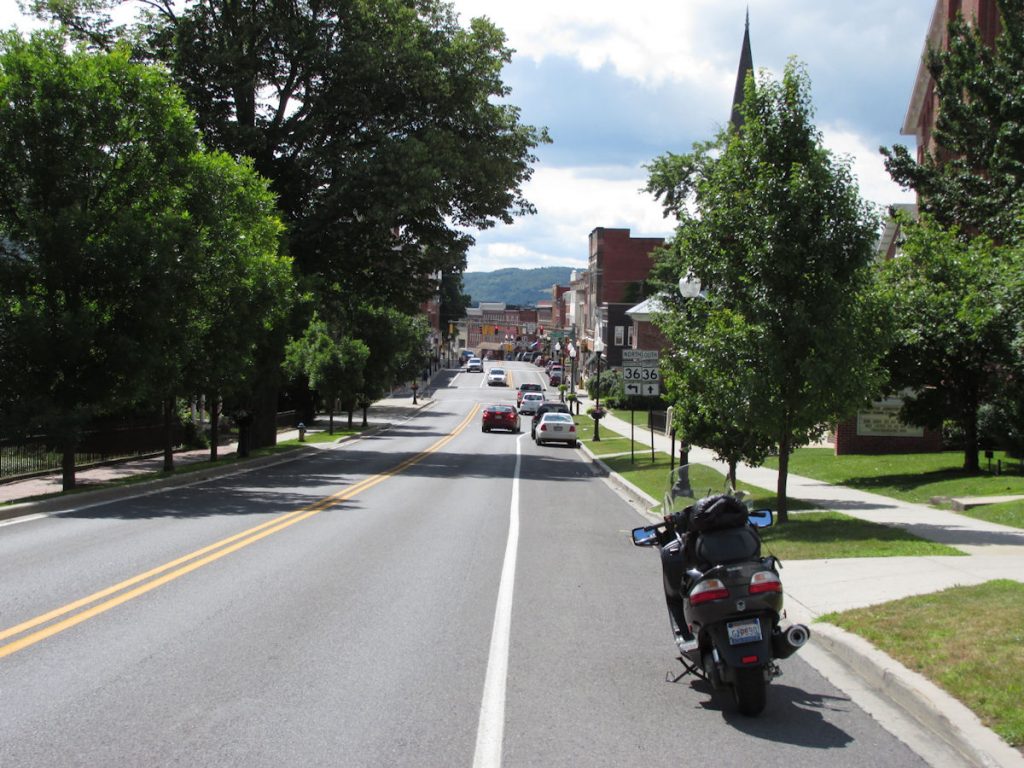
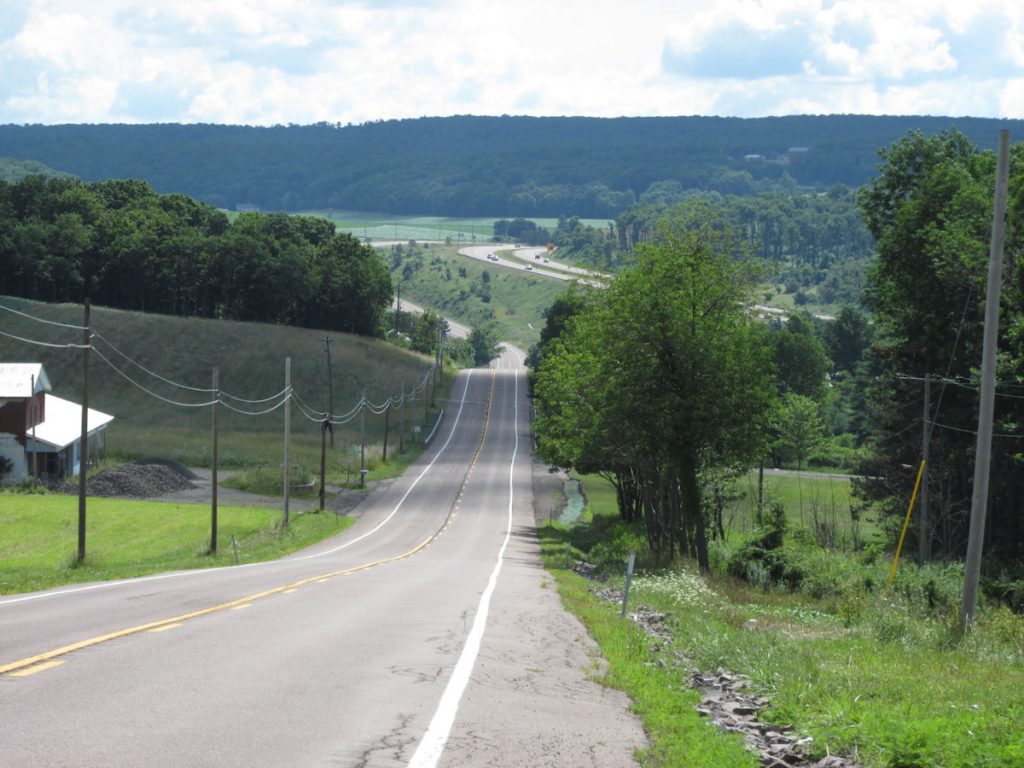
Horses and buggies packed with large families are fairly common along the highway.
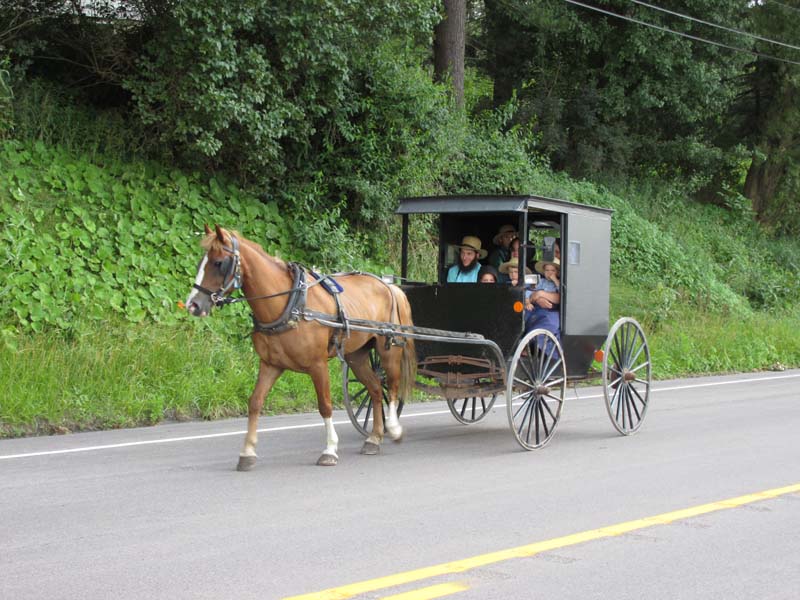
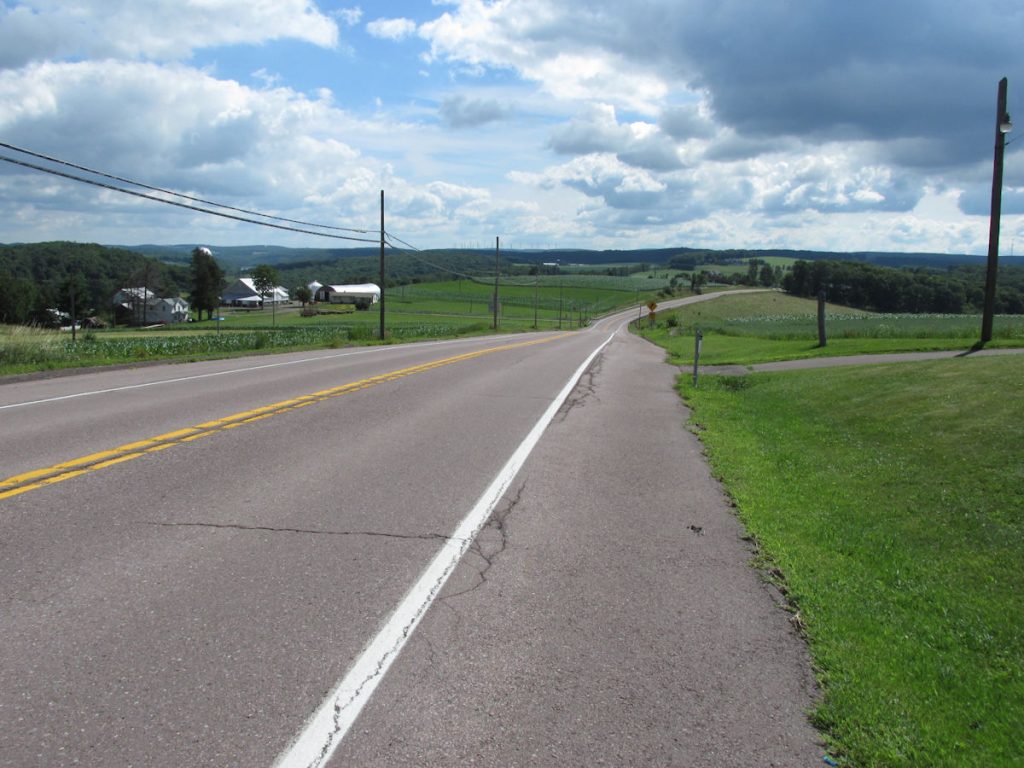
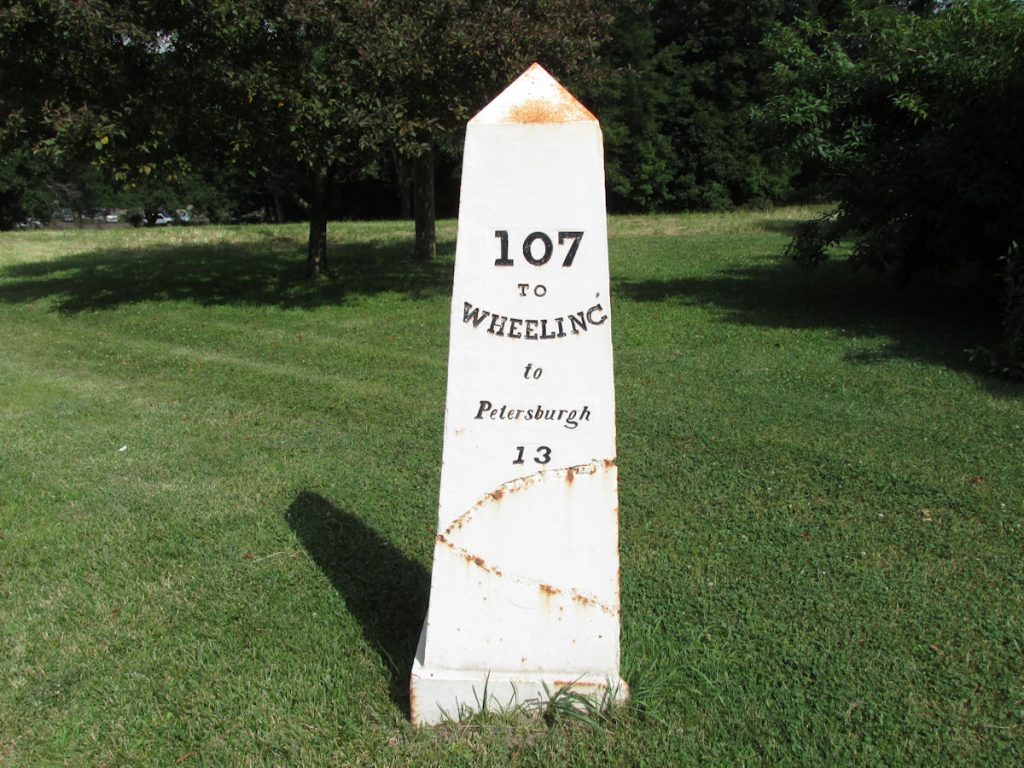
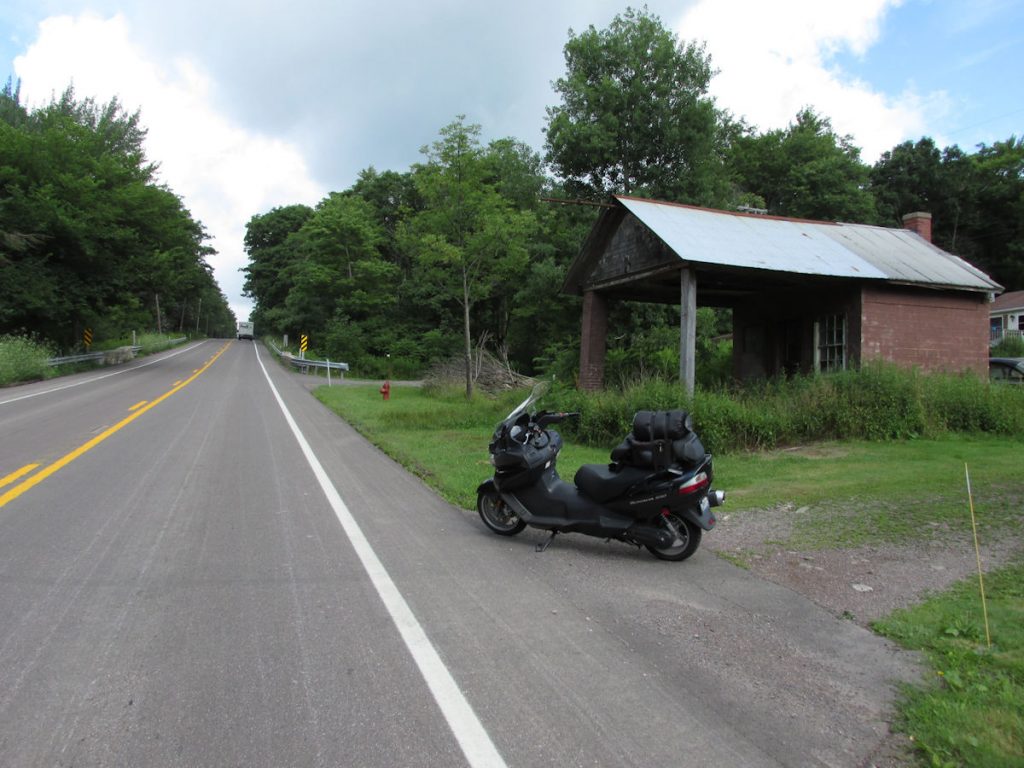
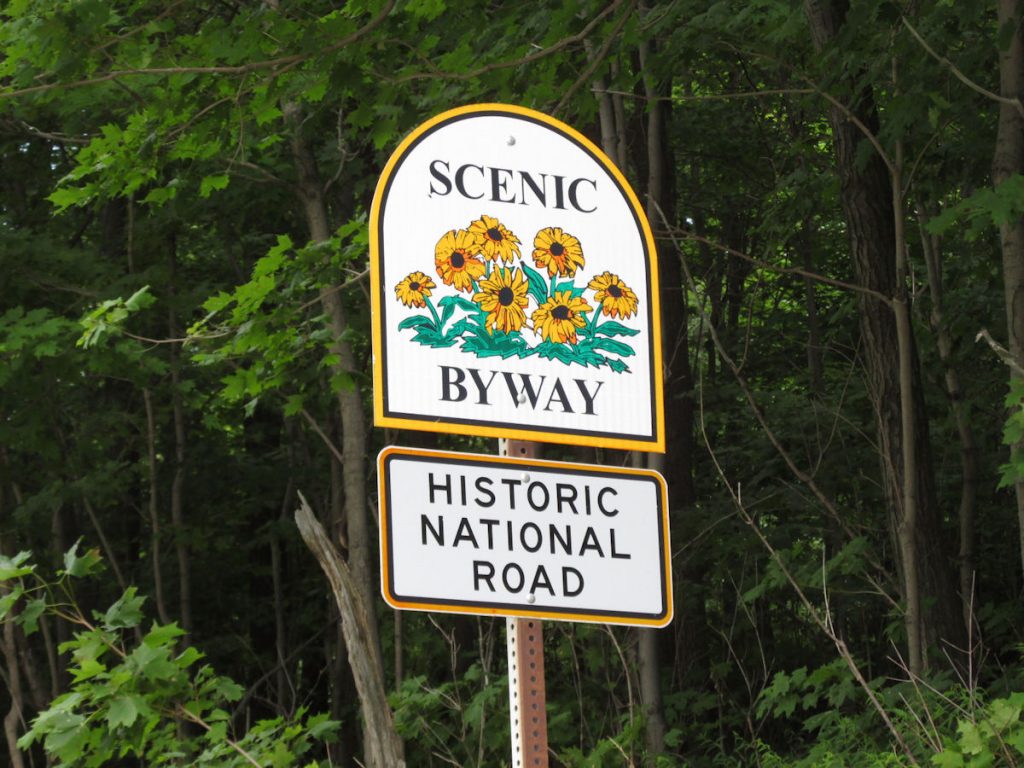
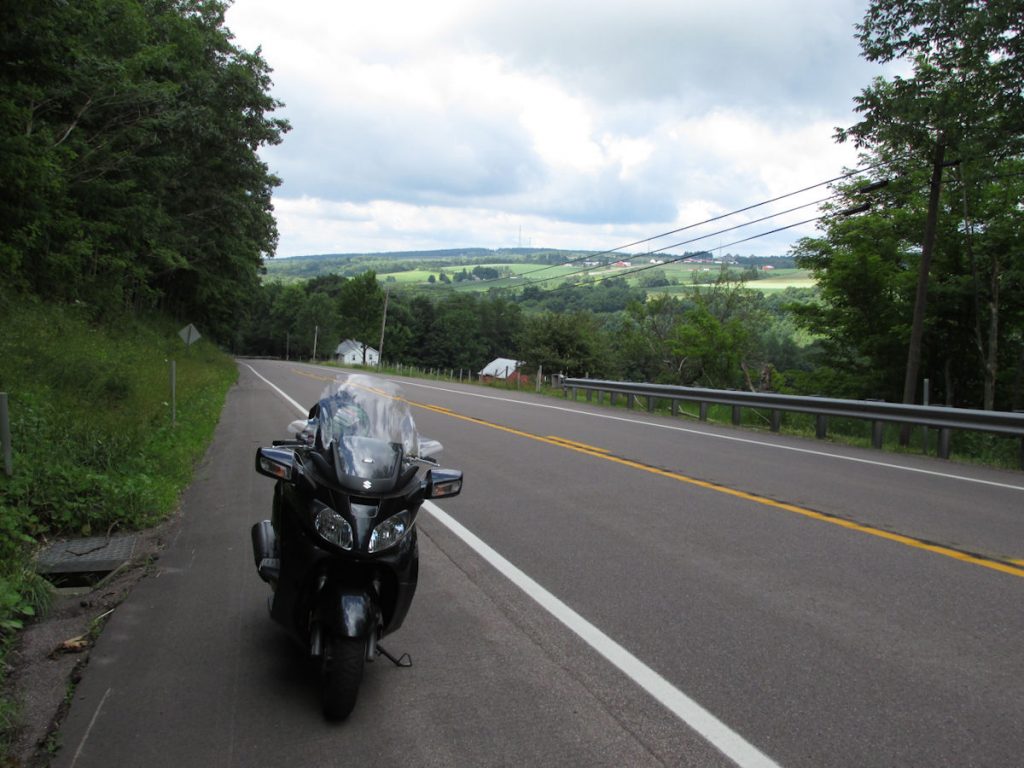
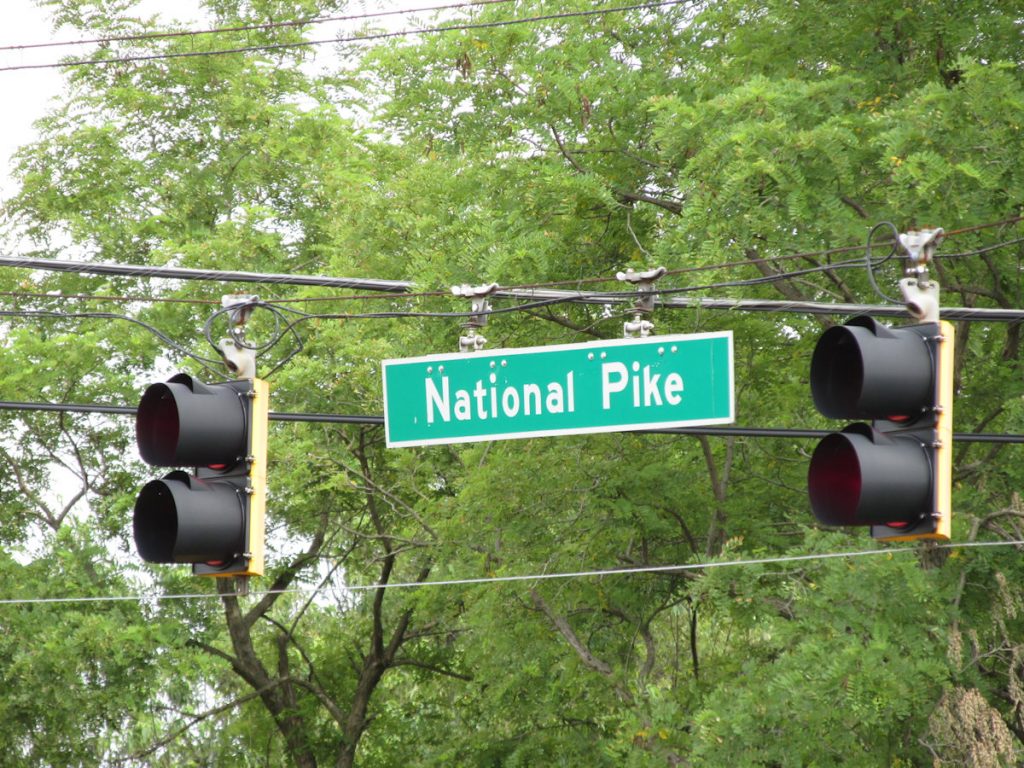
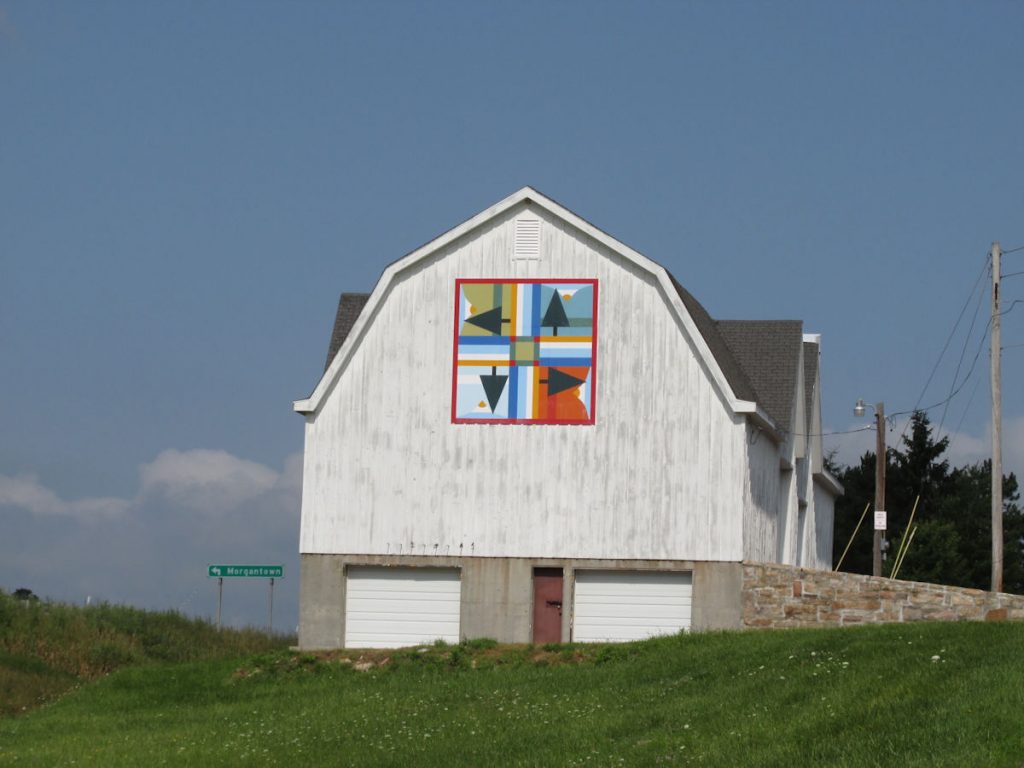
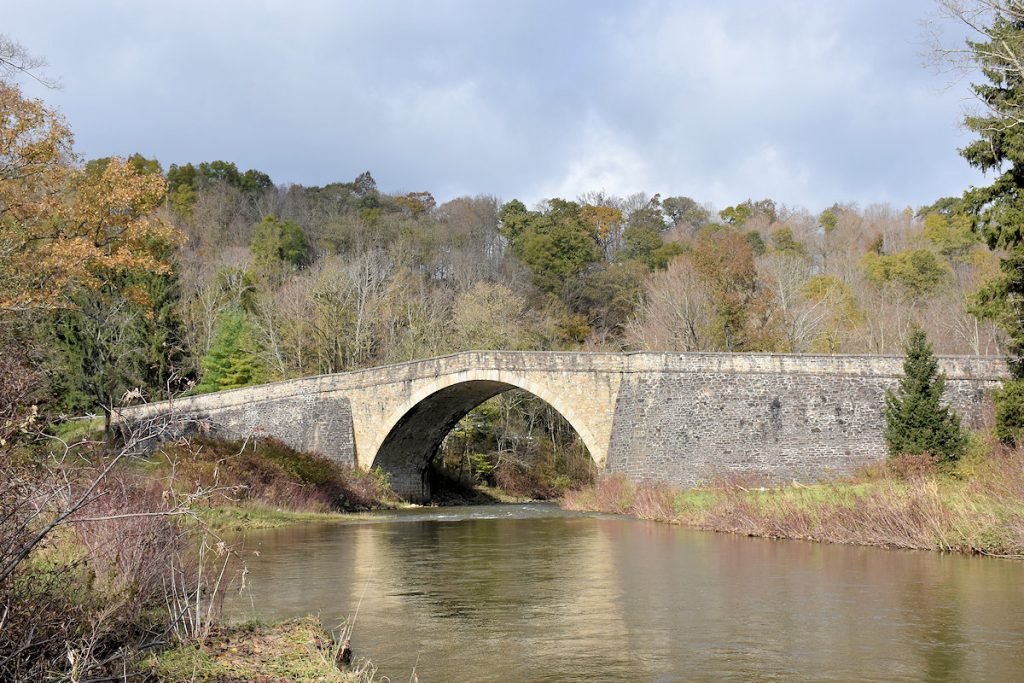
It was built in 1813-1814. (Photos taken in Oct 2018)

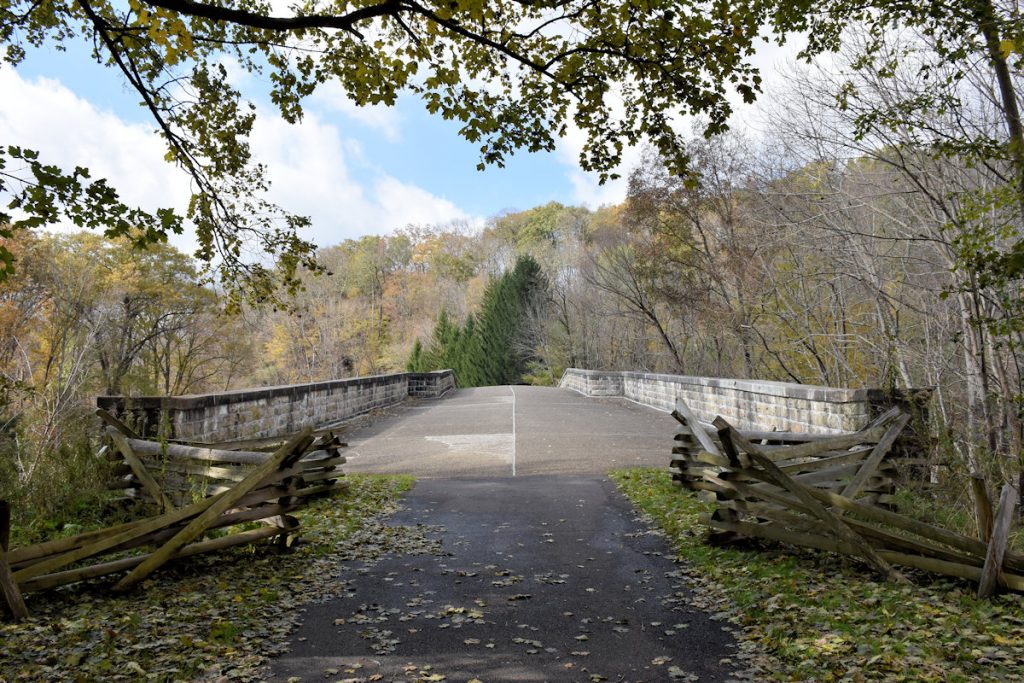
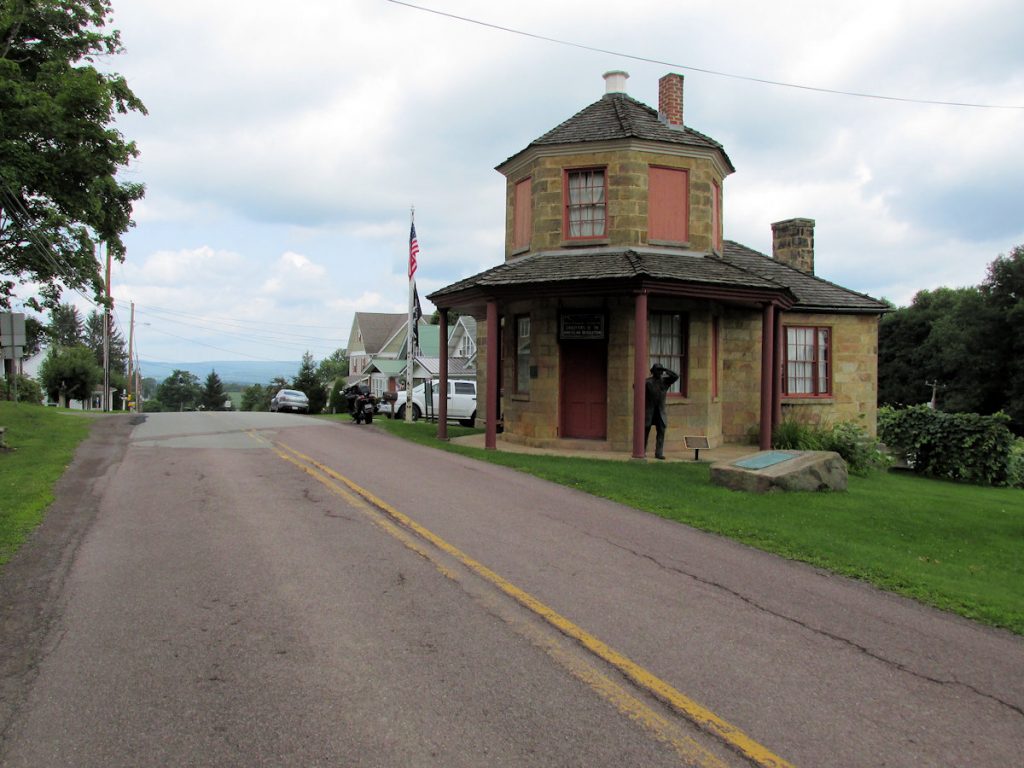
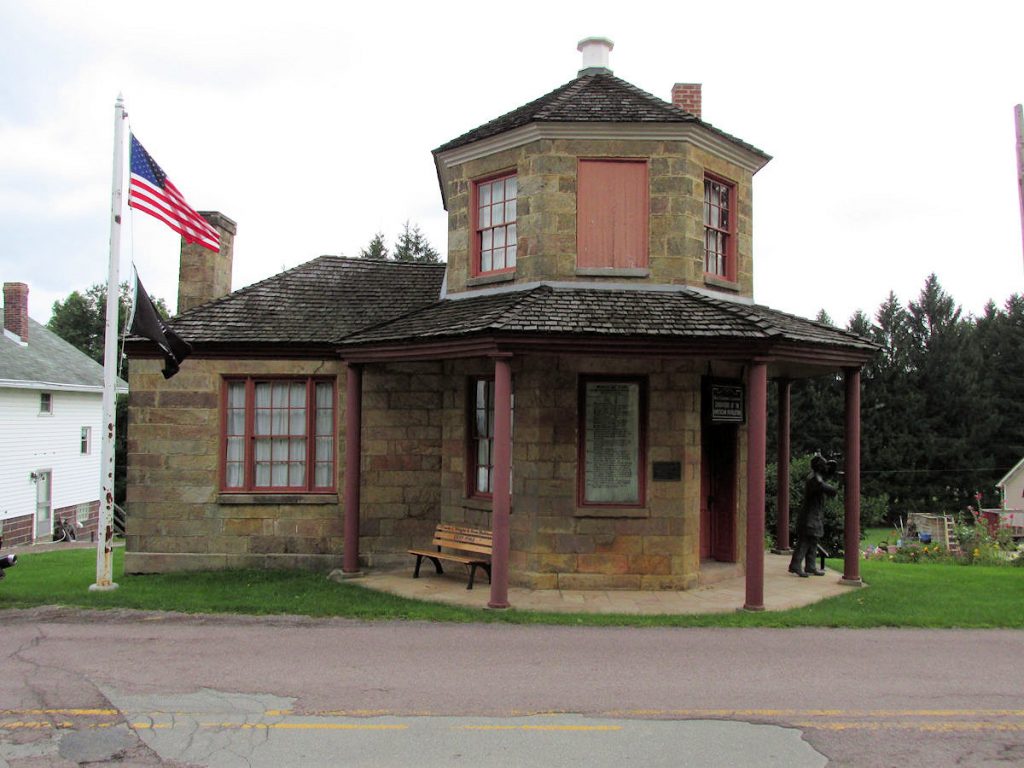
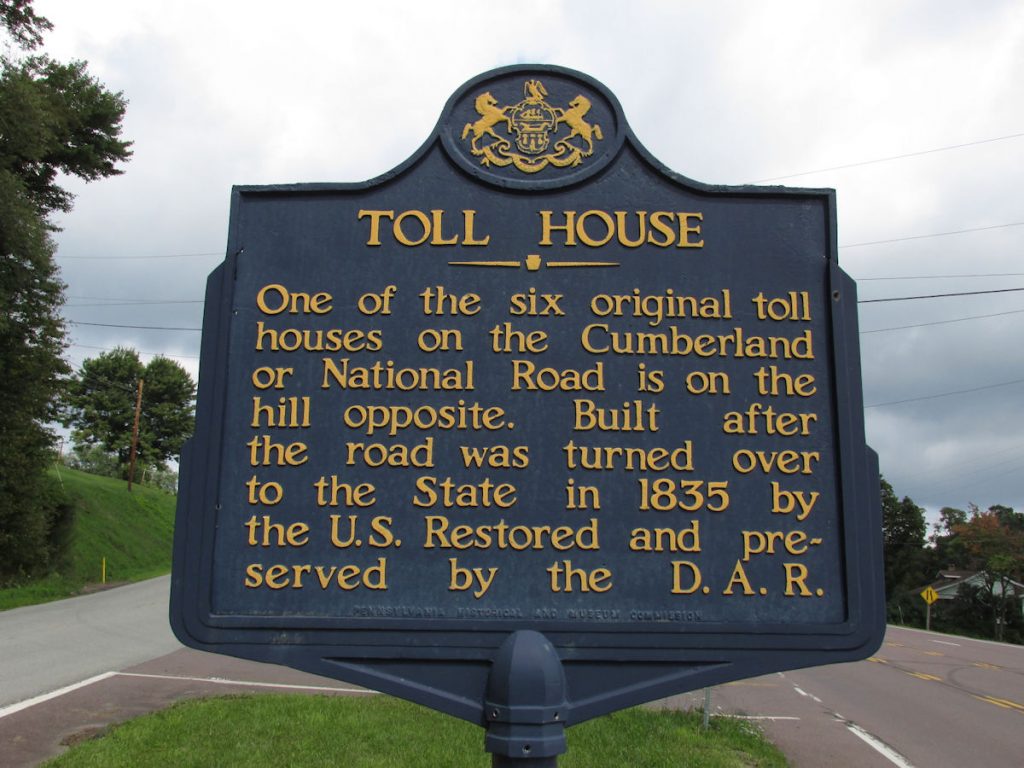
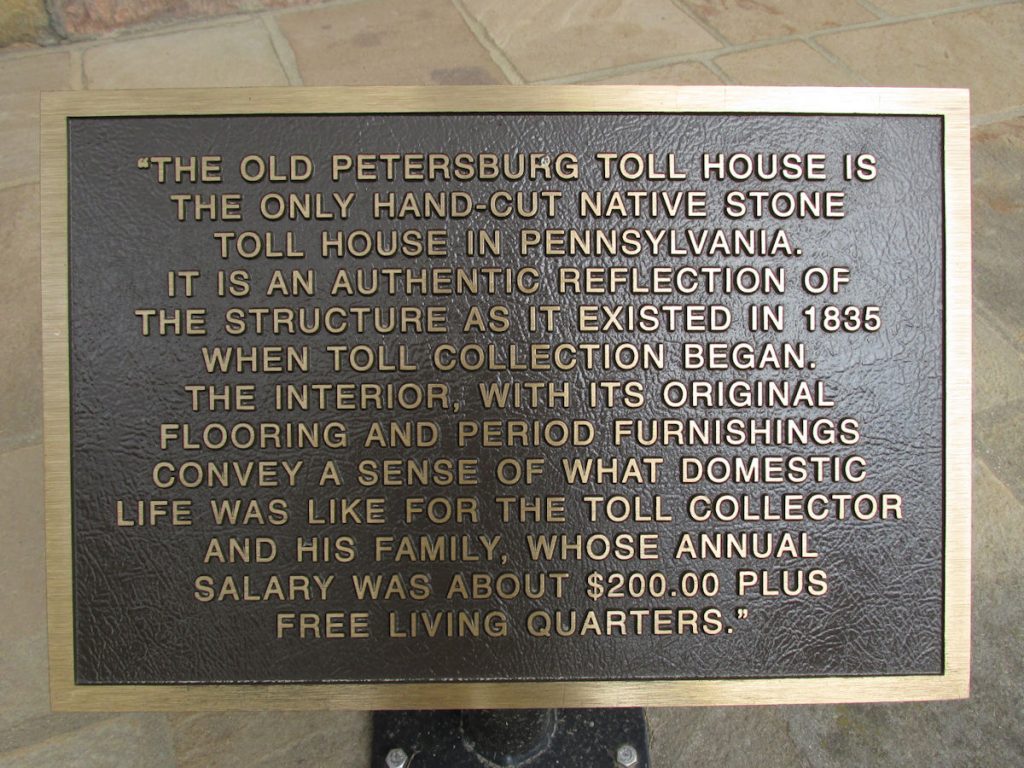
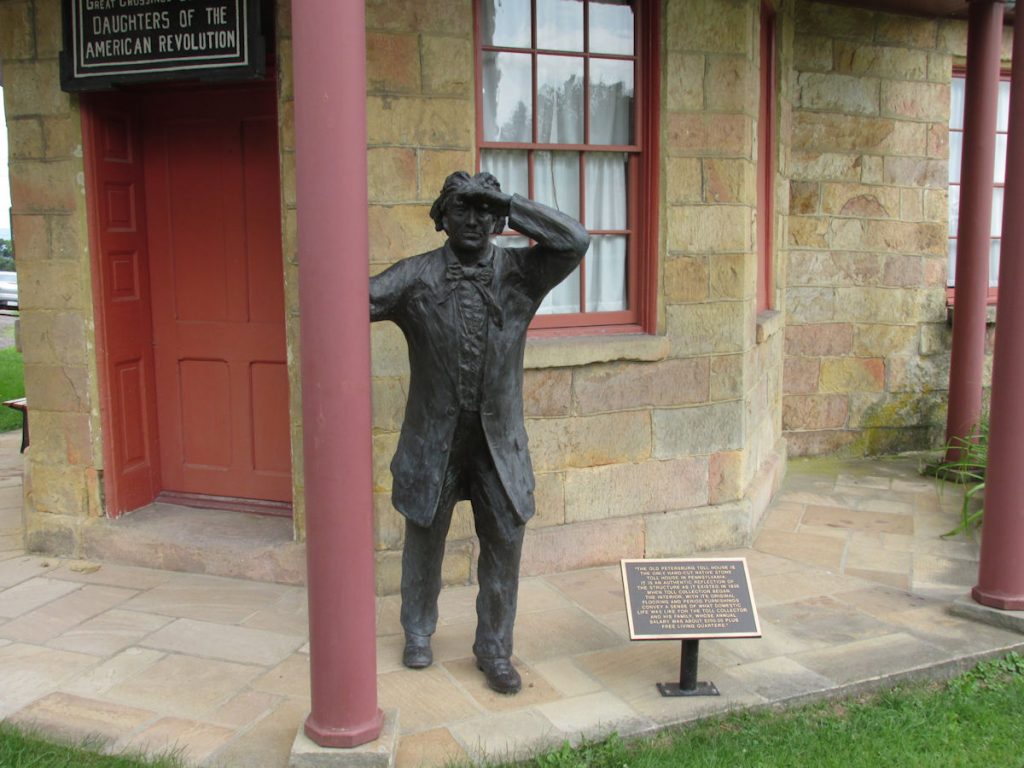
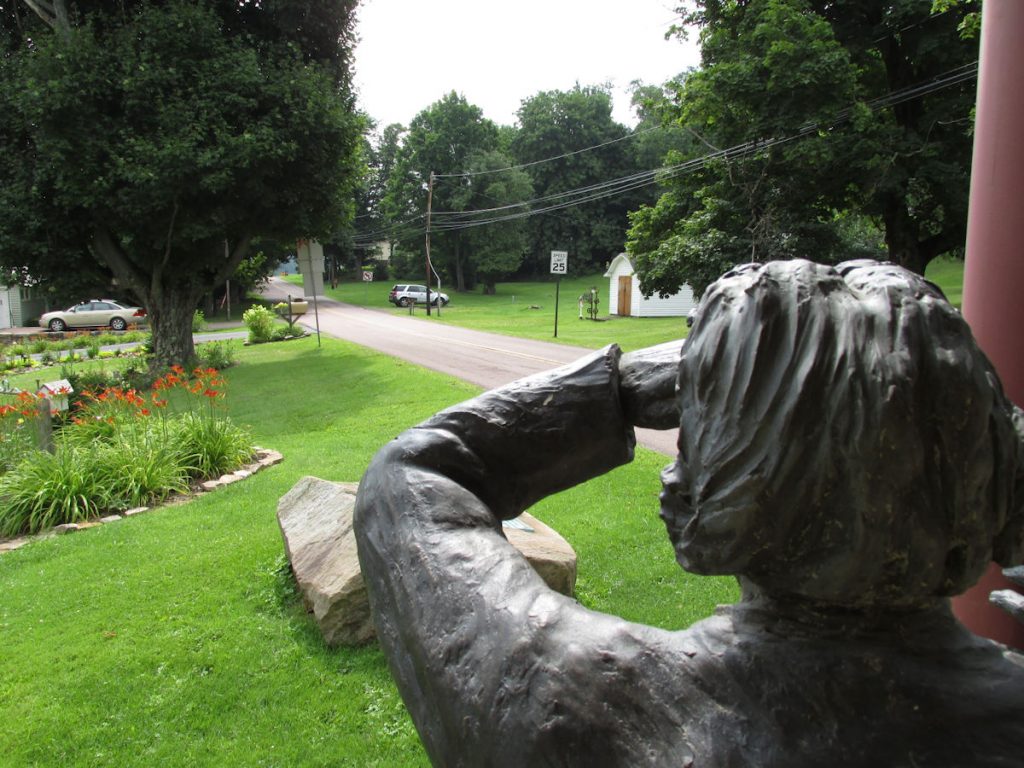
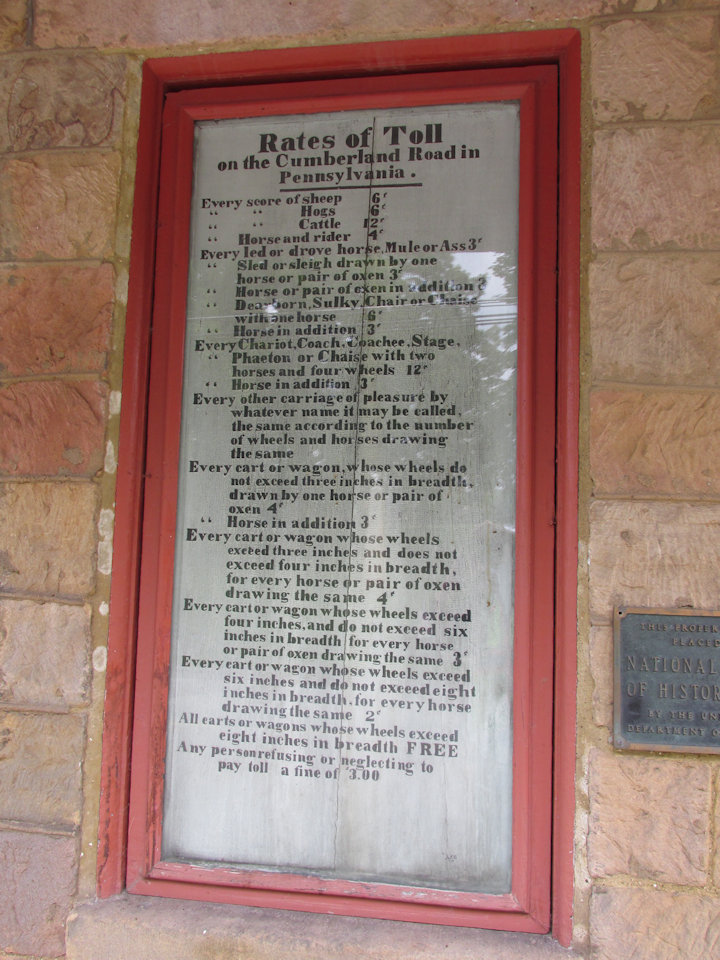
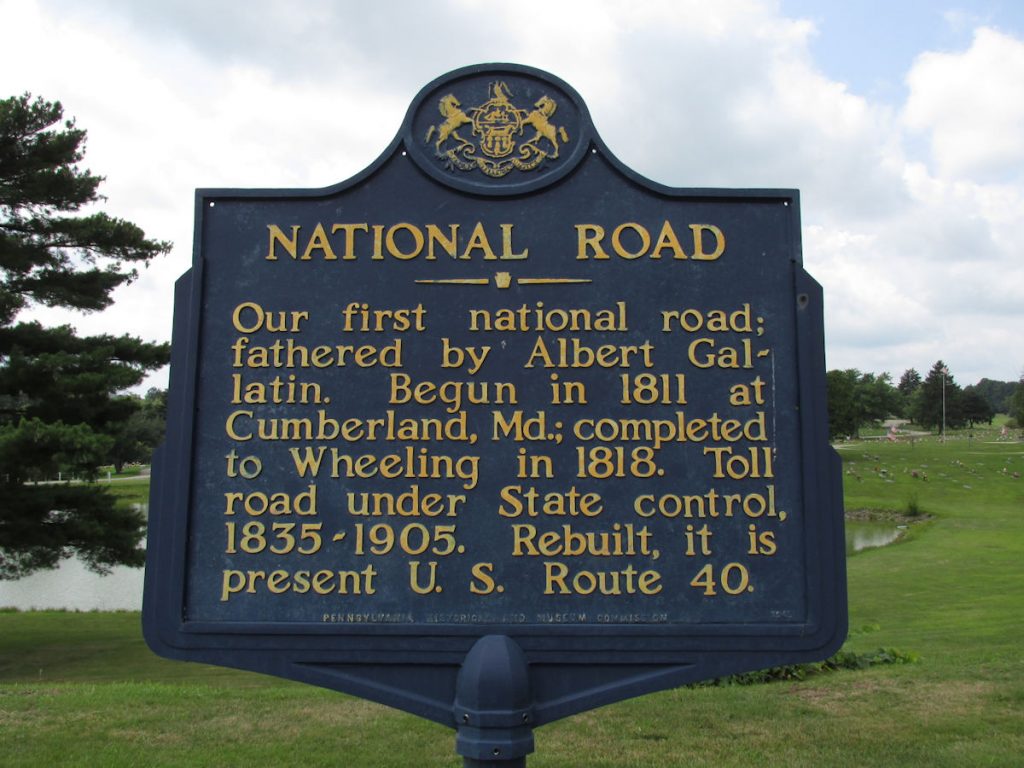
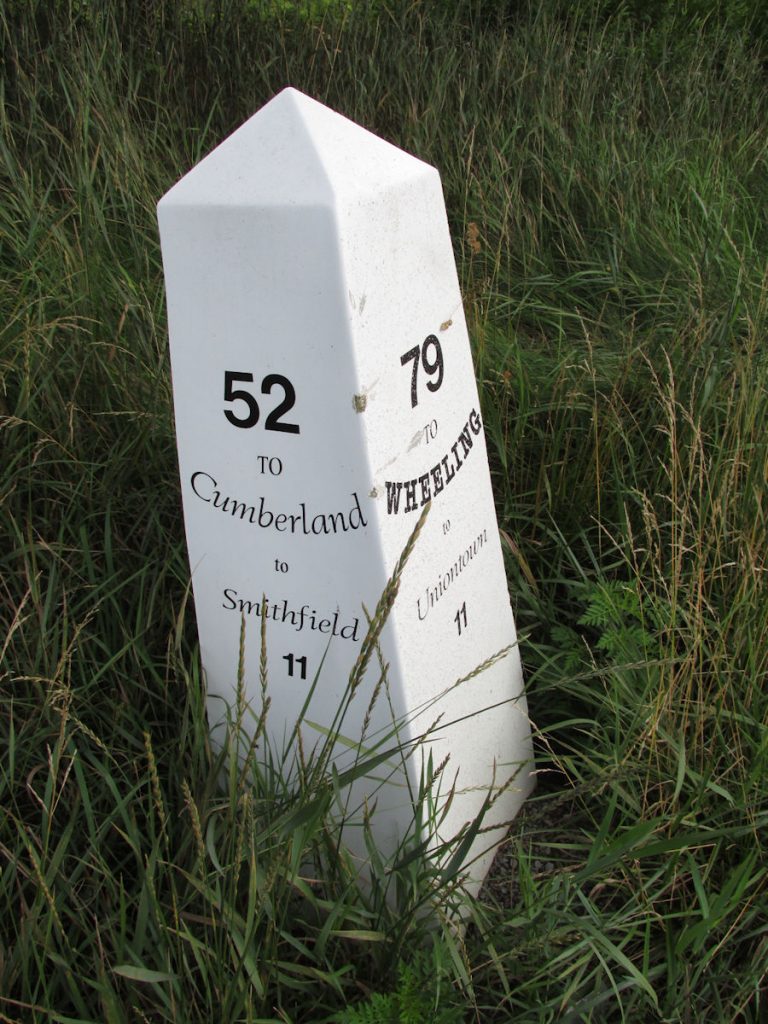
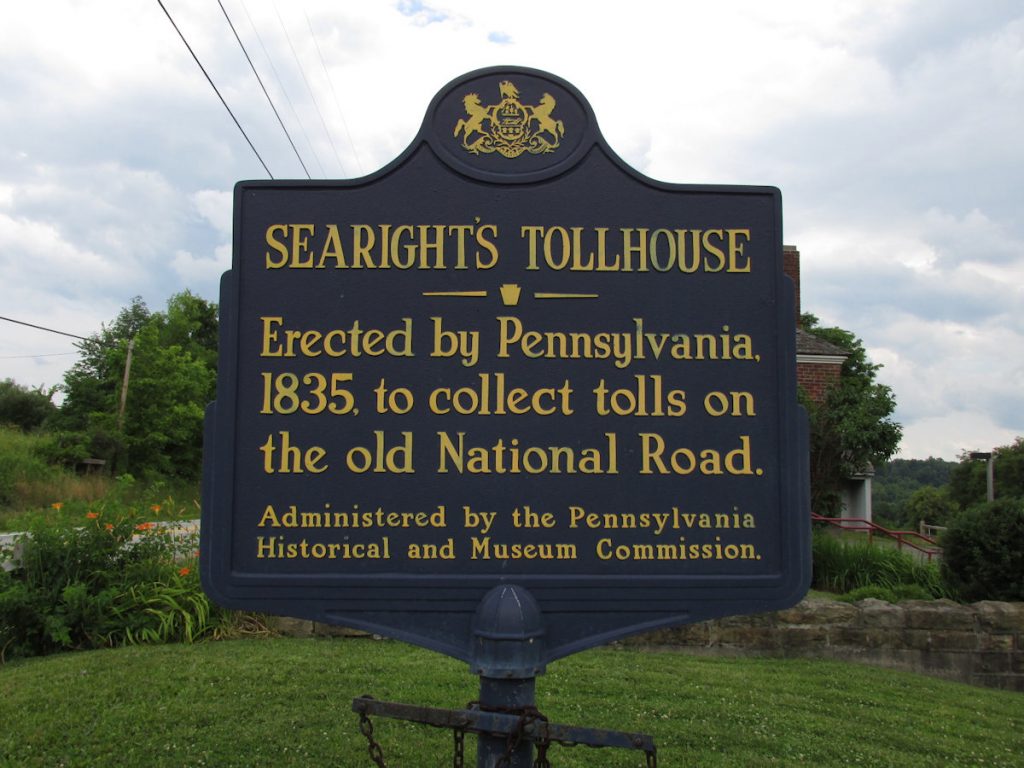
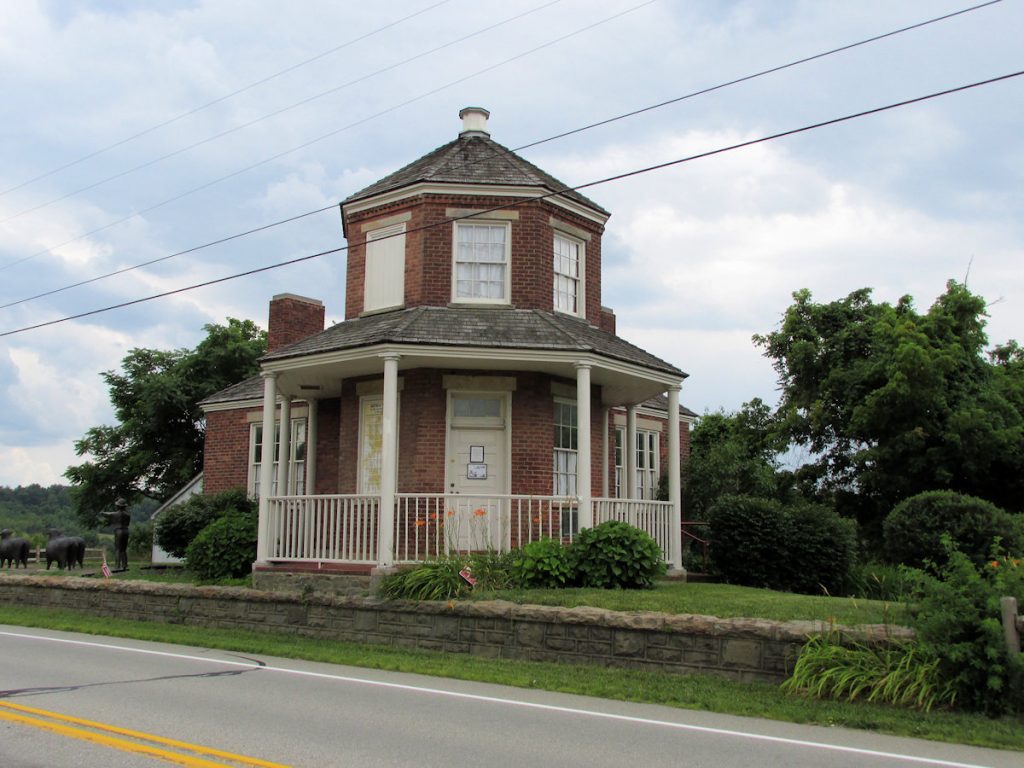
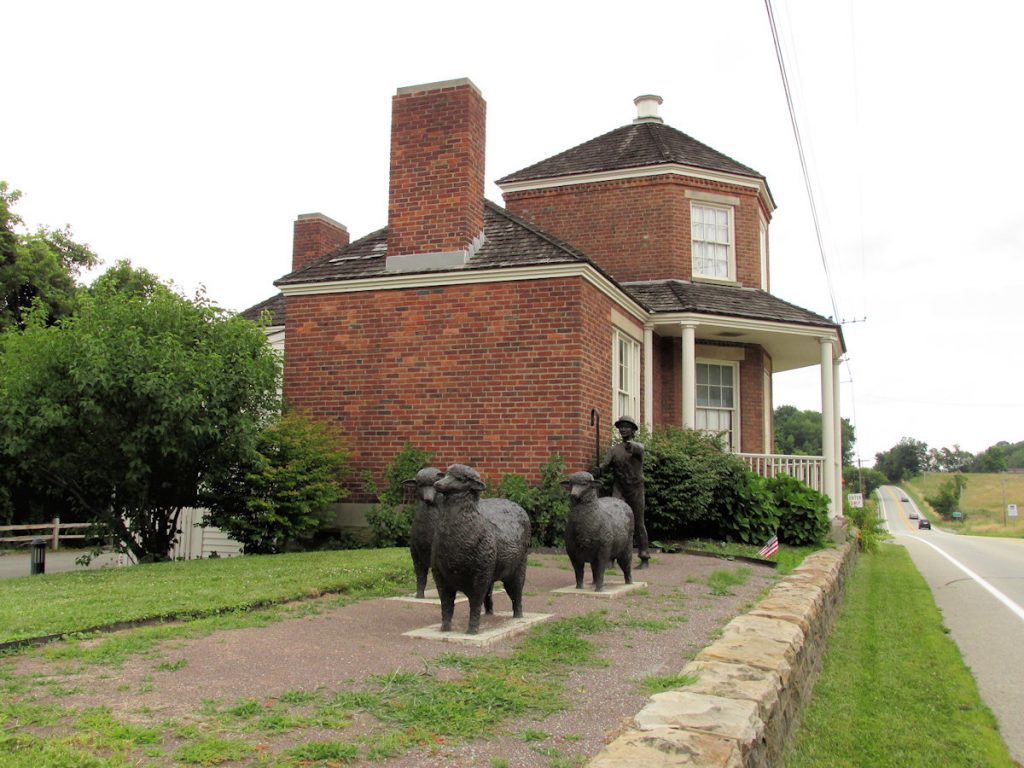
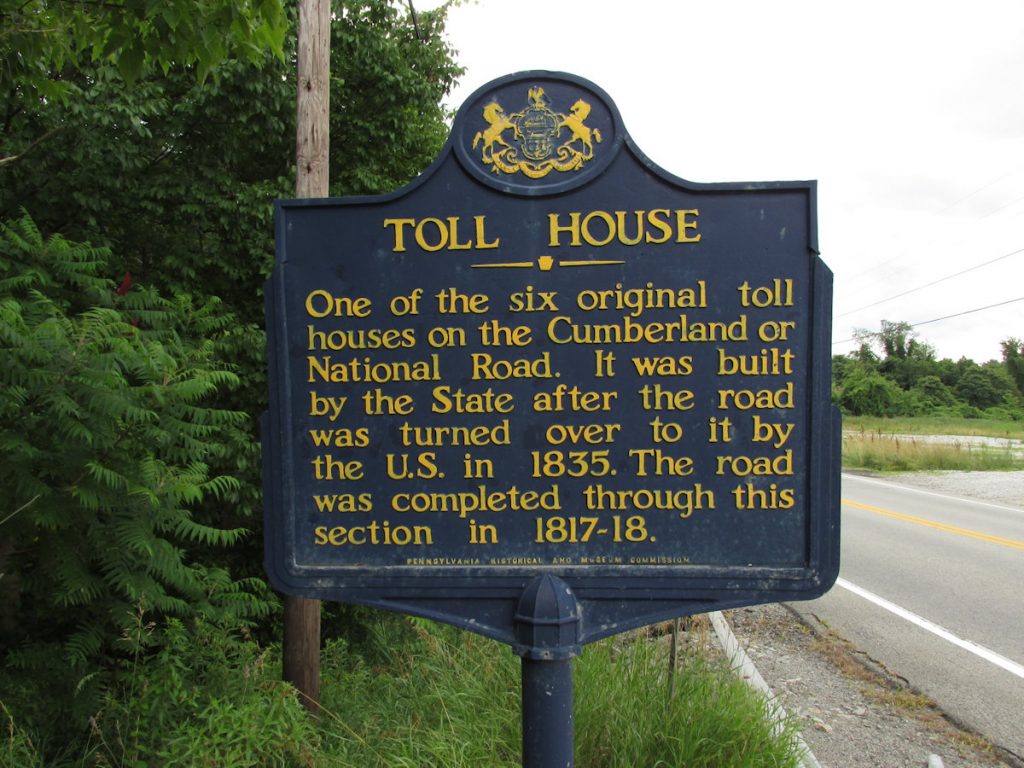
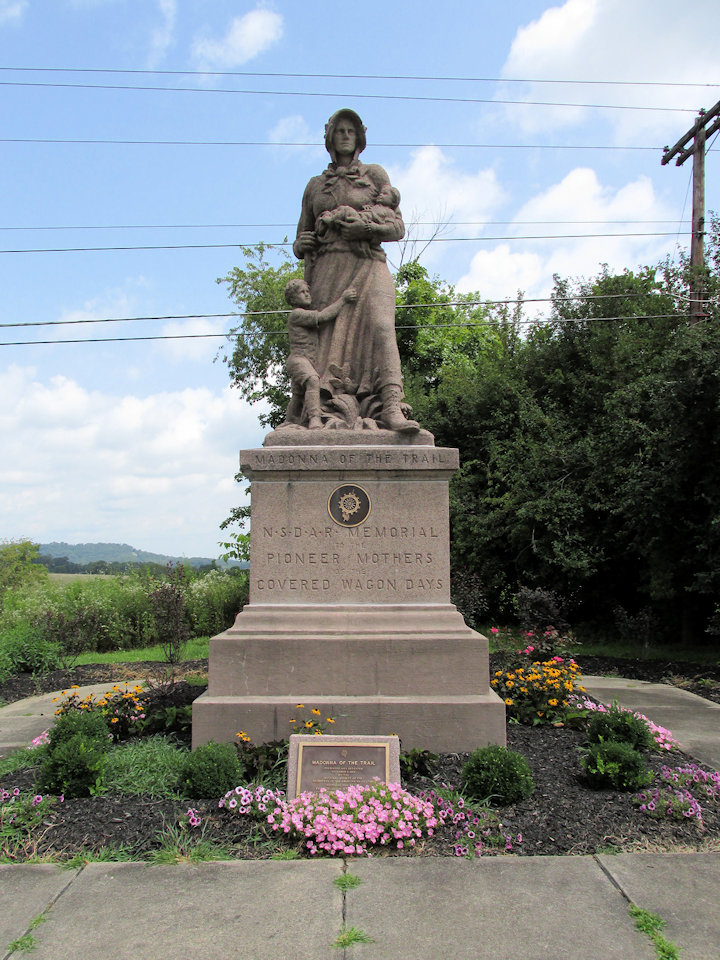
One of the things I wanted to do on this drive was photograph the Madonna of the Trail statues in each state.
https://en.wikipedia.org/wiki/Madonna_of_the_Trail
In the early 1900s, a series of 12 statues honoring the bravery of the pioneer women were erected in
12 states along the path of the National Road from Maryland to California.
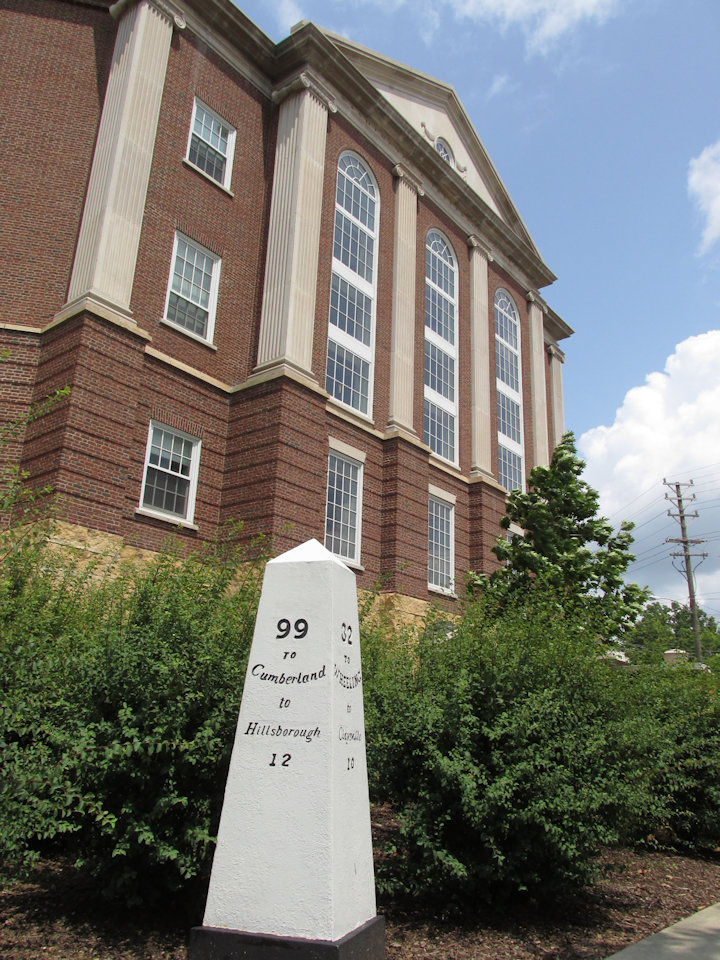
Part 2: Washington, PA to Vandalia, IL
August 2017
In August 2017, I attended the retirement ceremony of a Judge Advocate General I worked for when I was a Paralegal in the US Air Force. Instead of taking the Interstate 600 miles to Scott Air Force Base, Illinois (just east of St Louis, MO), I decided to take a leisurely two days getting there on old Rt 40, better known as the National Road. I would pick up where I left off on Part 1.

Let’s get started!
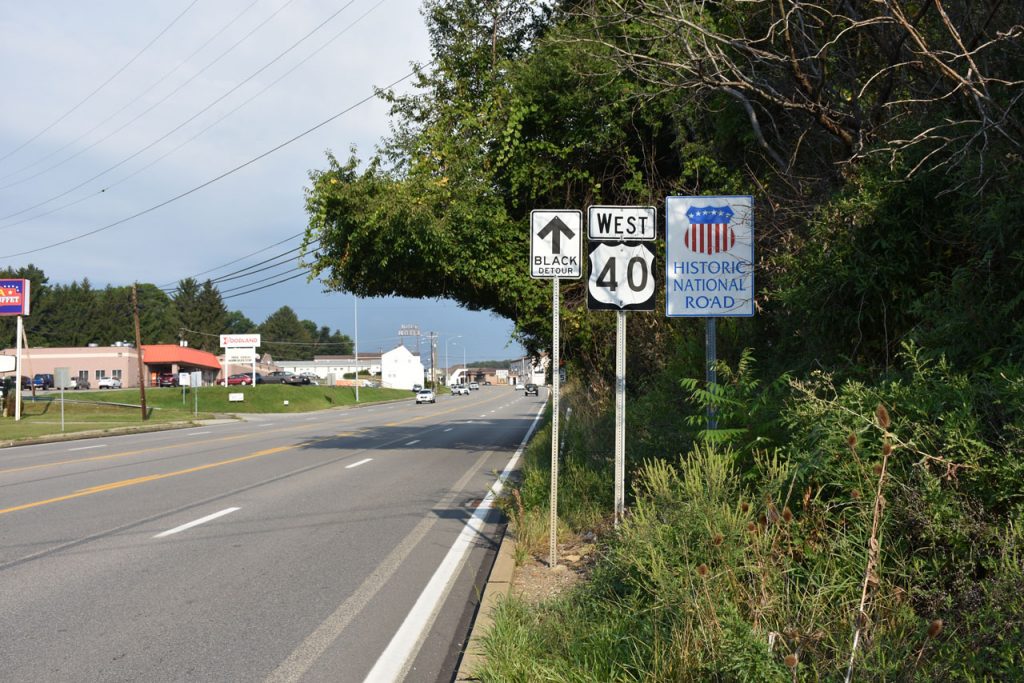
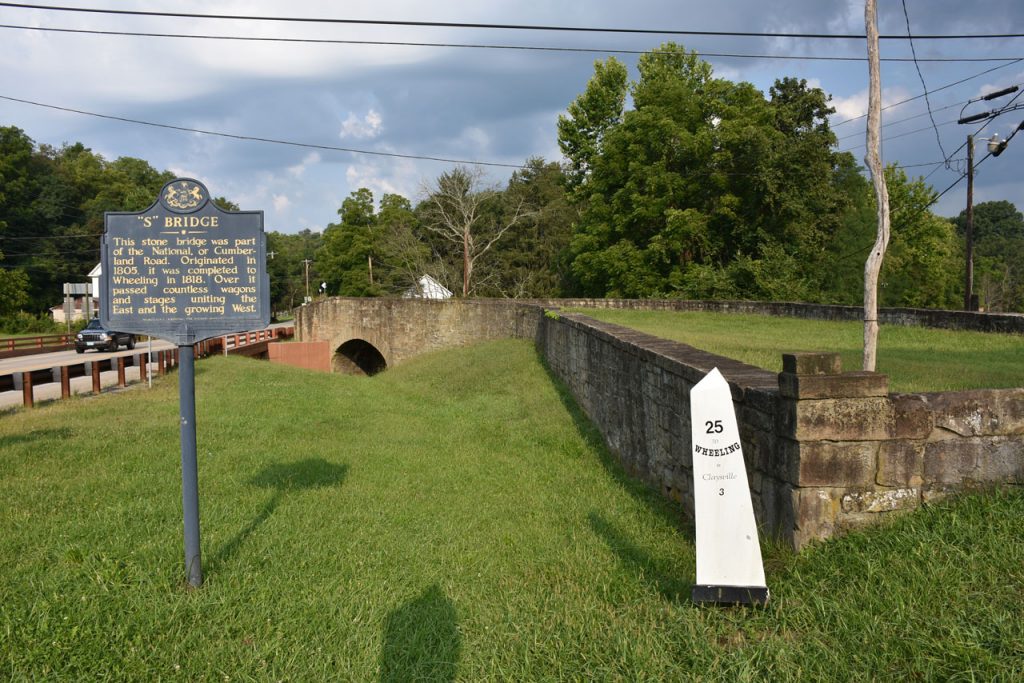
Why “S”? The creek is at an angle. If the road continued straight, it would need a longer (and more expensive) arch across the water.
By adding a curve and going perpendicular to the creek, the arch could be much shorter.
Since most traffic at the time was horse and buggy, the curve was not a safety issue.
https://en.wikipedia.org/wiki/S_bridge
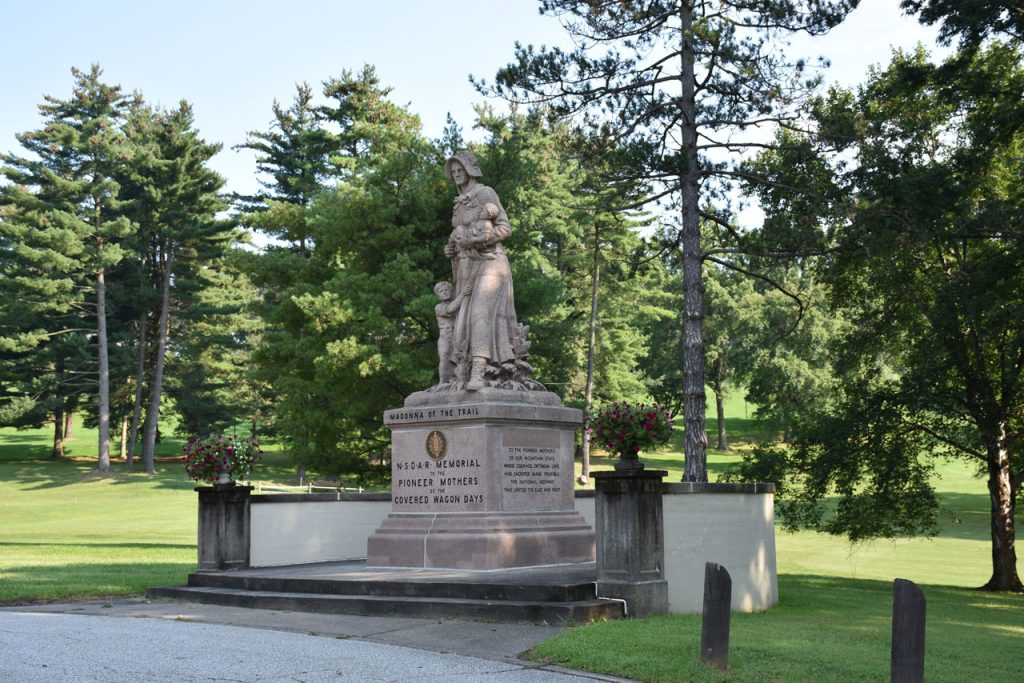
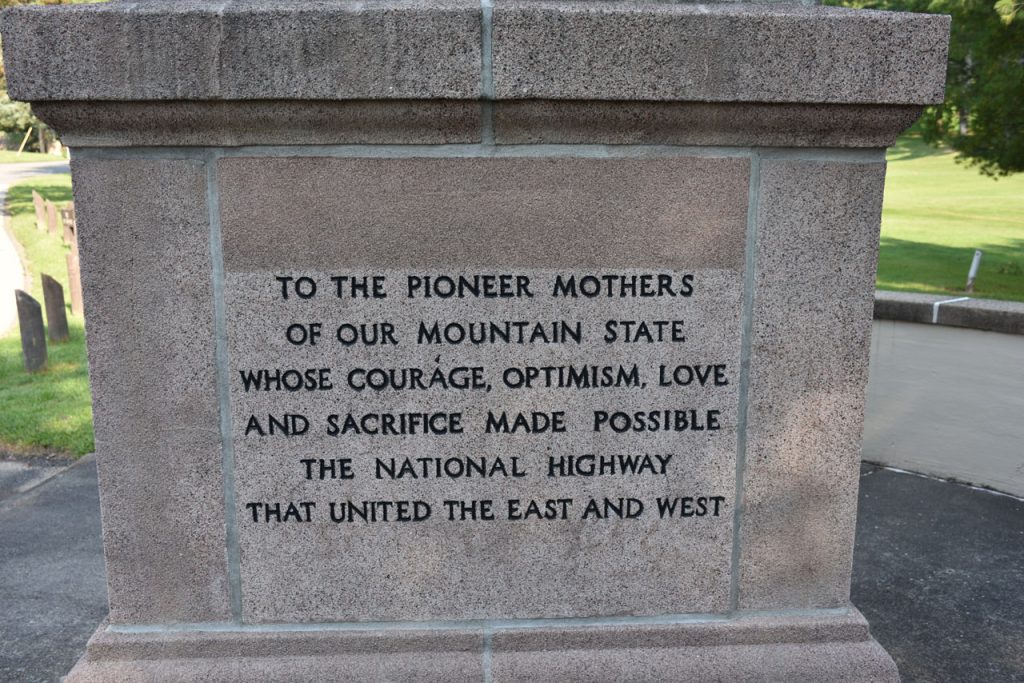
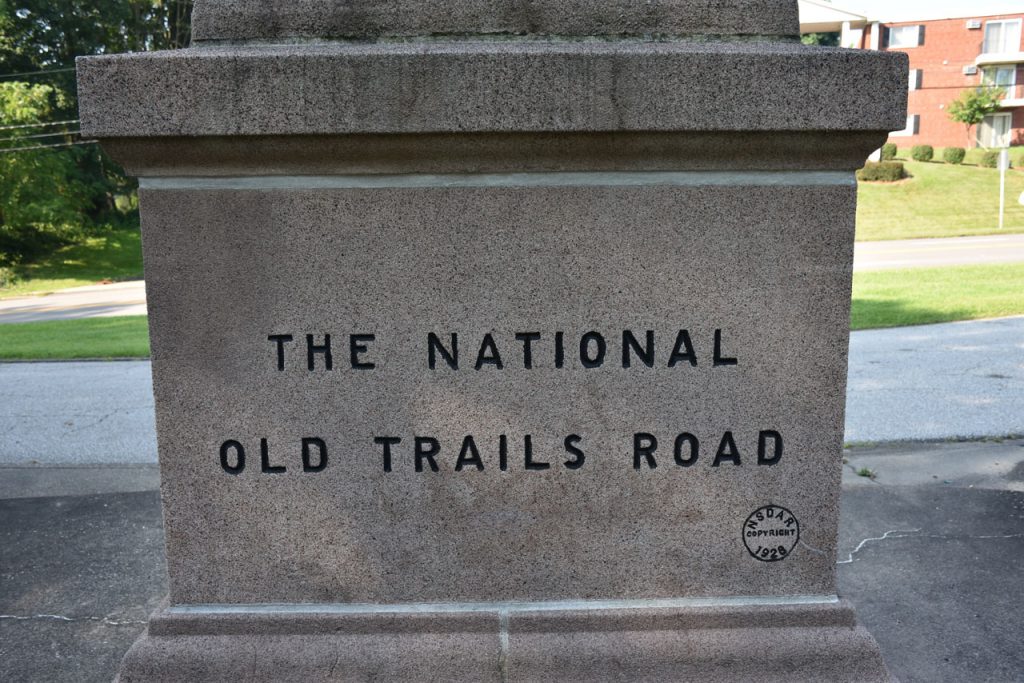
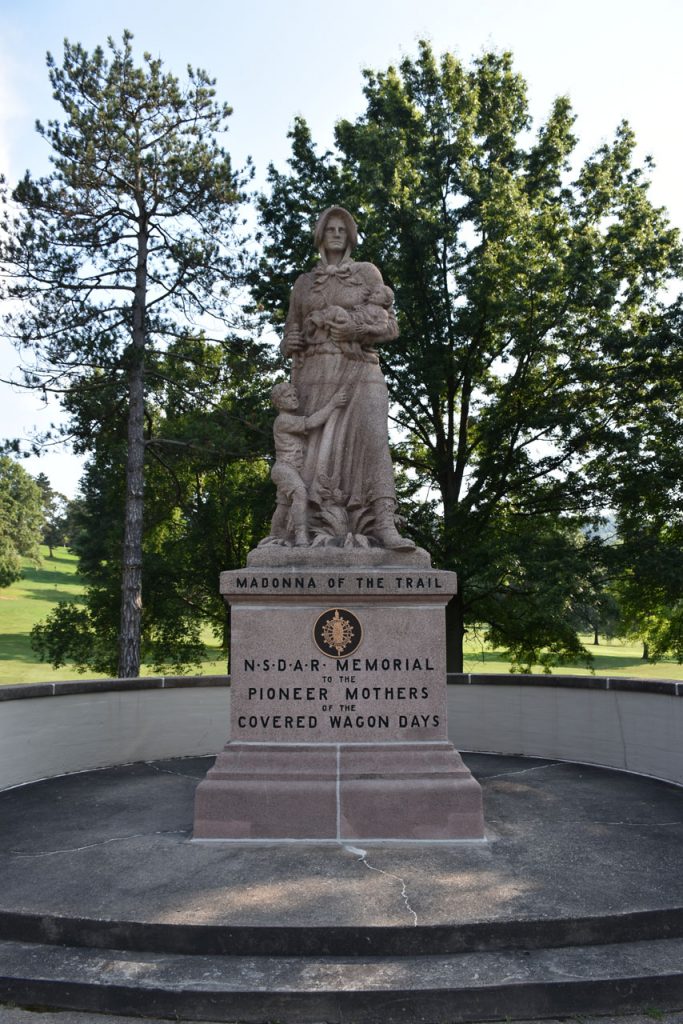
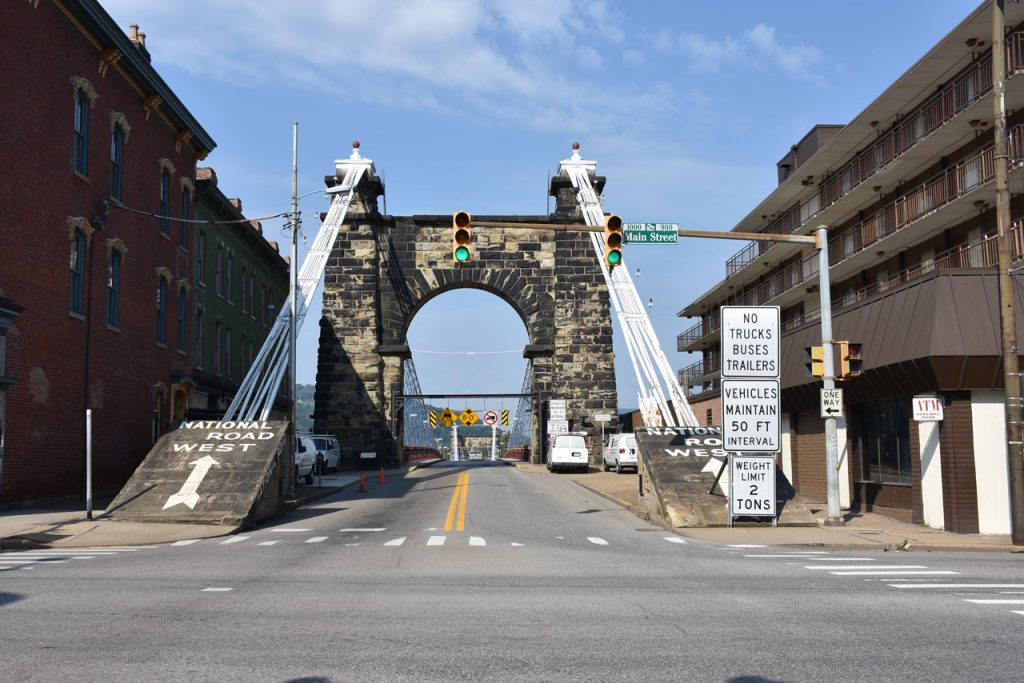
This is the historic Wheeling Suspension Bridge crossing into Ohio.
It was the world’s longest suspension bridge when completed in 1849.
https://en.wikipedia.org/wiki/Wheeling_Suspension_Bridge
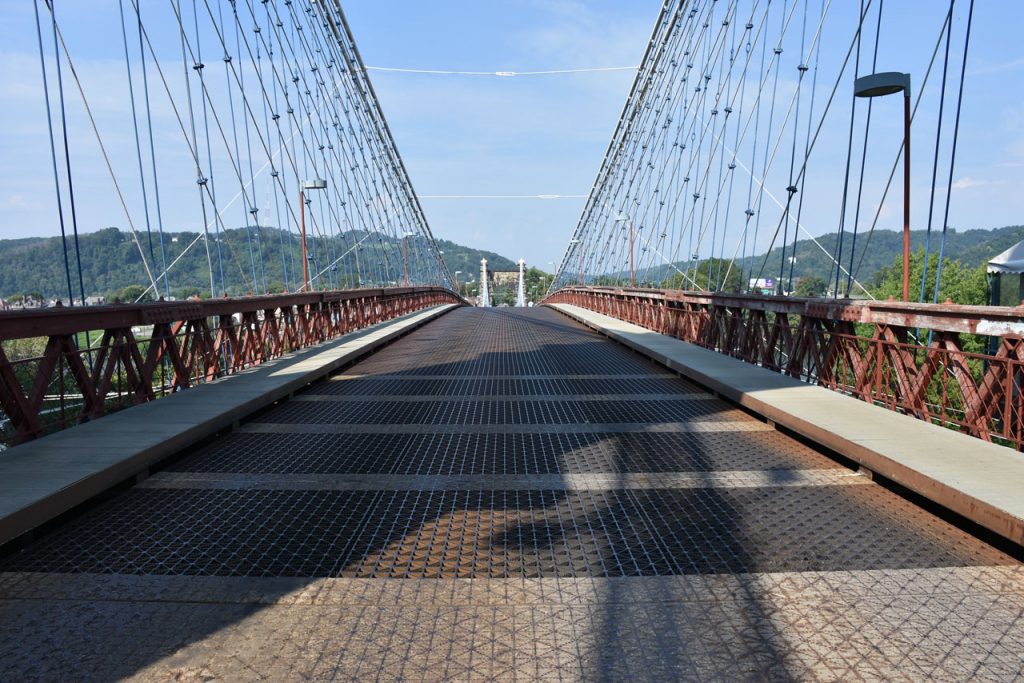
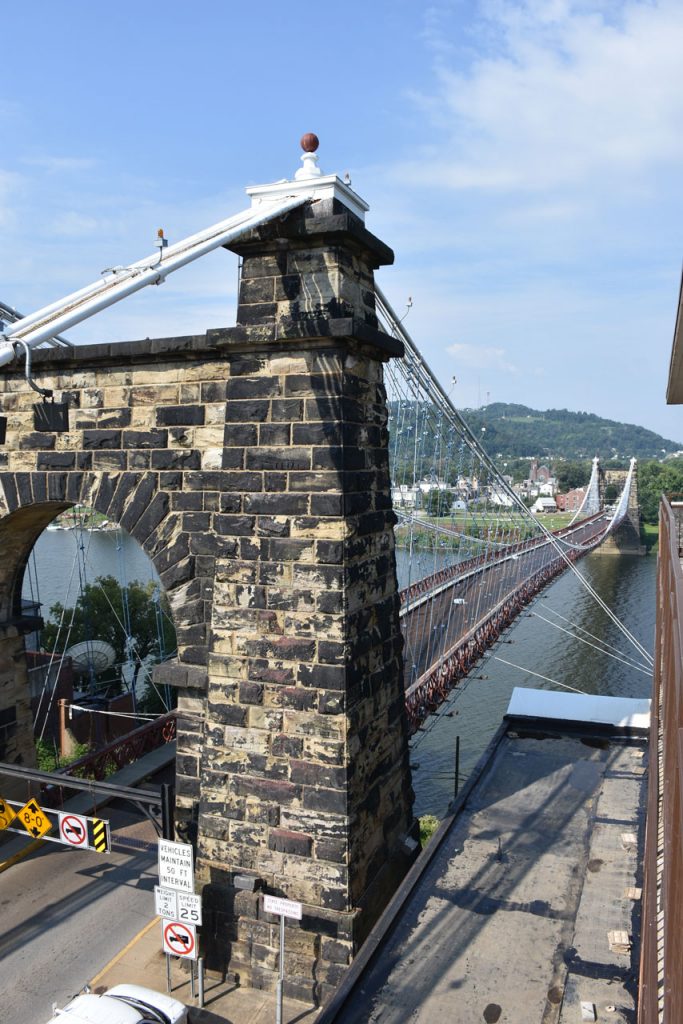
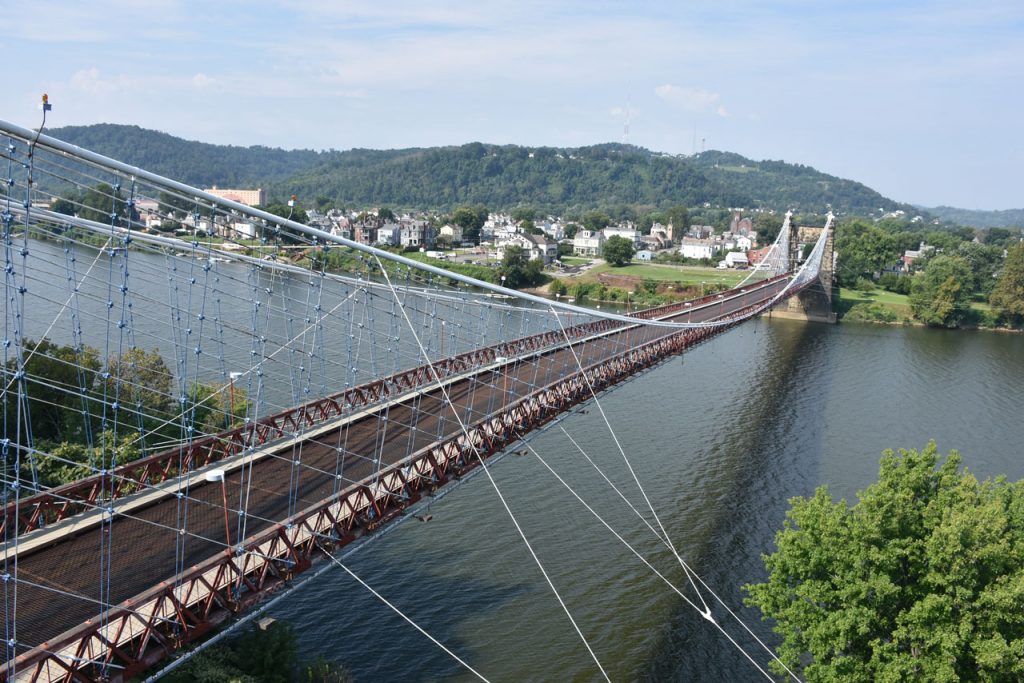
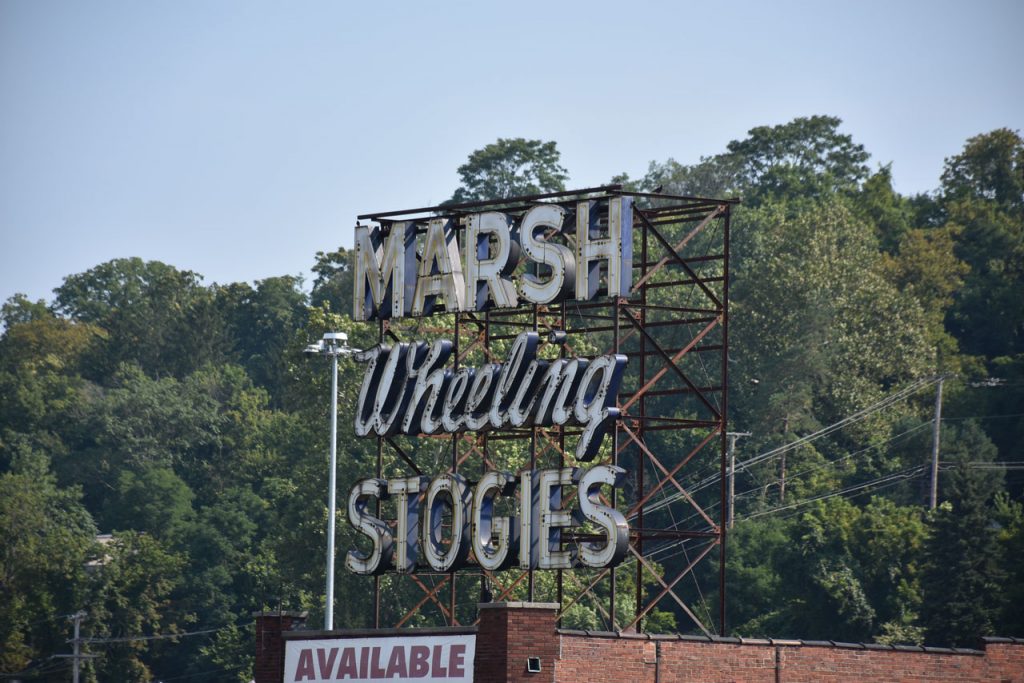
Marsh Wheeling was the oldest cigar manufacturer in the United States.
https://en.wikipedia.org/wiki/Marsh_Wheeling
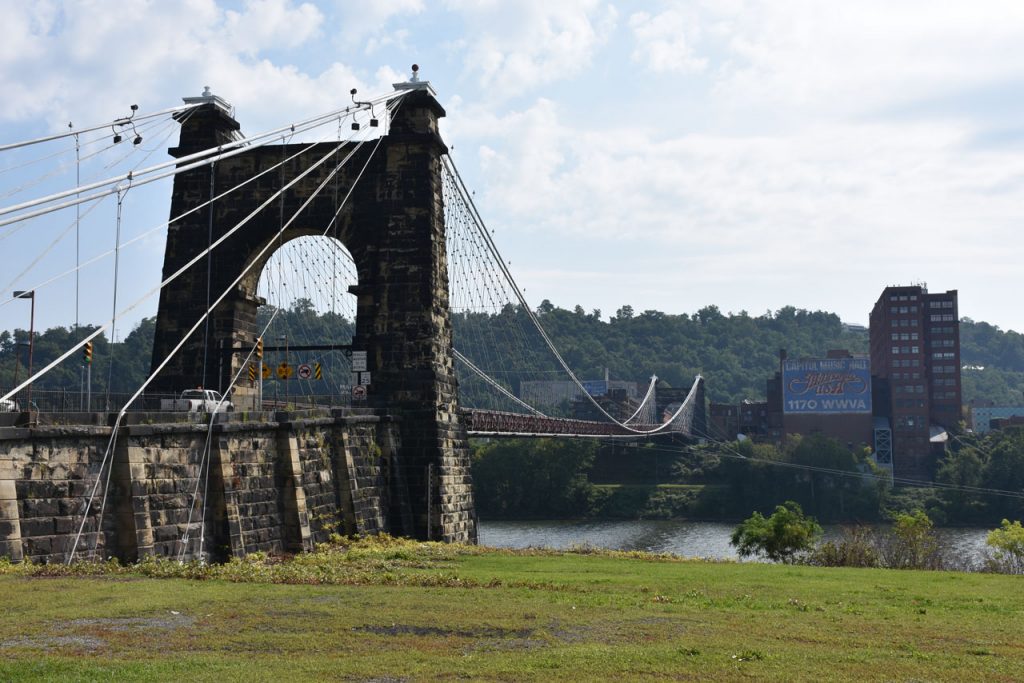
OHIO
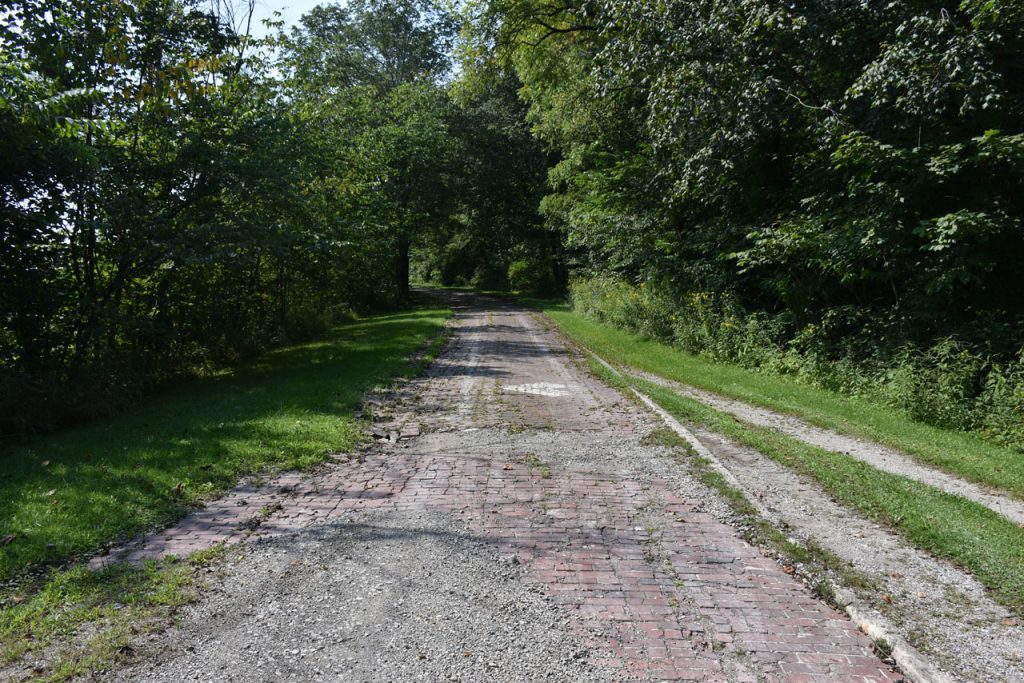
It was paved with bricks, many of which survive to this day.
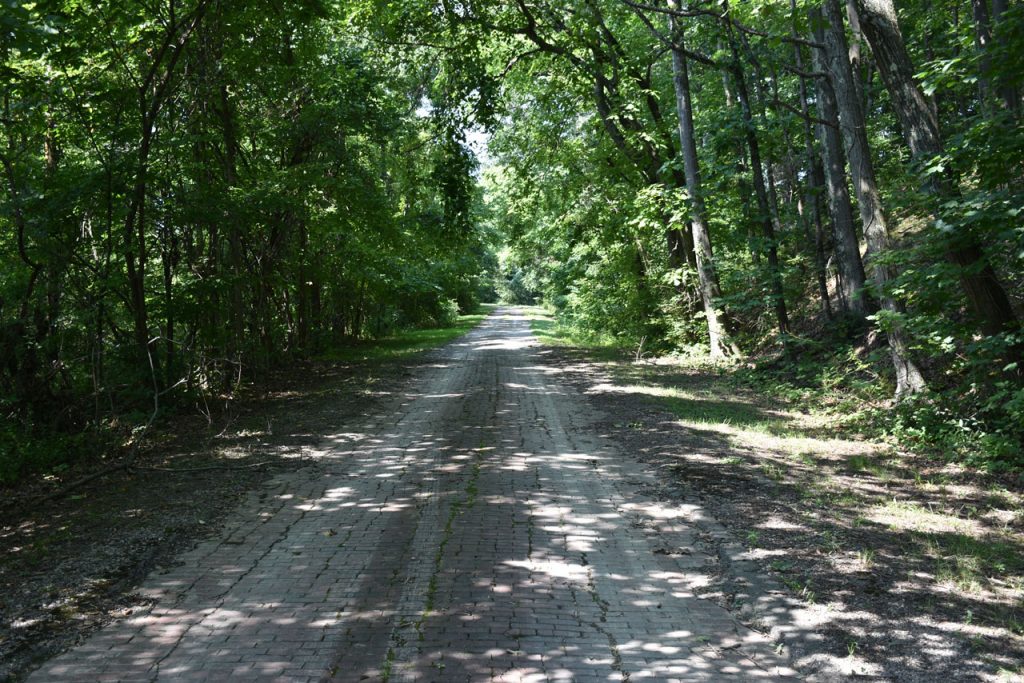
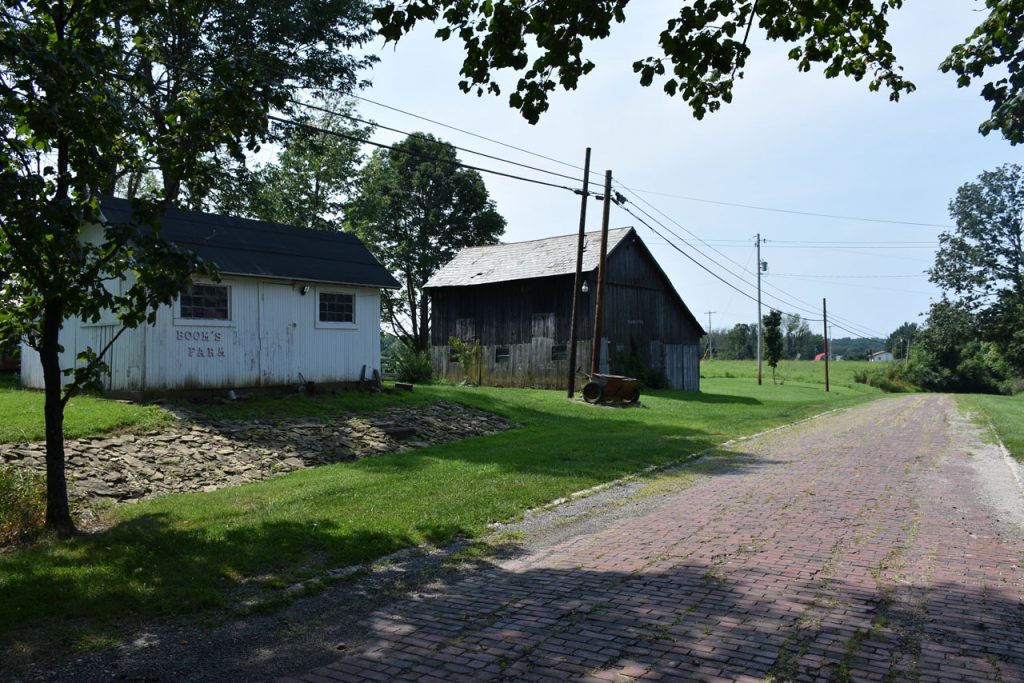
U.S. 40 Today
Thirty Years Of Landscape Change
Thomas R. Vale and Geraldine R. Vale
To prepare for this trip, I purchased the book “U.S. 40 Today” and marked spots I wanted to visit and photograph. Back around 1950, George R. Stewart drove cross country on Rt 40 and photographed numerous landmarks. Thirty years later, the Vales re-traced his route and photographed the exact same landmarks as closely to the original framing as possible. This showed a great deal of change in that 30 year span. I wanted to follow up and find some of those locations for new photographs.
The first was downtown Cambridge, Ohio.
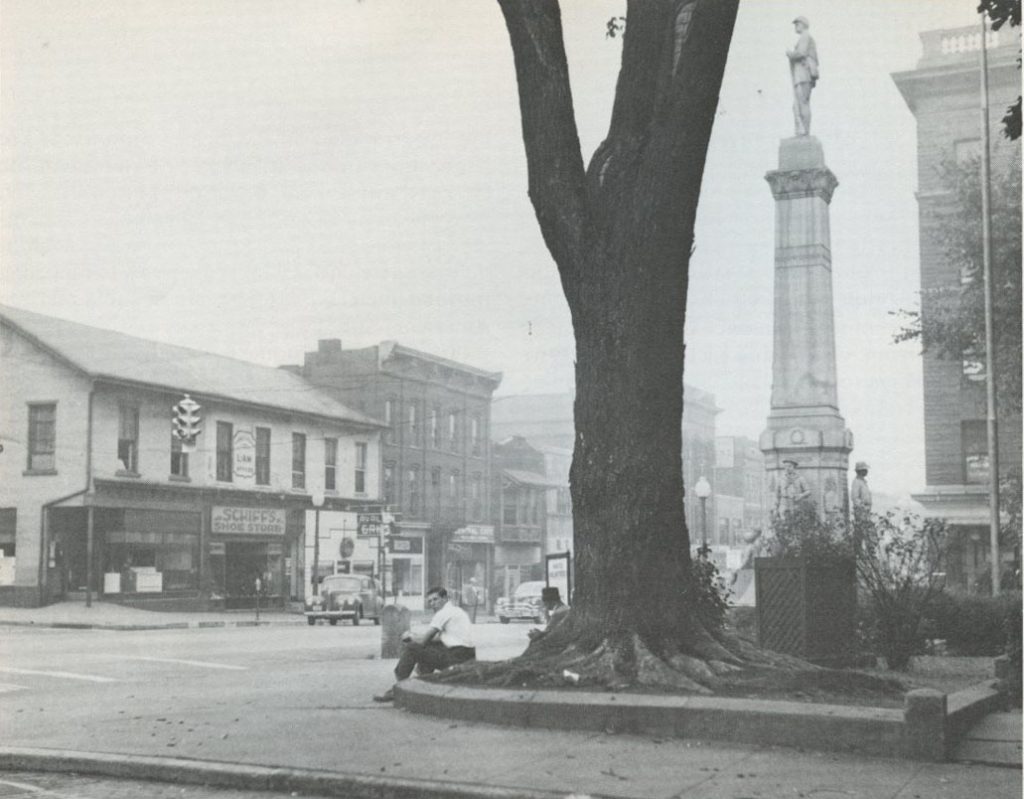
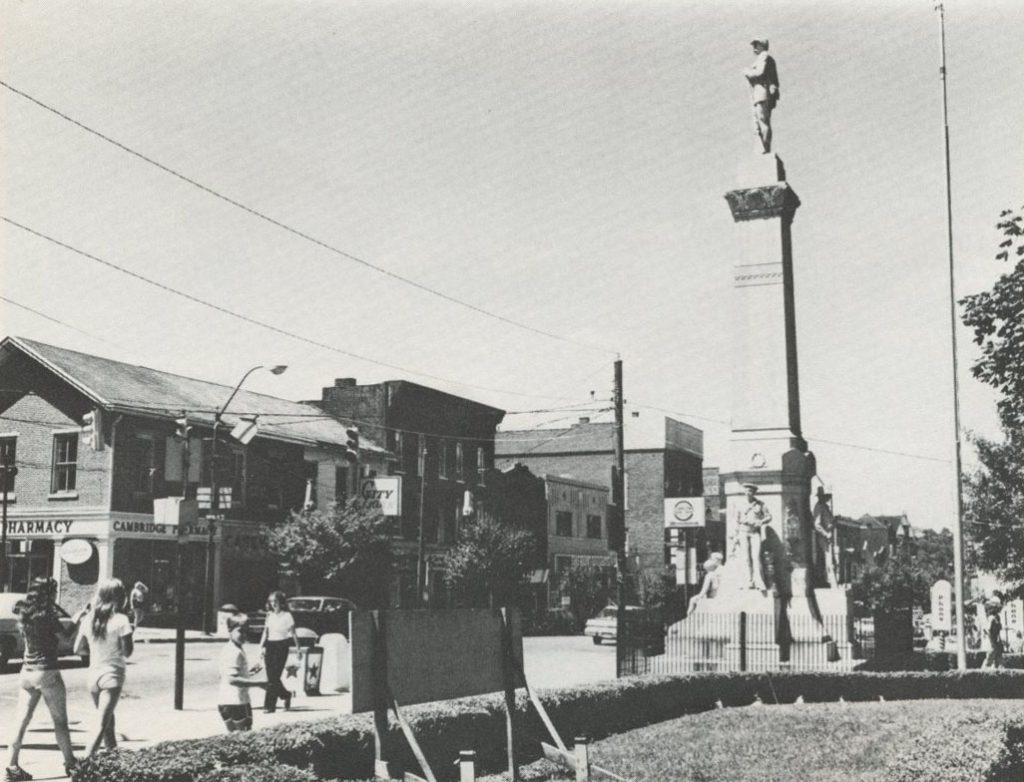
Cambridge, Ohio (Left, 1950, George R, Stewart) (Right, 1980, Thomas & Geraldine Vale)
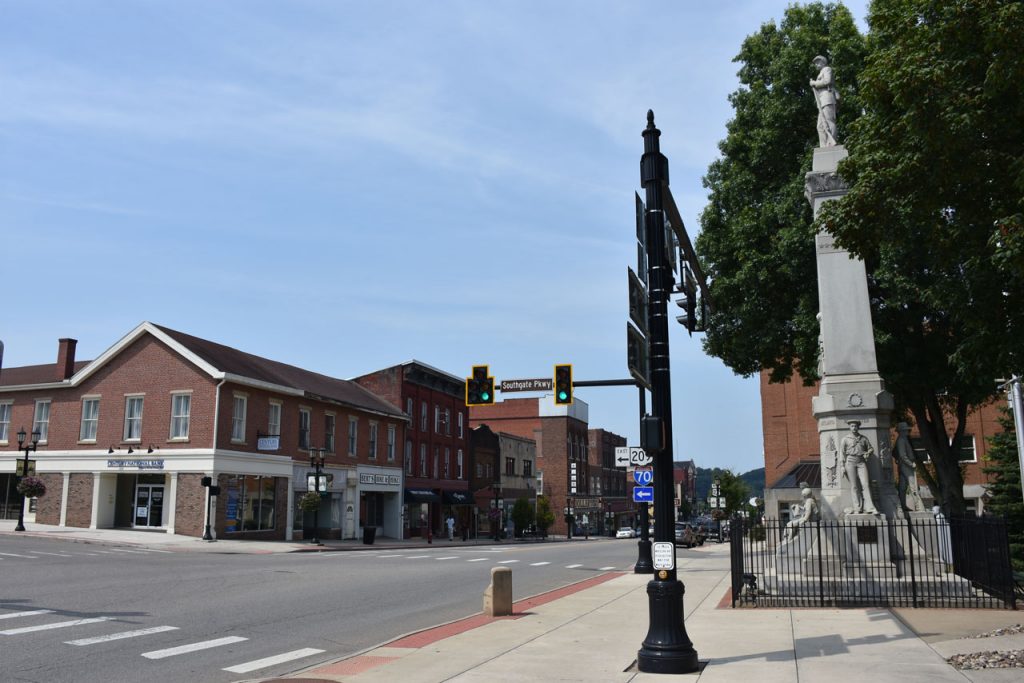
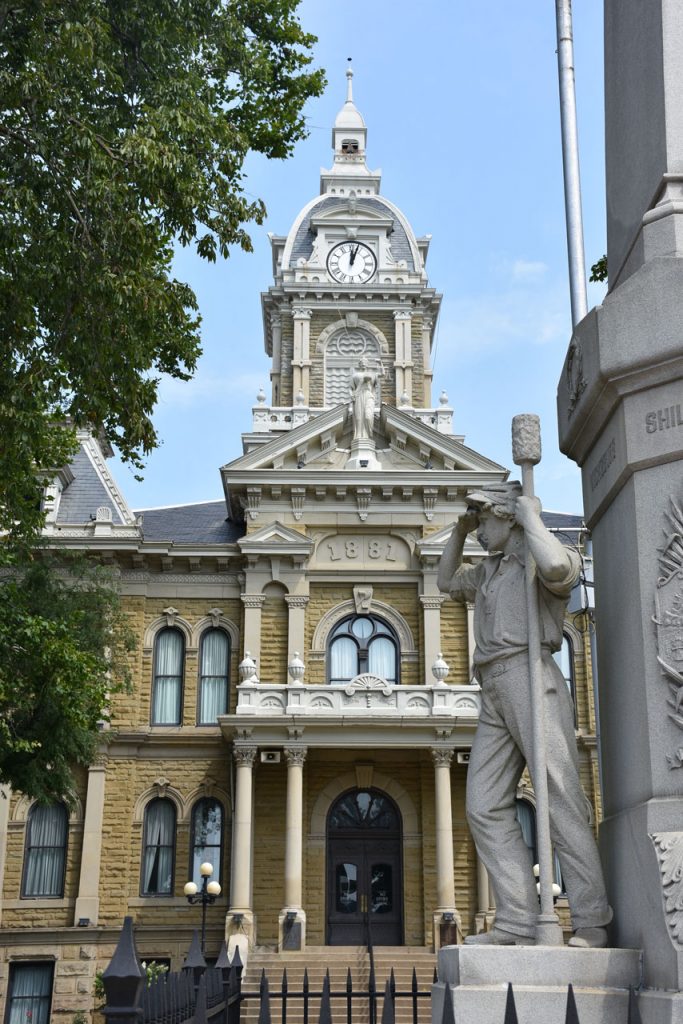
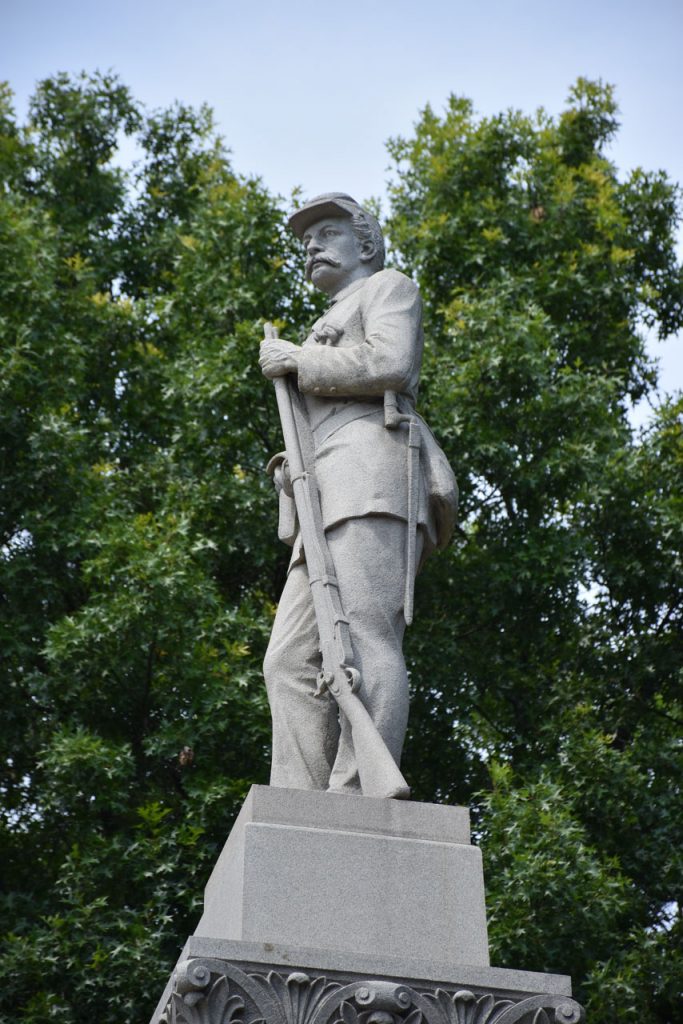
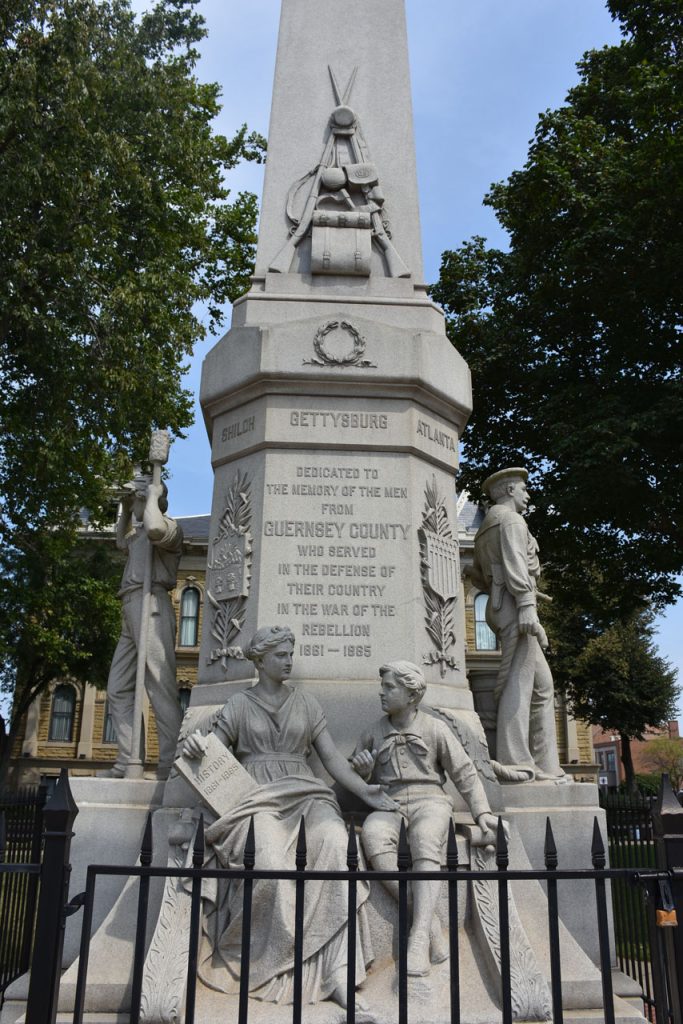
Scenes from the statue and the Court House.
A few miles west of Cambridge, there is another “S” Bridge.
This one was photographed by Stewart and the Vales in 1950 and 1980.
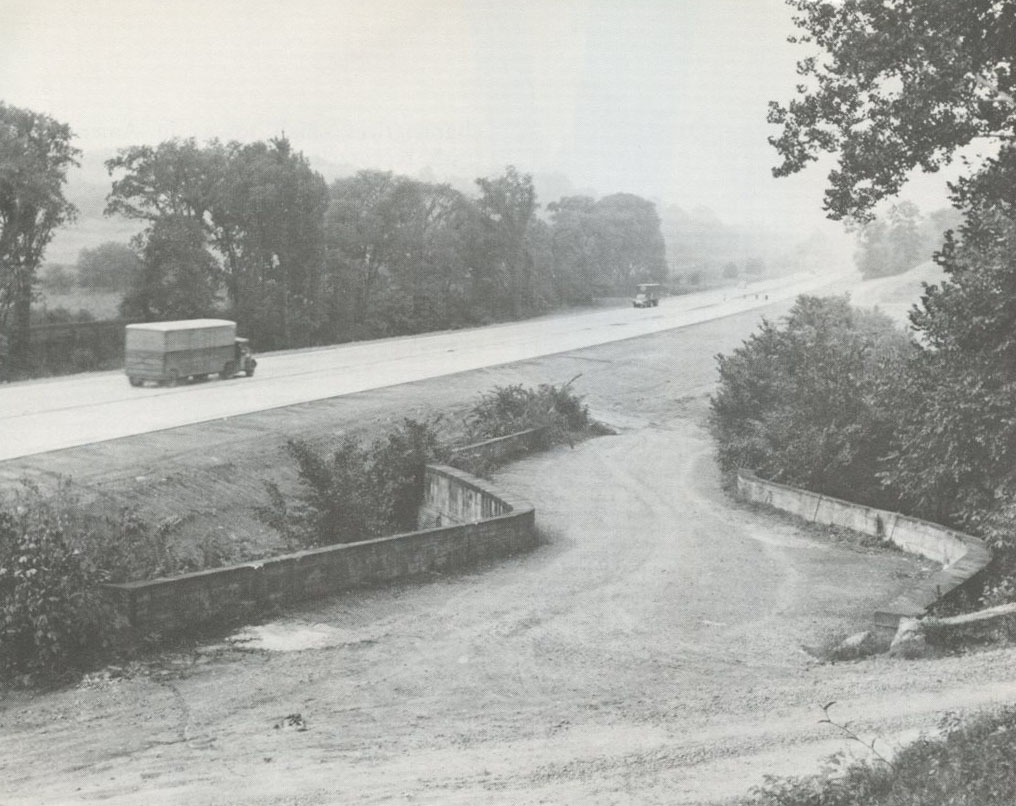
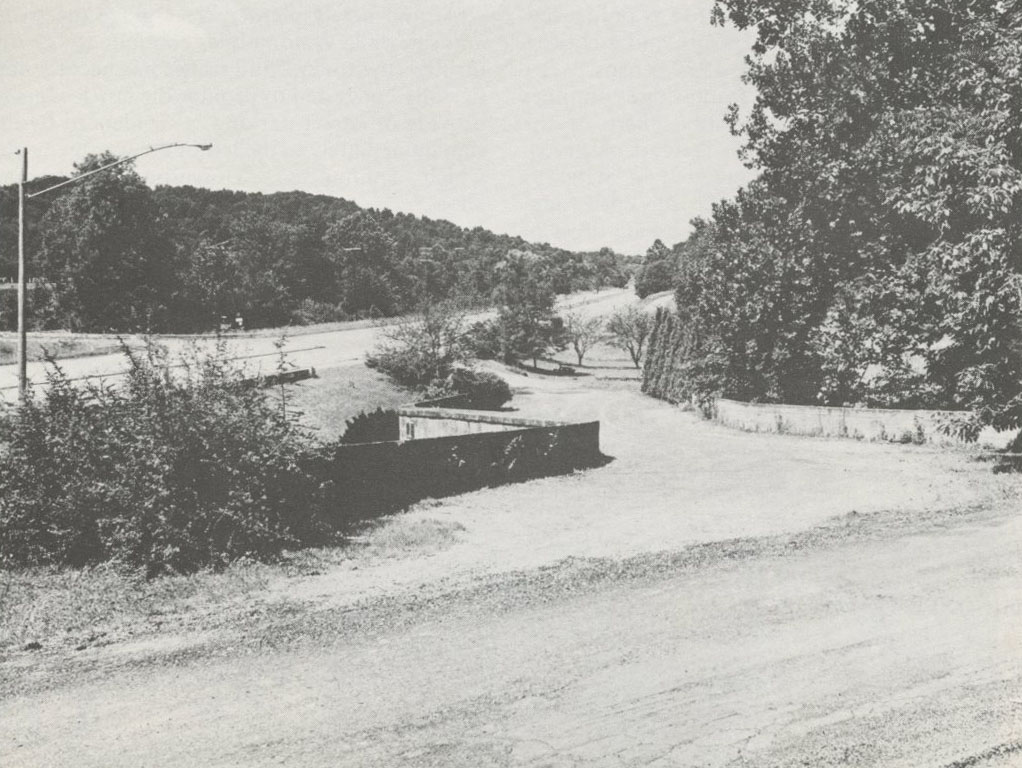
“S” Bridge at Fox Creek (Left, 1950, Stewart) (Right, 1980, Vales)
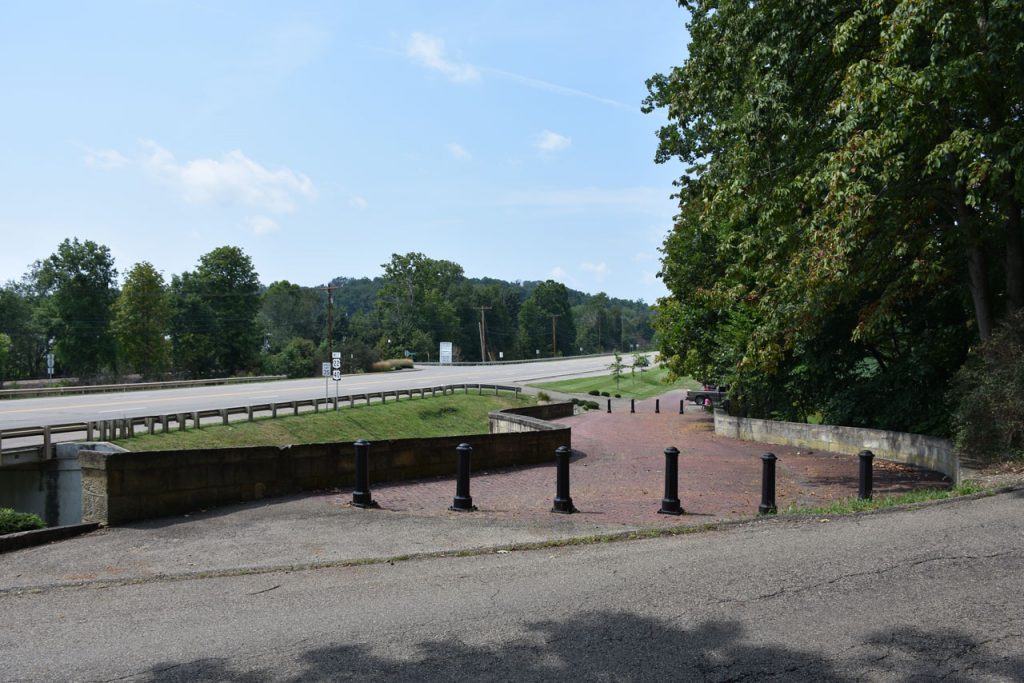
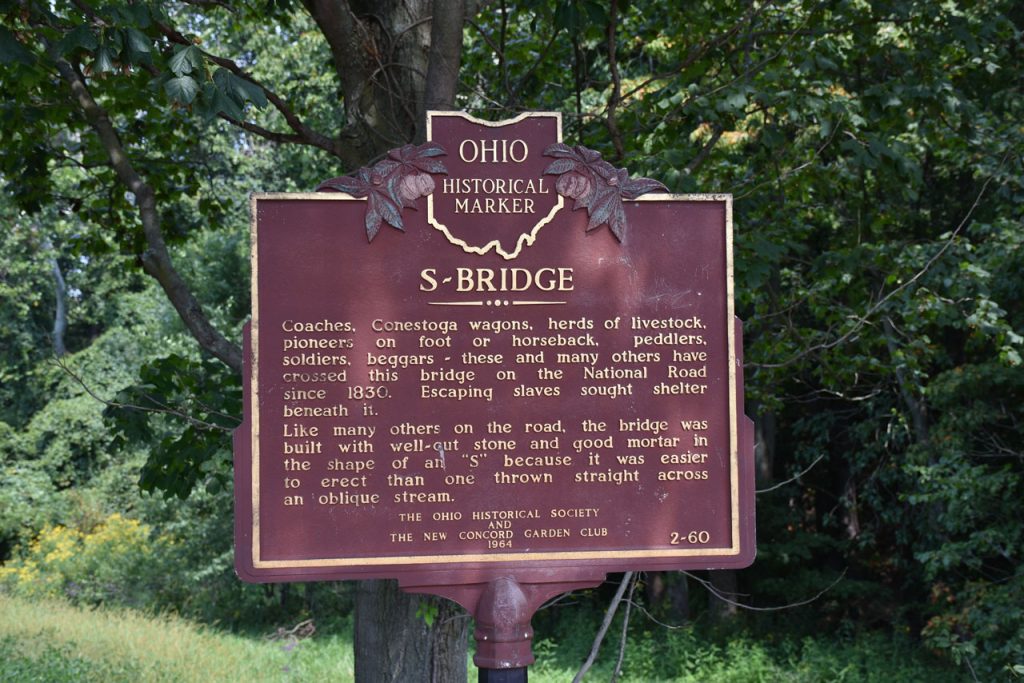
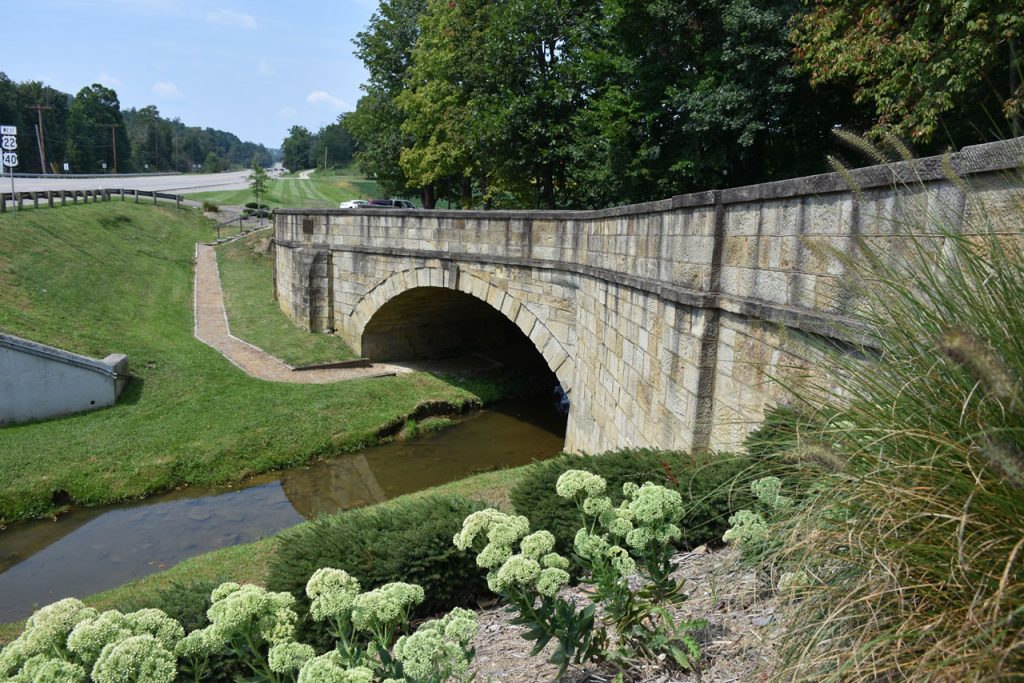
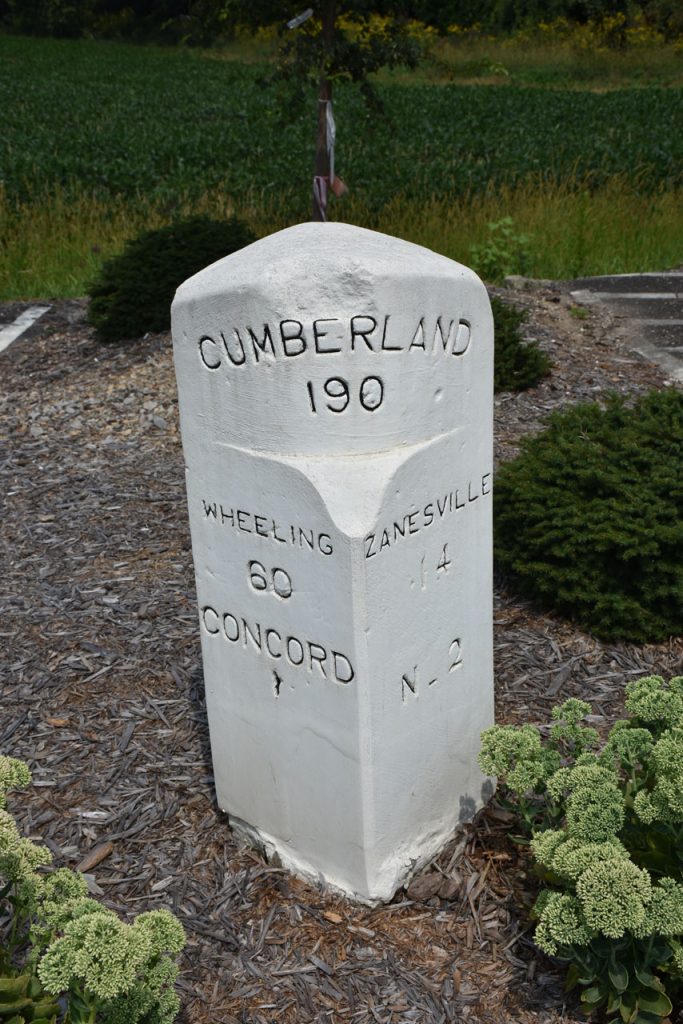
Shows 190 miles from Cumberland MD, 60 miles from Wheeling WV,
and 14 miles to go to Zanesville OH.
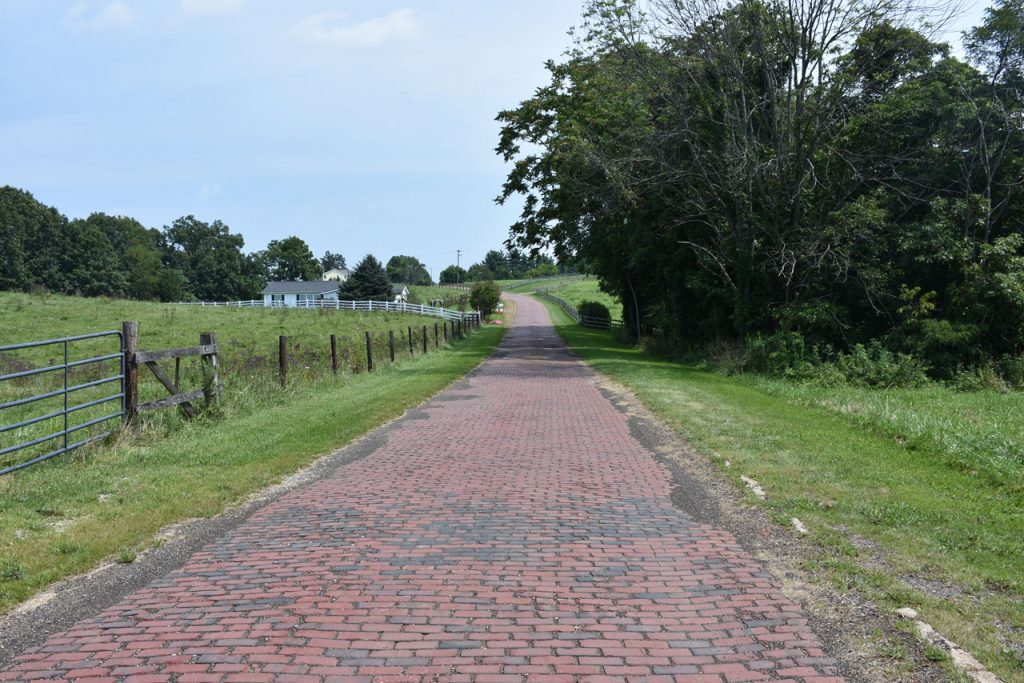
Paved in bricks – still looking good after 100 years.
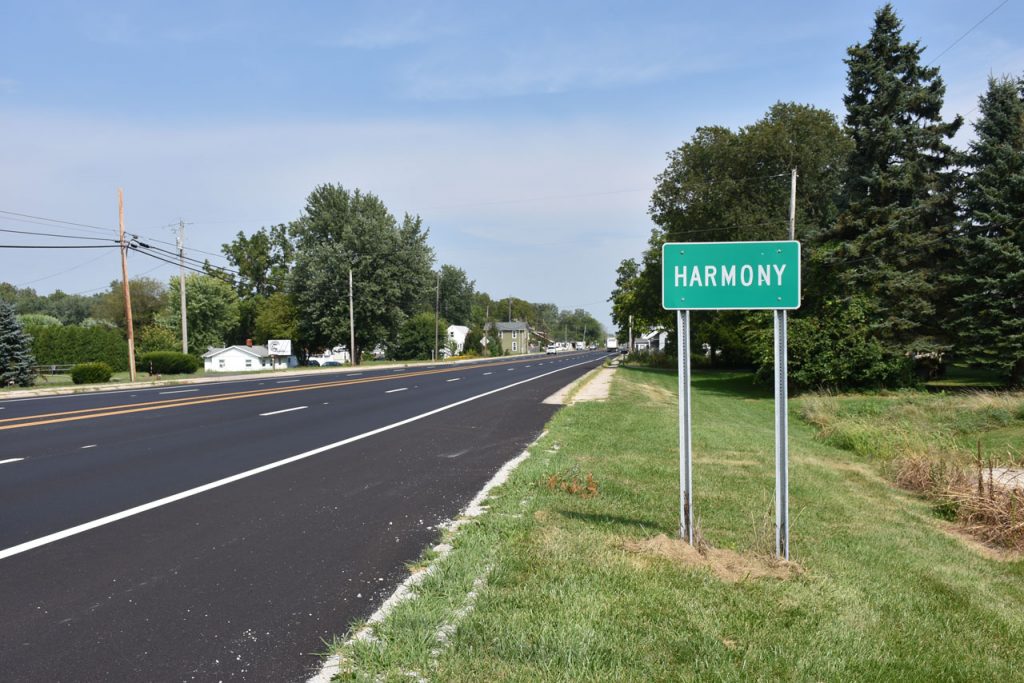
(Harmony OH)
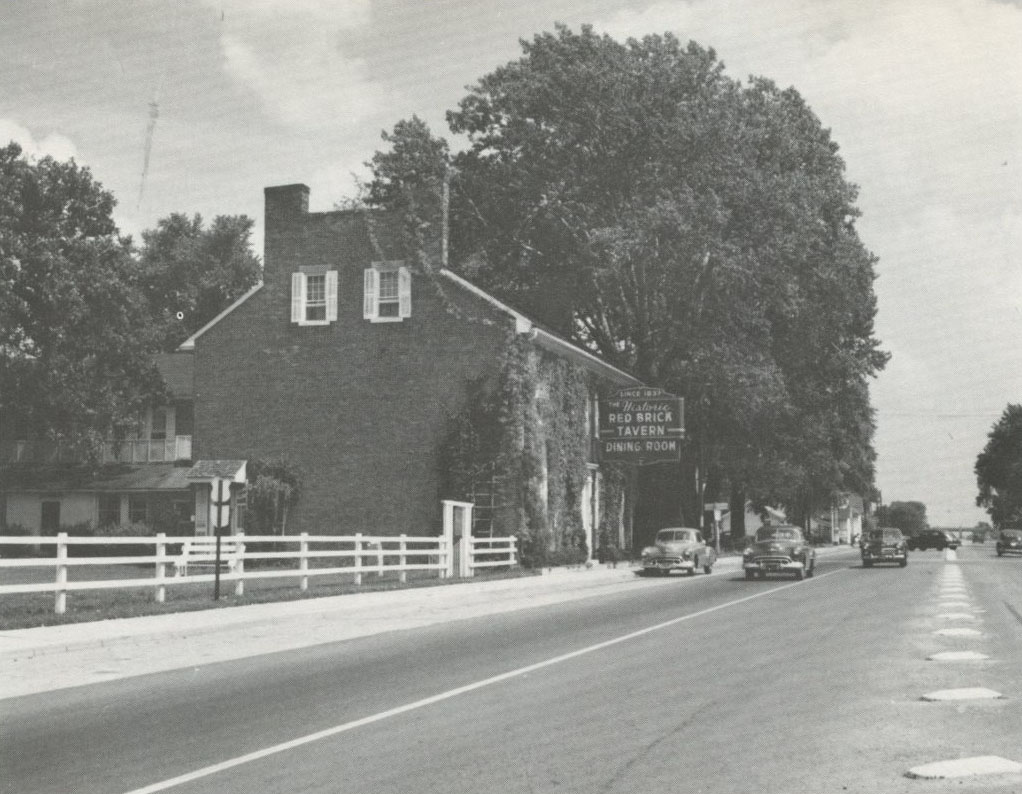
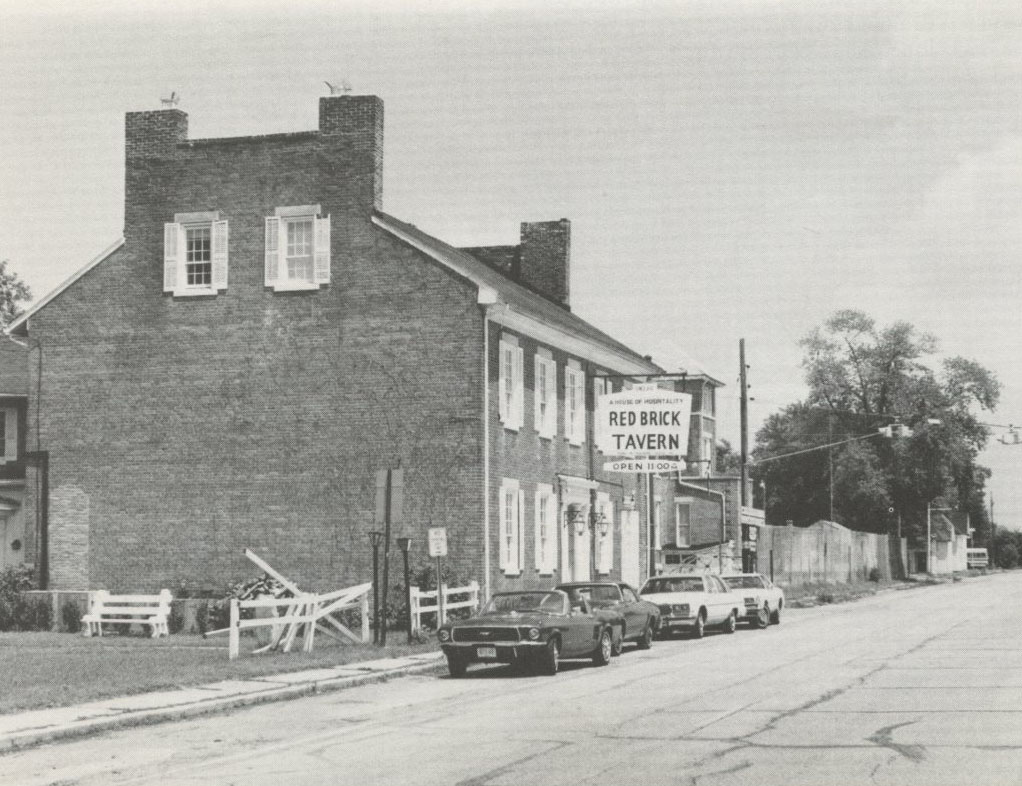
Located about 20 miles west of Columbus OH is the Red Brick Tavern. Built in 1837, it is the second oldest tavern in OH.
Five presidents from 1830-1850 dined here.
(Left, 1950, Stewart) (Right, 1980, Vales)


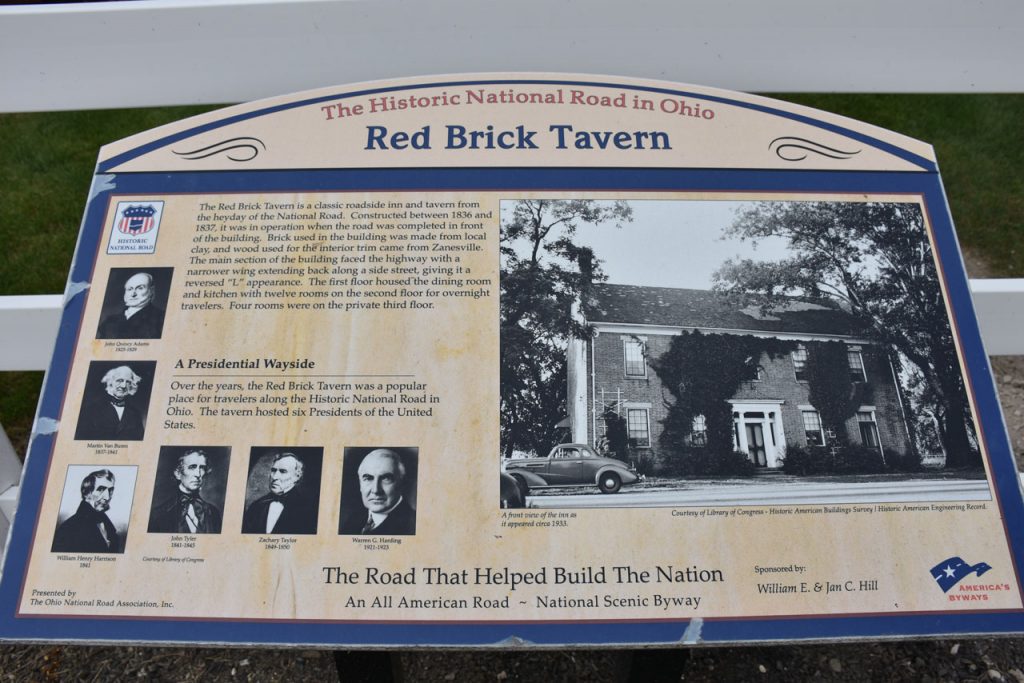
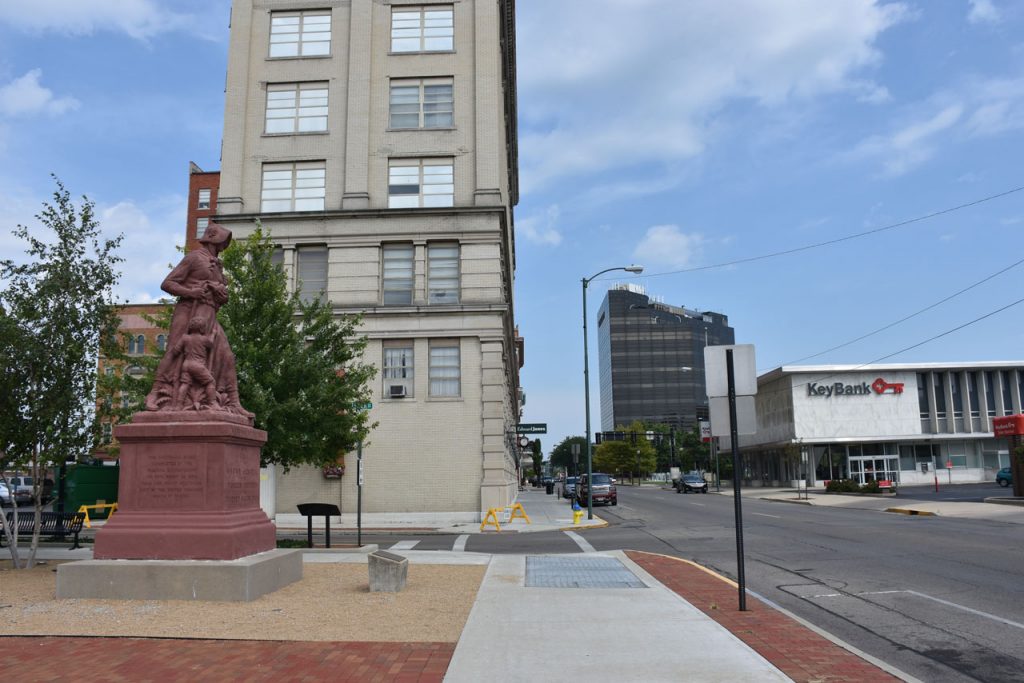
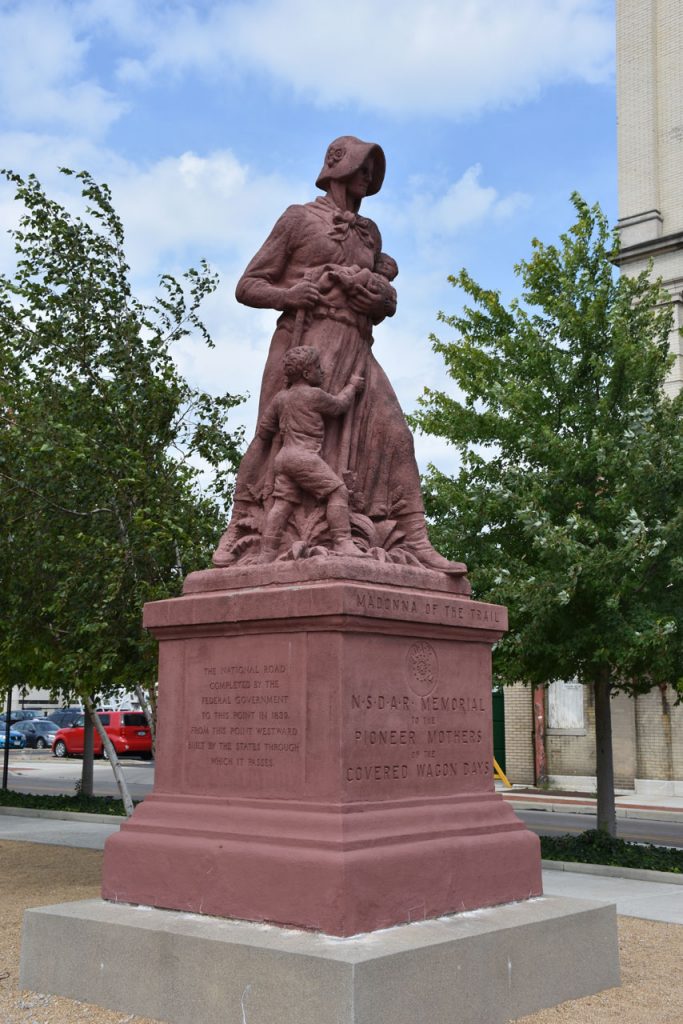

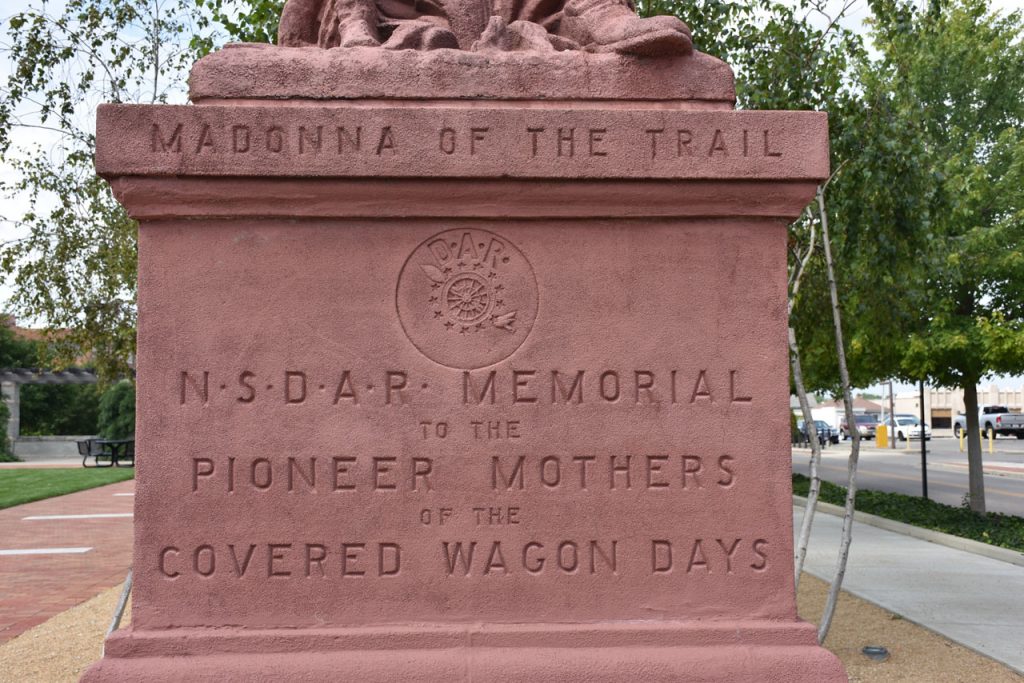
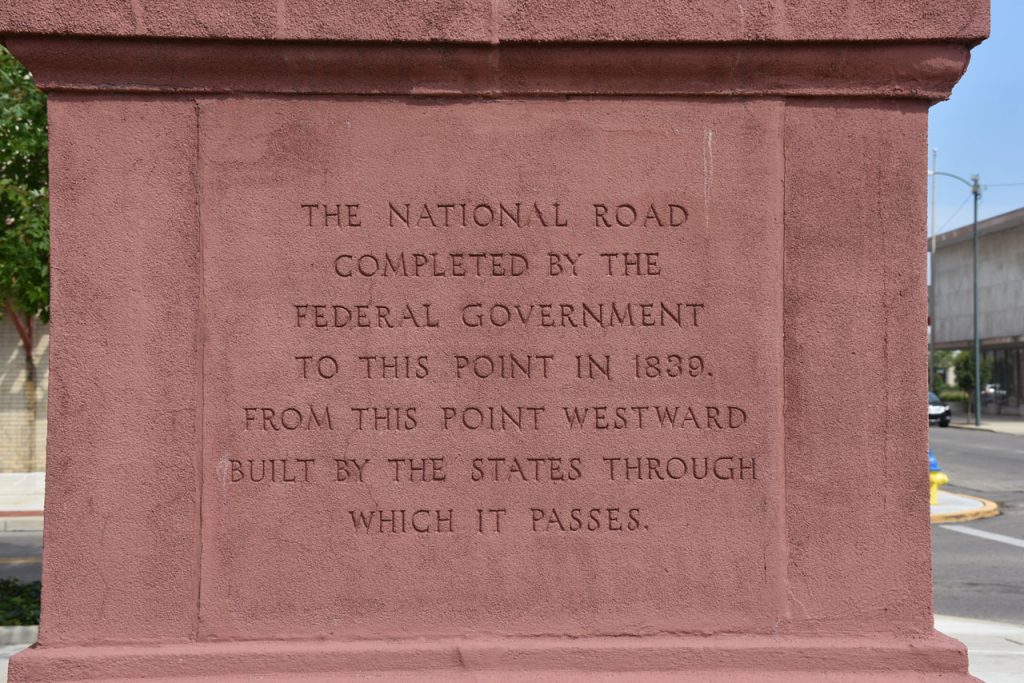
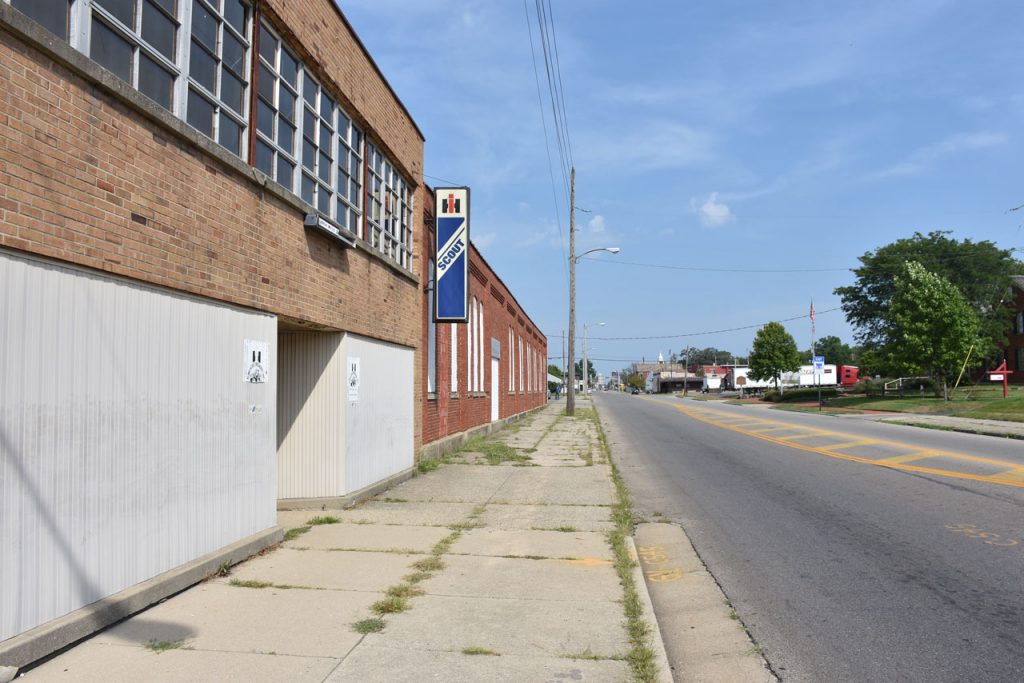
These trucks were quite popular when I was growing up in the 60s and 70s. They were “unbreakable”!
Unfortunately, International stopped selling “light duty” vehicles around 1980.
https://en.wikipedia.org/wiki/International_Harvester_Scout
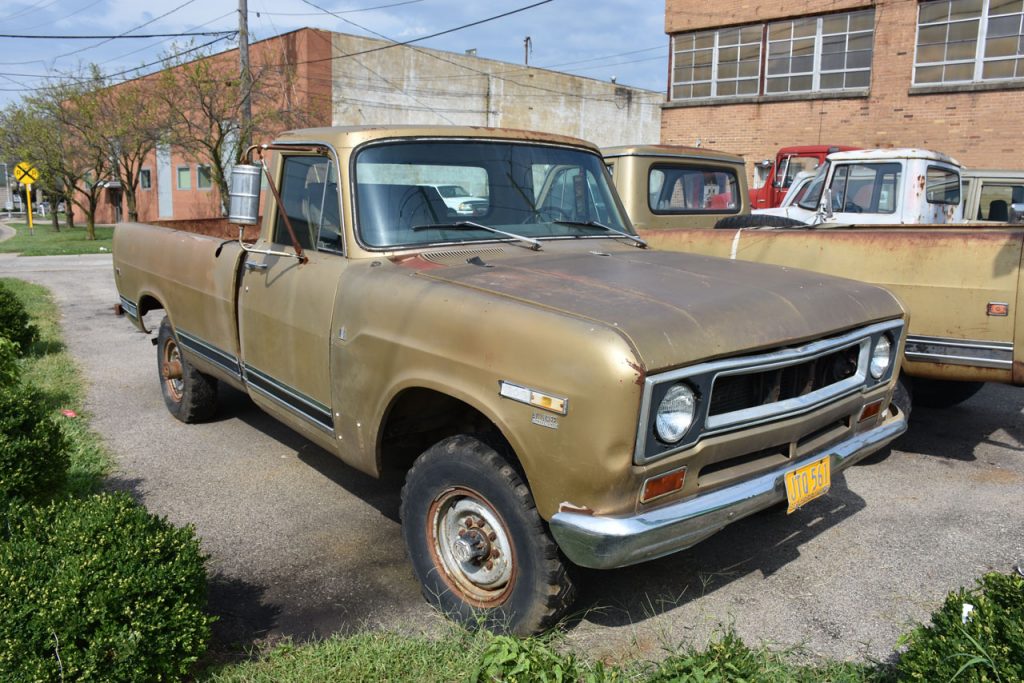
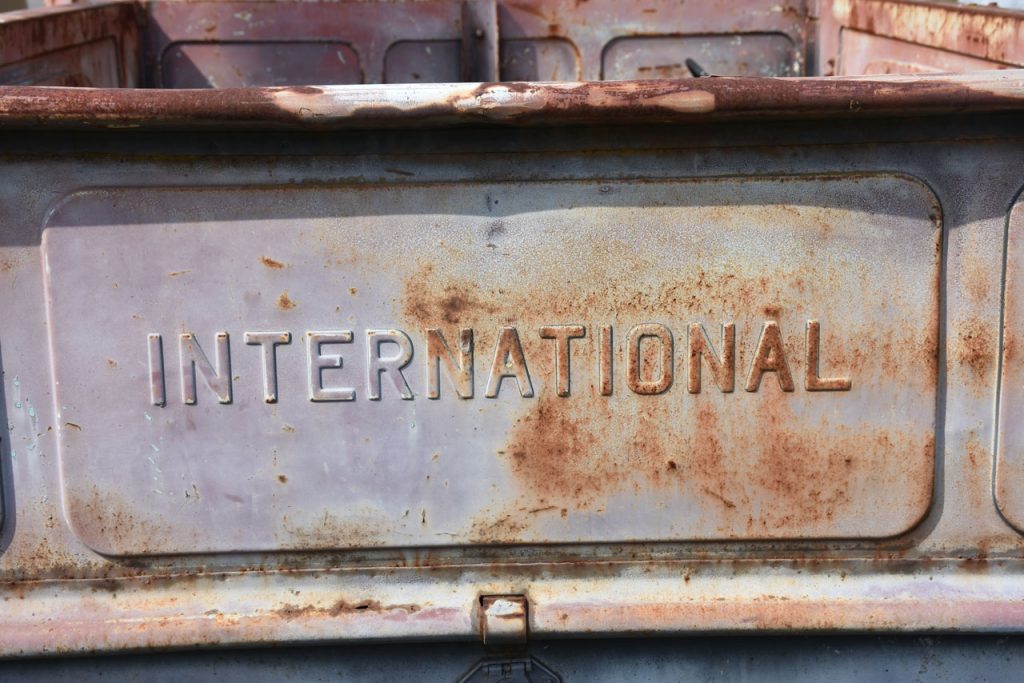
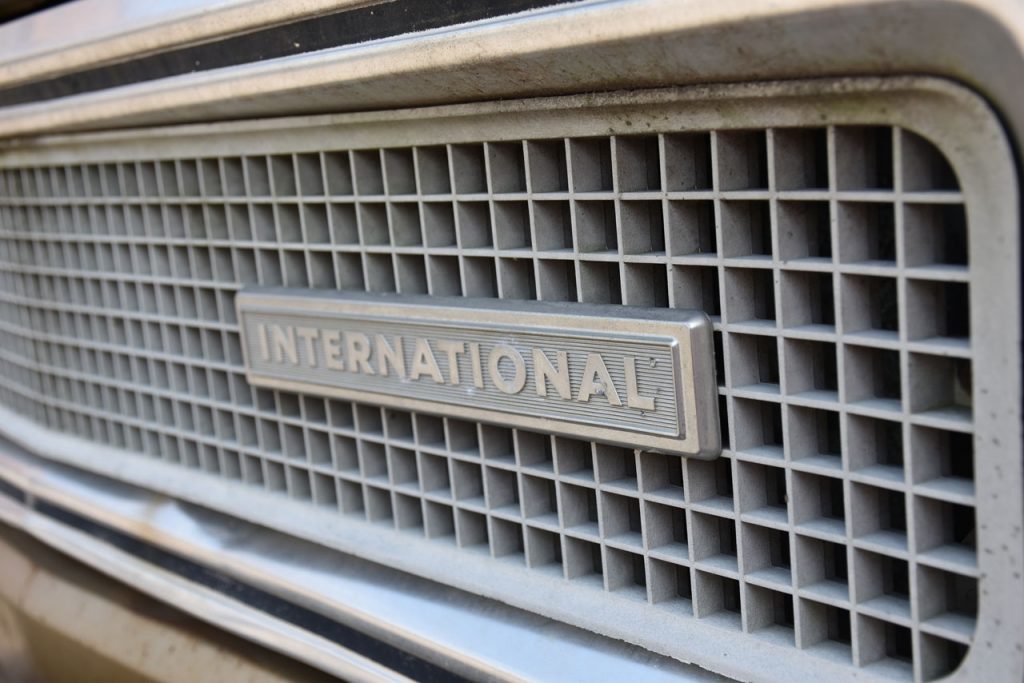
Then, it was back on the road again. Westward, ho!
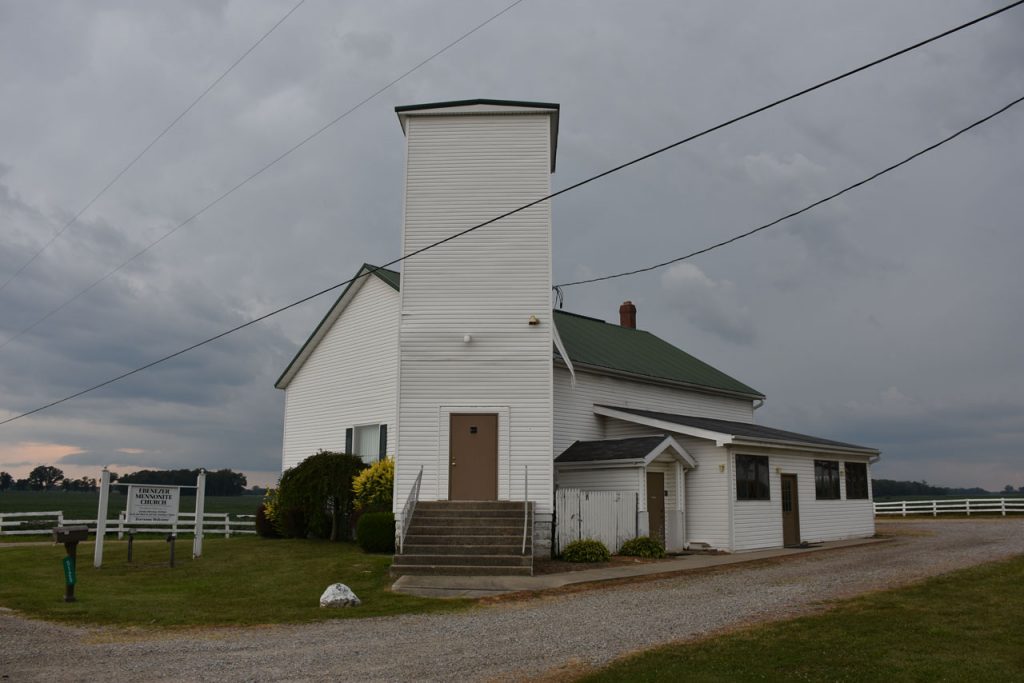
This is a Mennonite church near the Ohio/Indiana border on Rt 40.
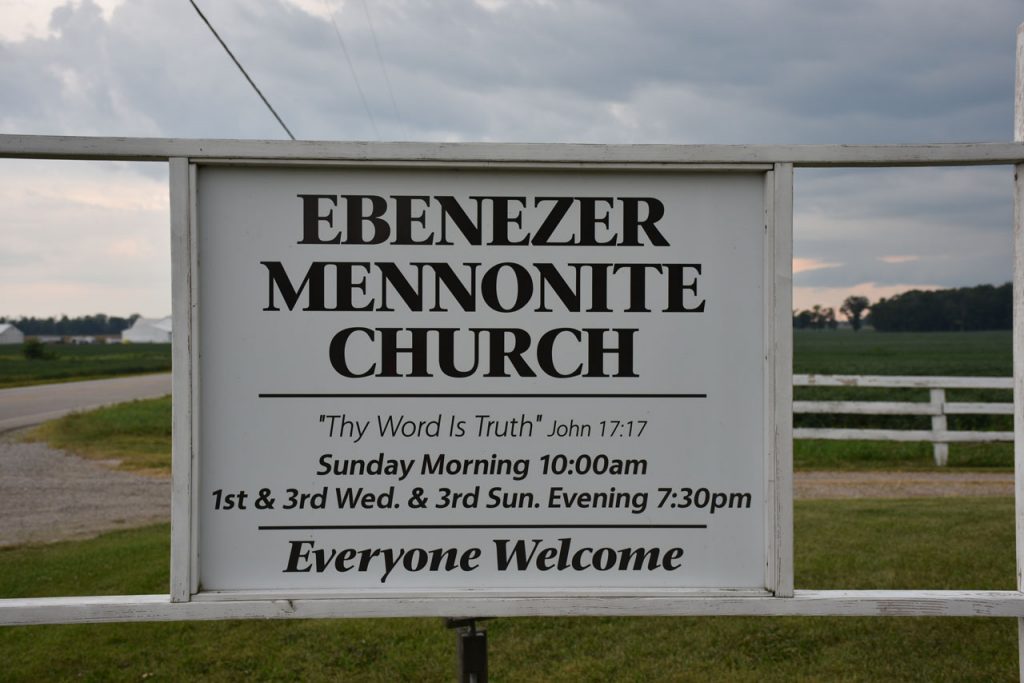
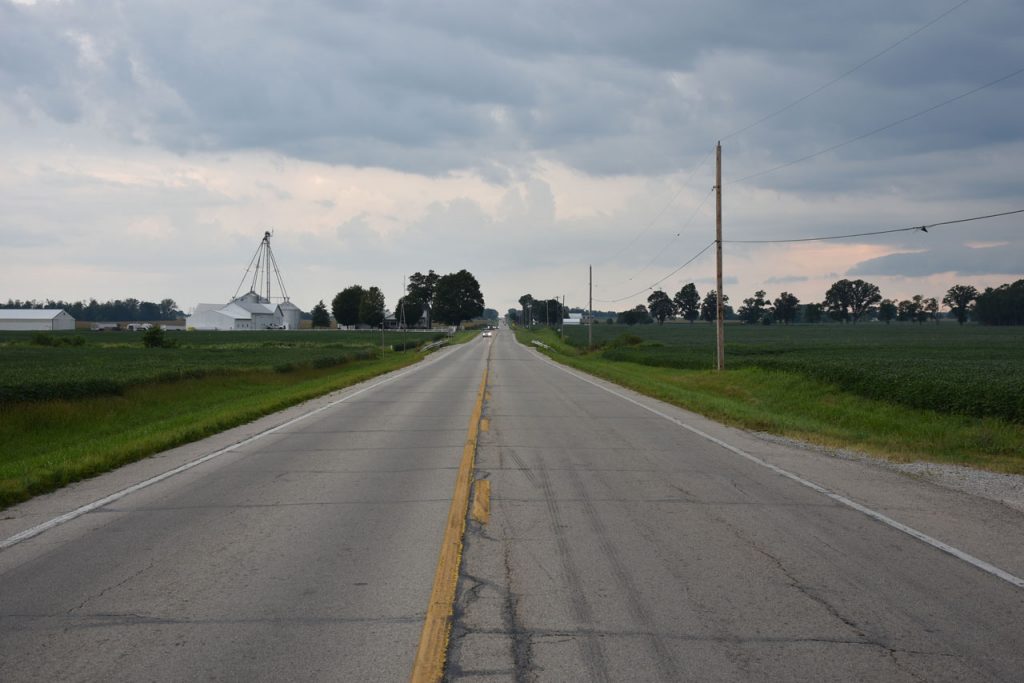
Indiana
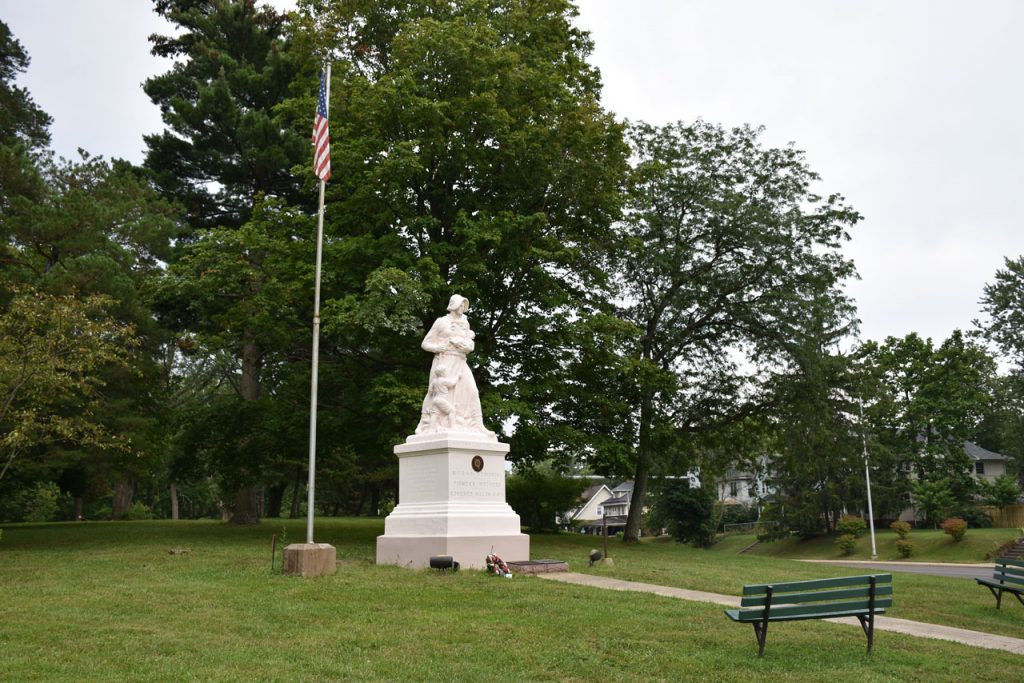
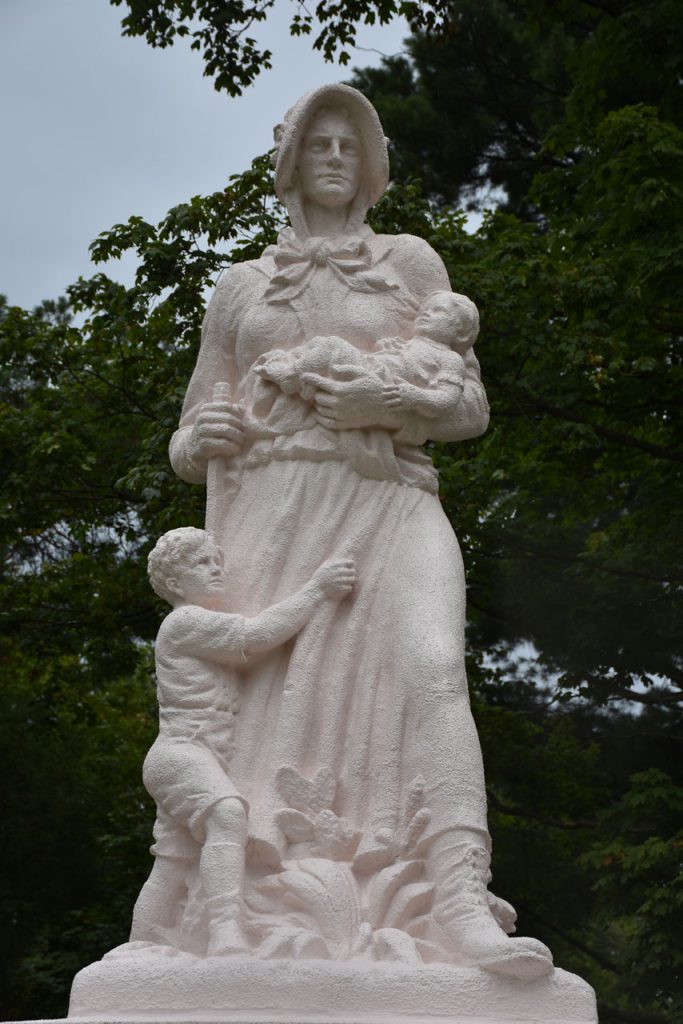
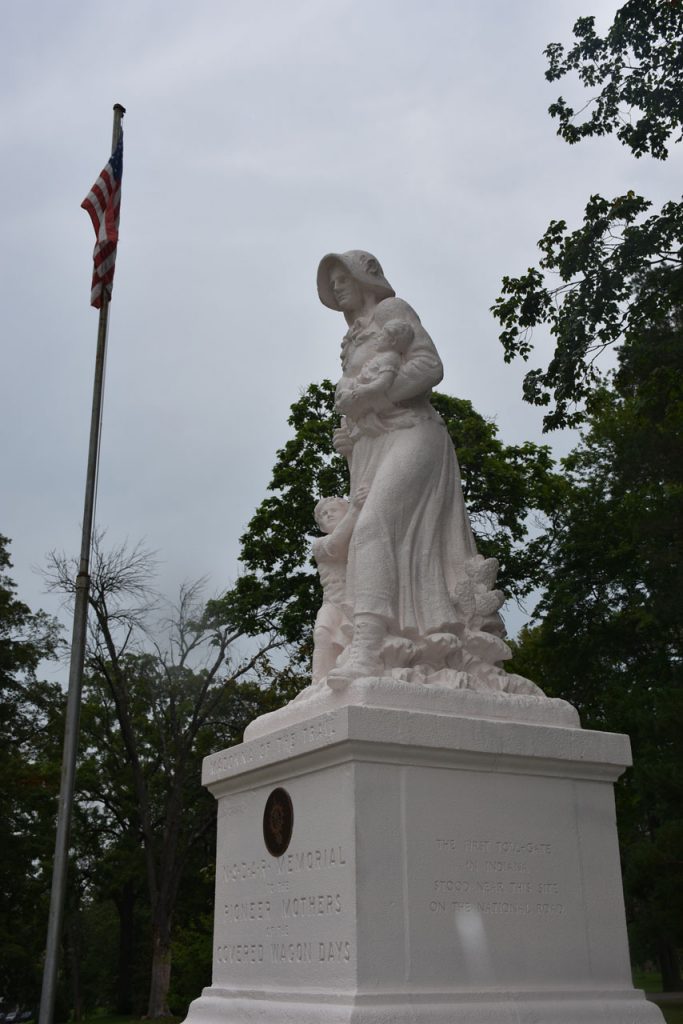
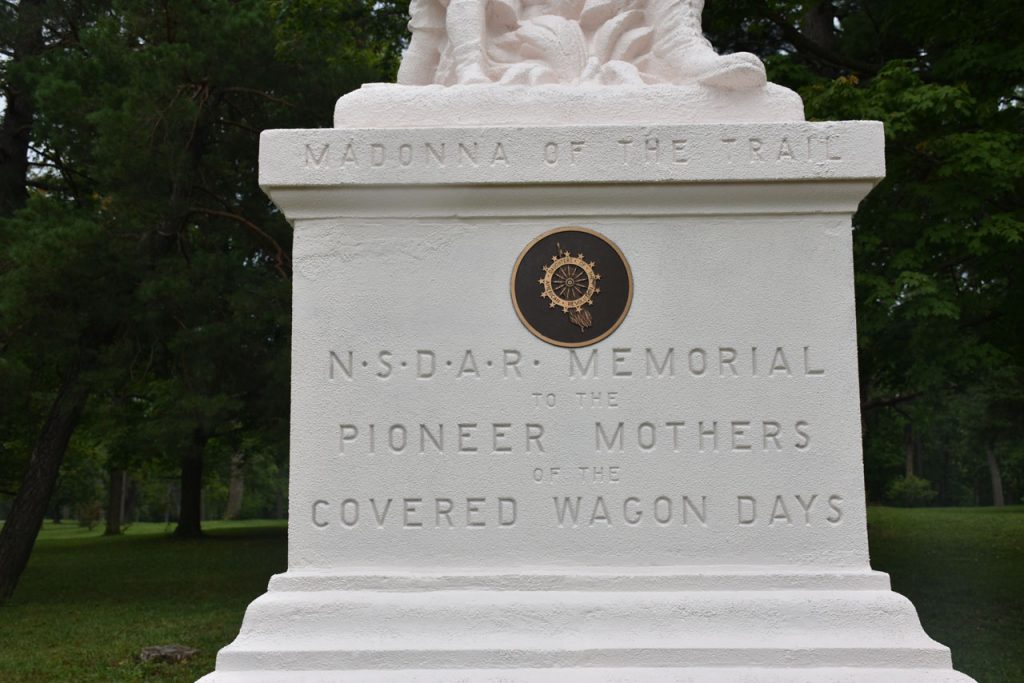
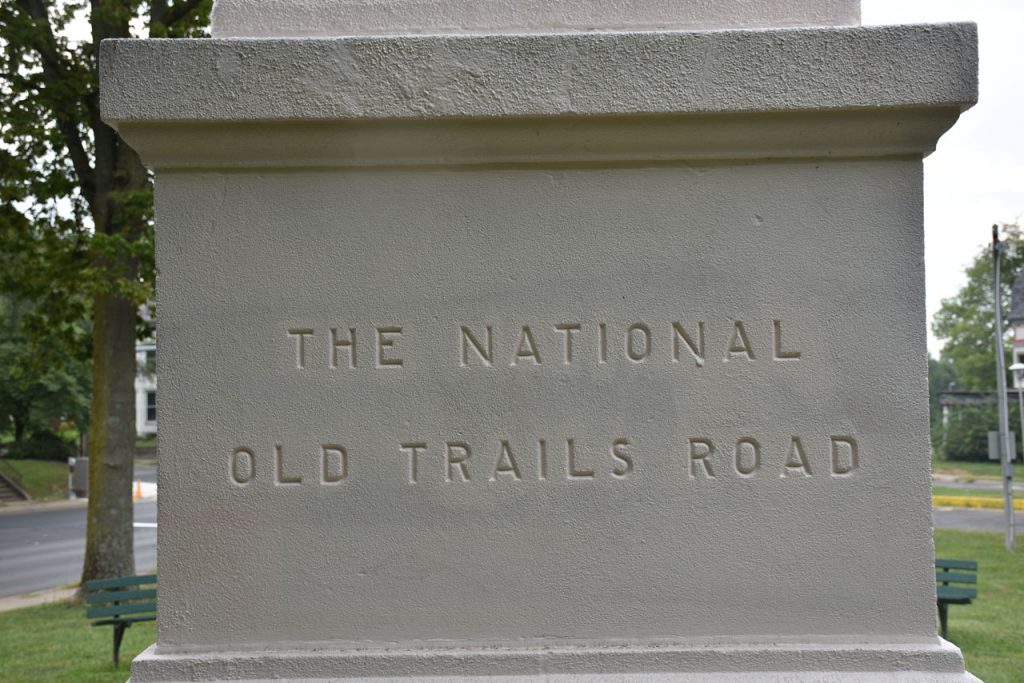
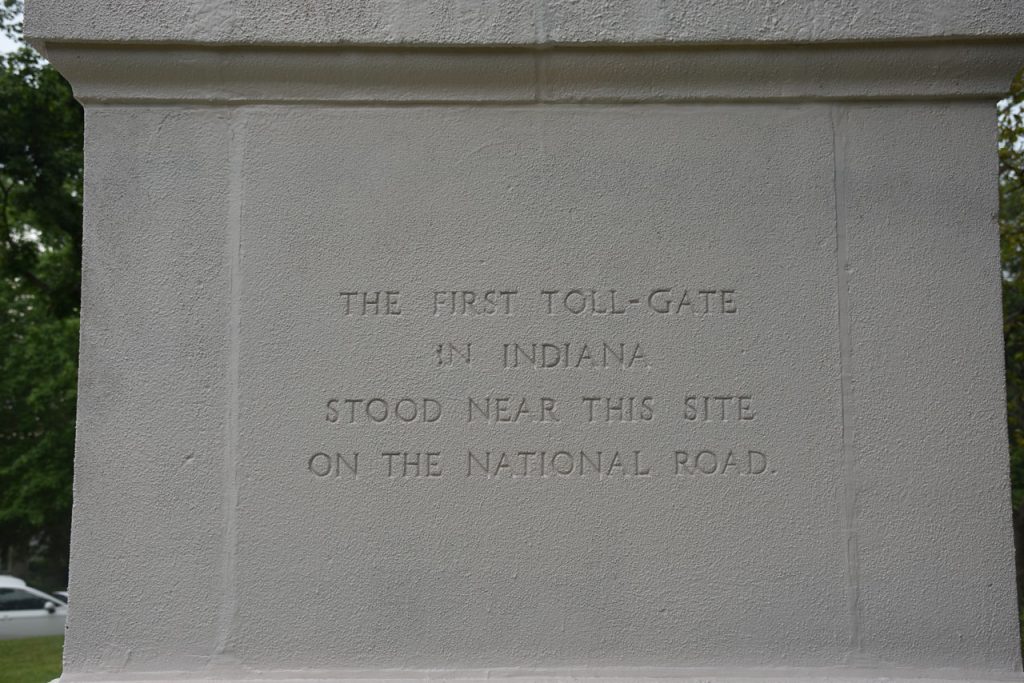
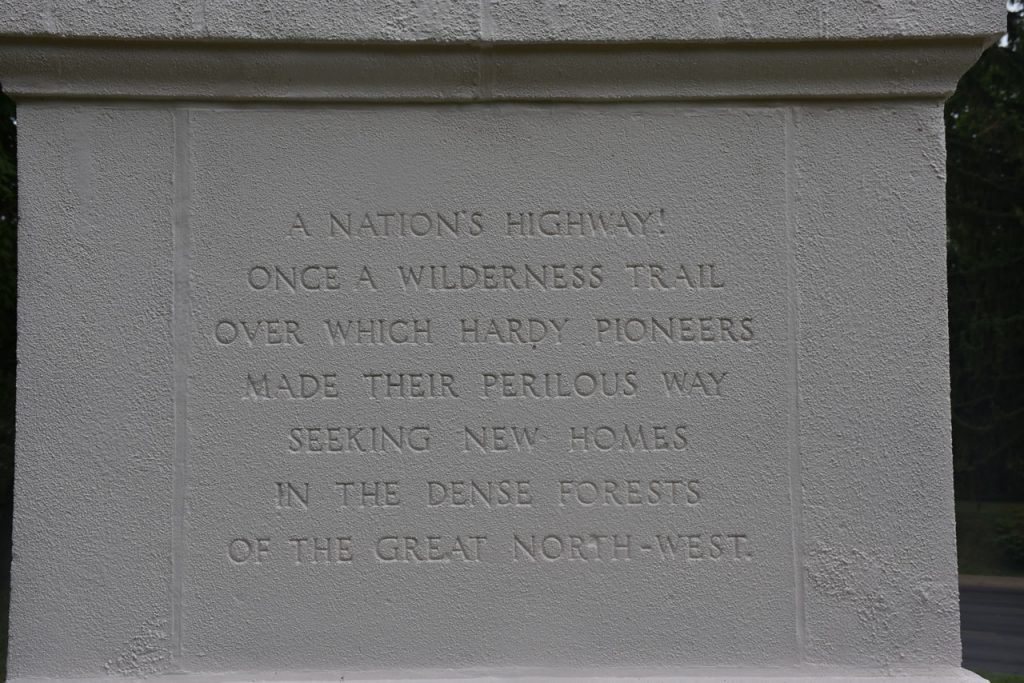
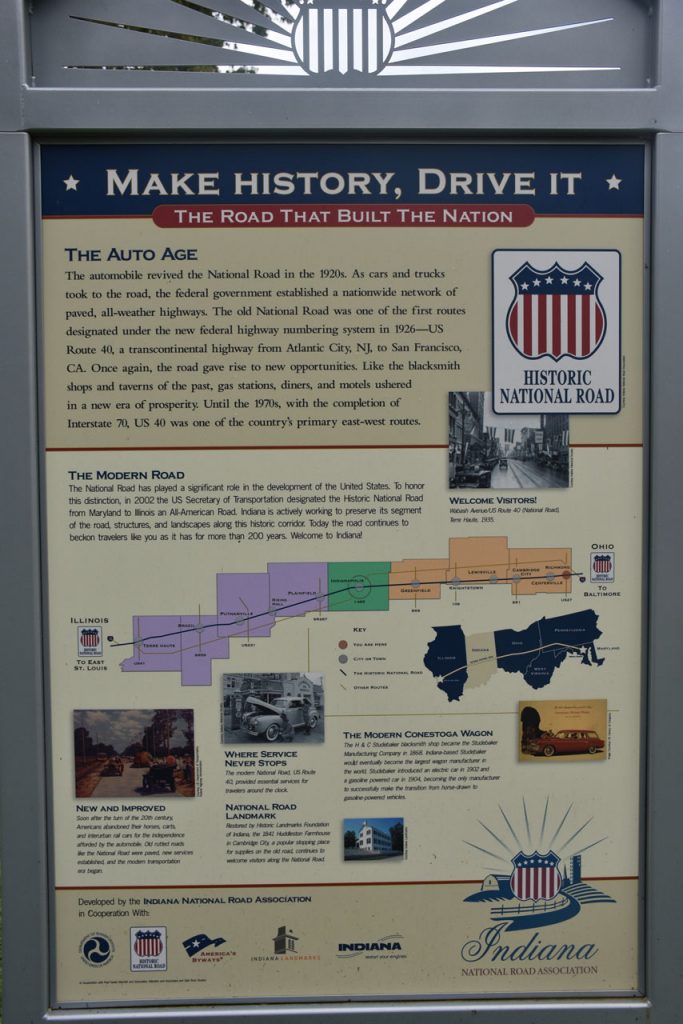
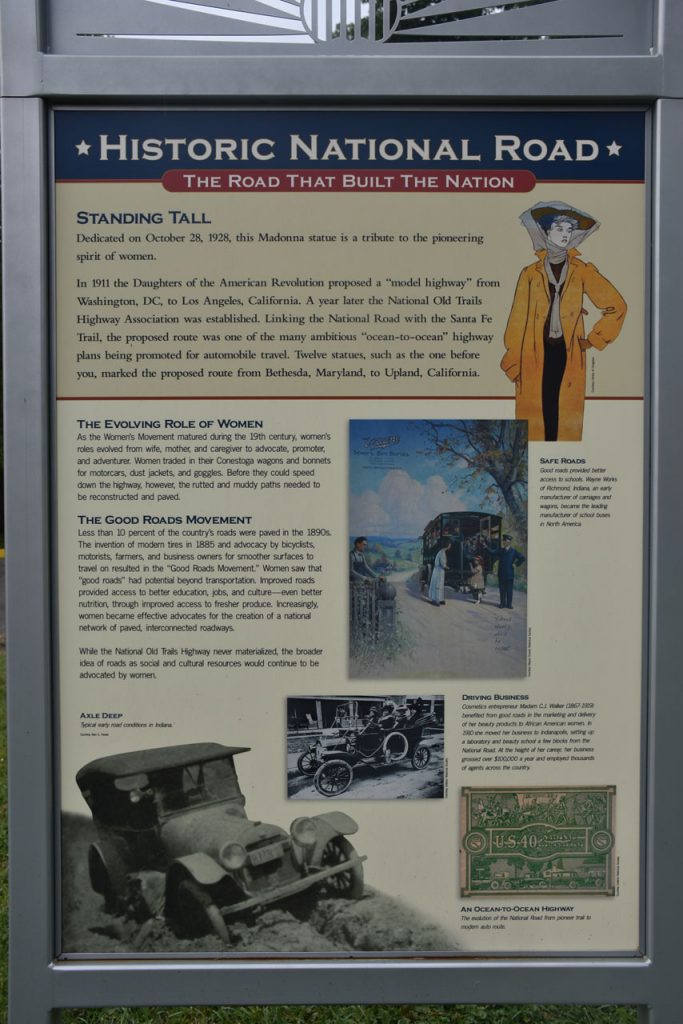
At this point, I was running later than I planned. I had reserved a room at airbnb , an online site where people rent out rooms
in their homes. They have to meet lots of guidelines and have online reviews by people who stayed. I stayed at the home
with a dad and two daughters, and had a private bedroom and bath in a big new house on the west side of Indianapolis. Cost was only $32.
The next day, I left early and continued west on old Rt 40 past Indianapolis.
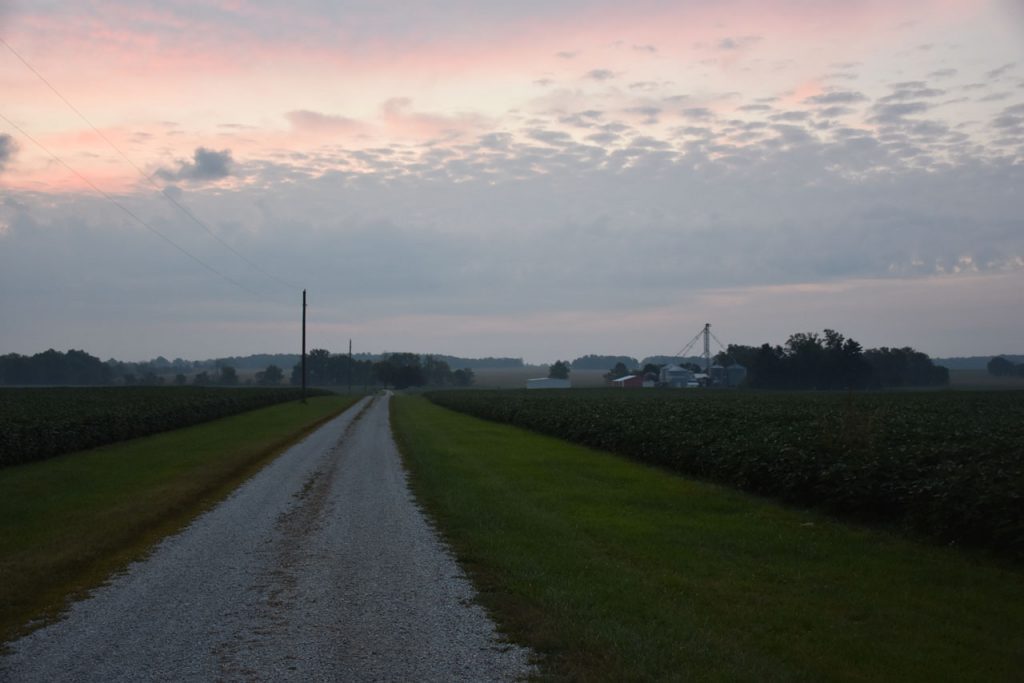
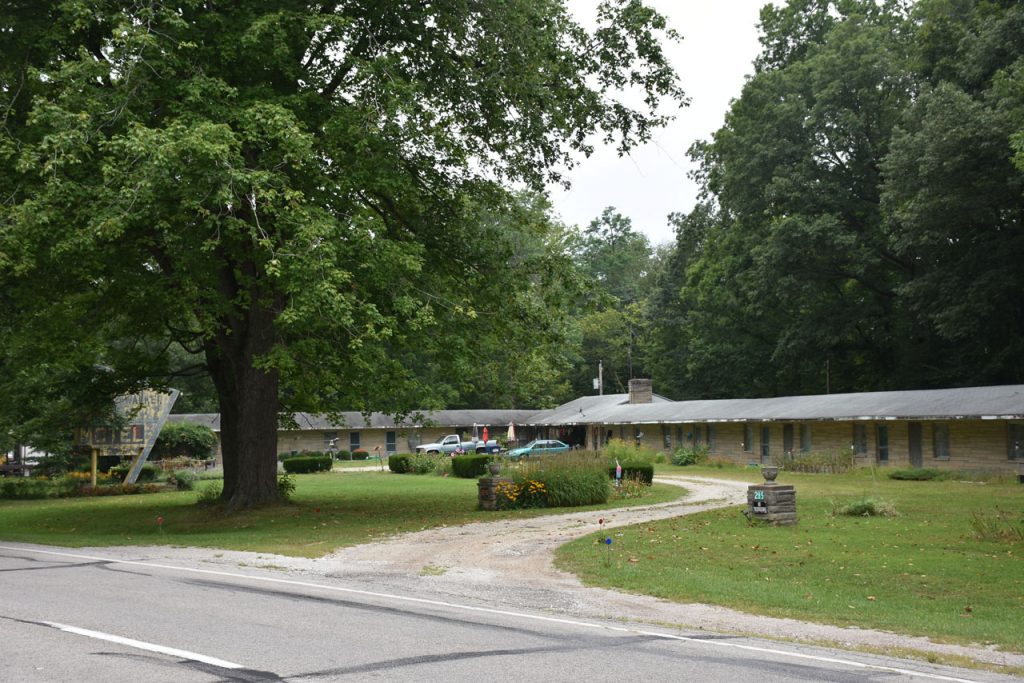
stood ready for weary travelers (and their money). Then came the interstate highways.
This one is located about mid-way between Indianapolis and the Illinois border.
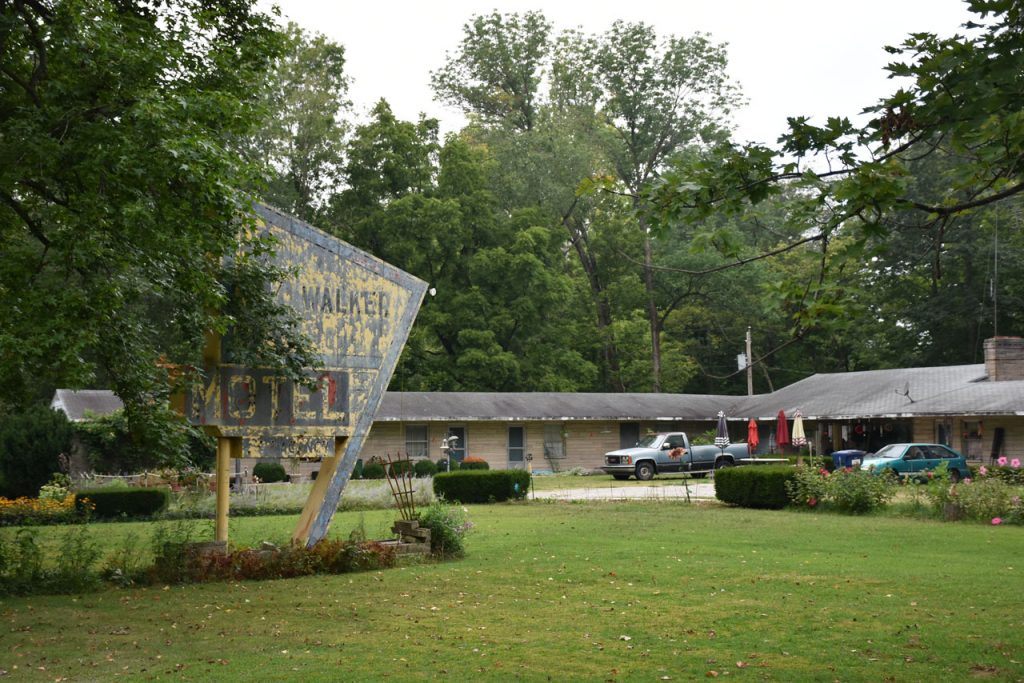
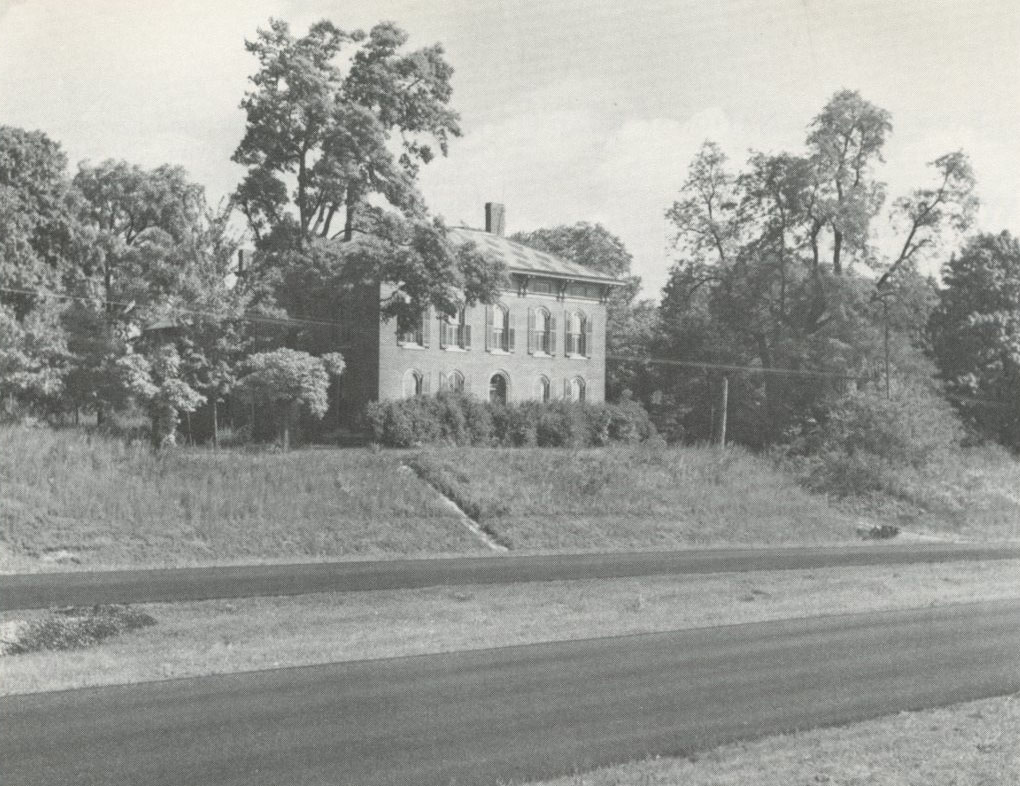
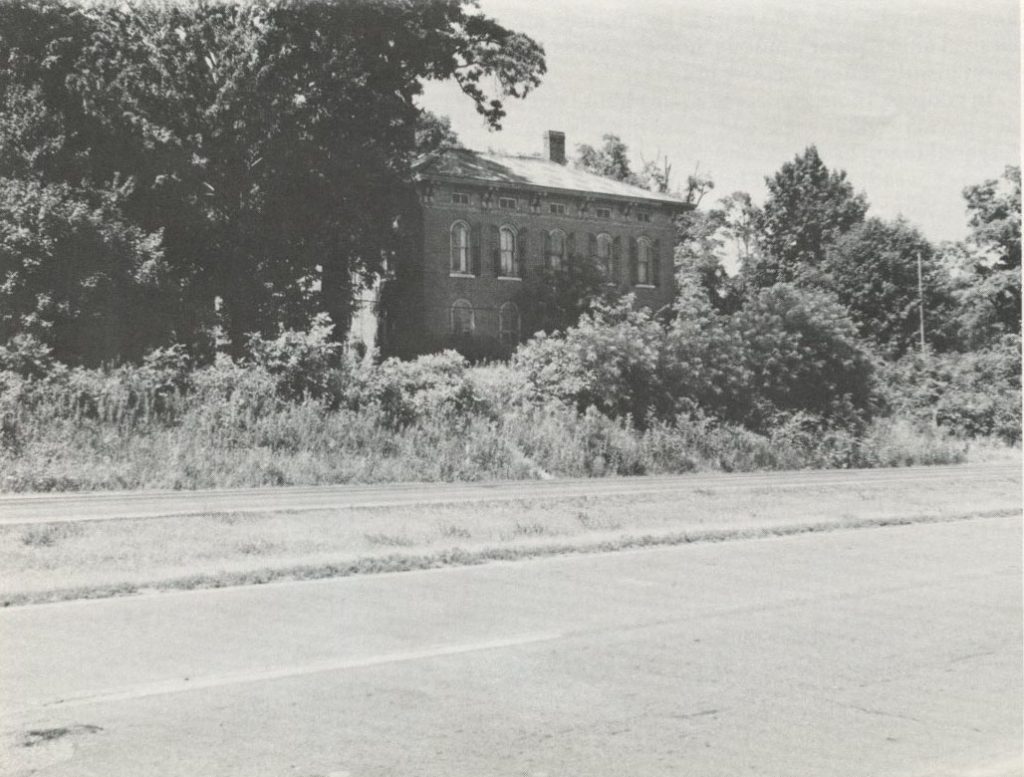
Just east of the town of Harmony, IN lies this old Victorian home hidden by the trees.
The house was abandoned and neglected in the 1980 photo (right), but has since been bought and restored.
(Left, 1950, Stewart) (Right, 1980, Vales)
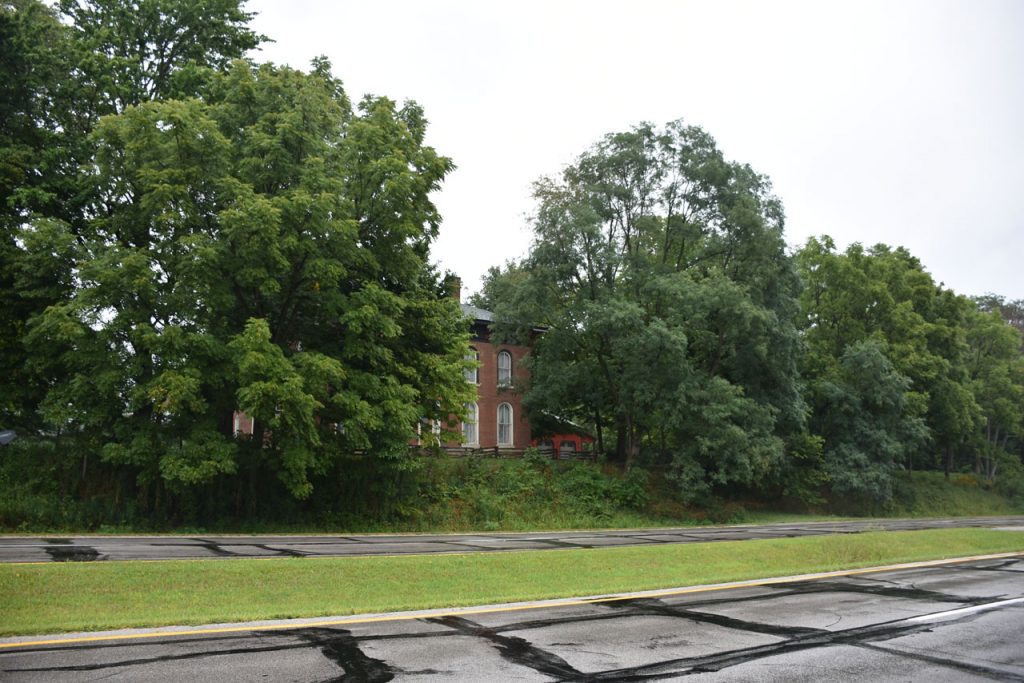
Look closely and you can see a large new shed behind and to the right.
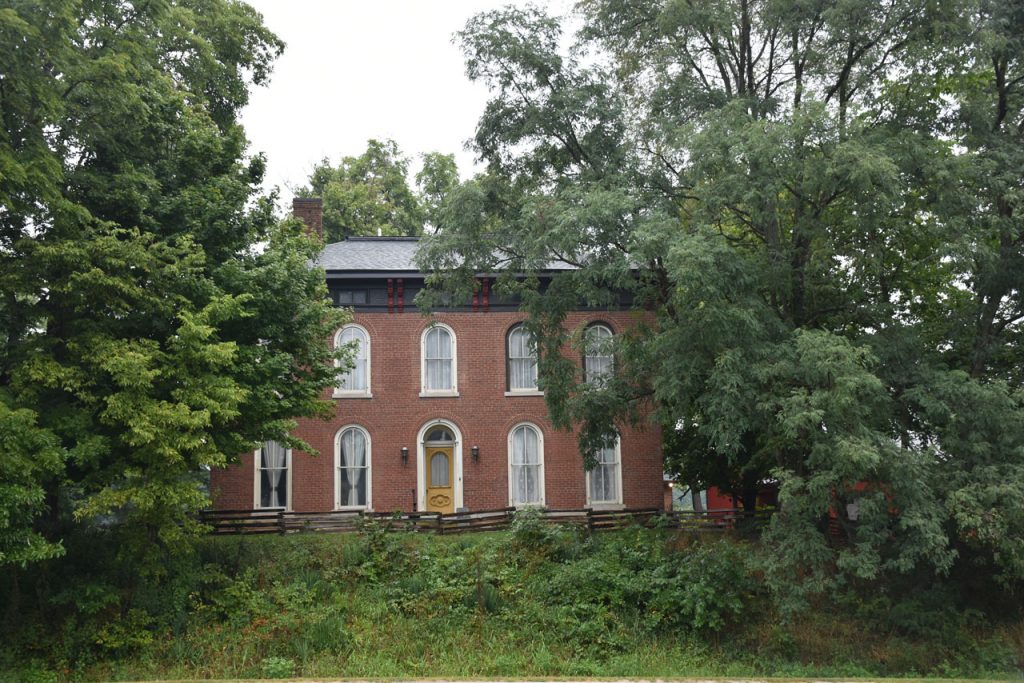
Nicely restored.
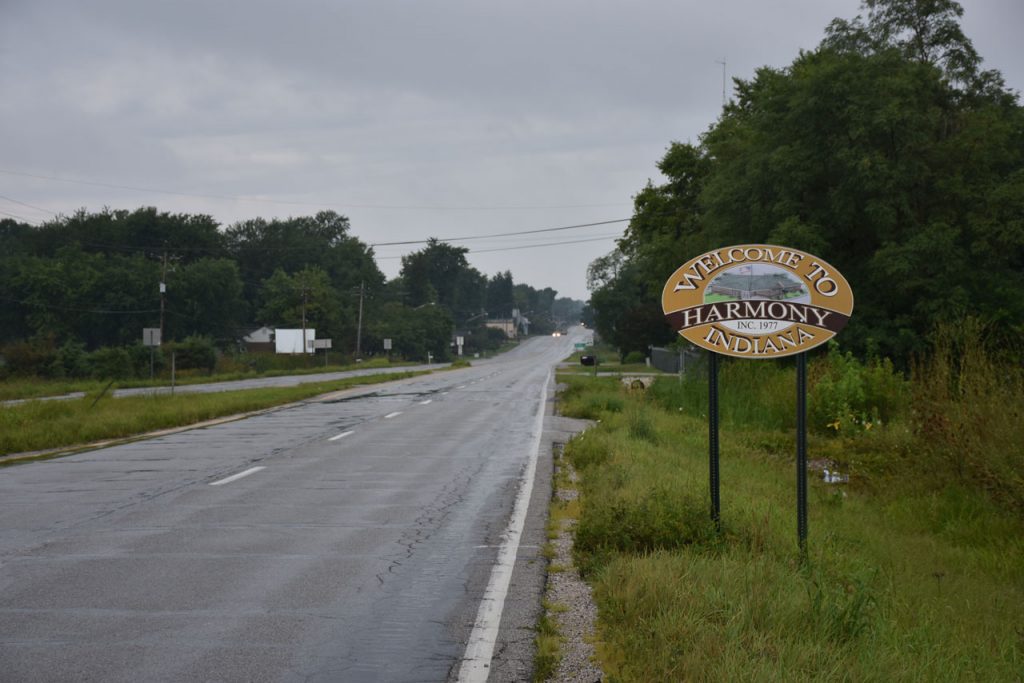
Illinois
After a brief hop on the interstate to bypass Terre-Haute, I was across the border to Illinois.
Almost immediately, I got off the first exit and back onto old Rt 40.
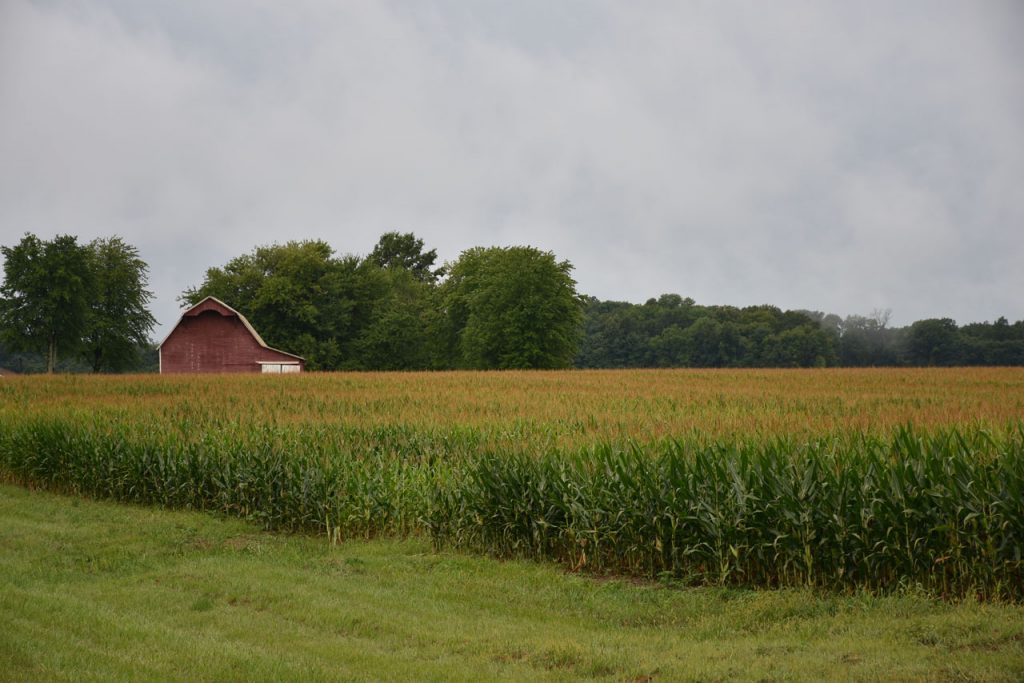
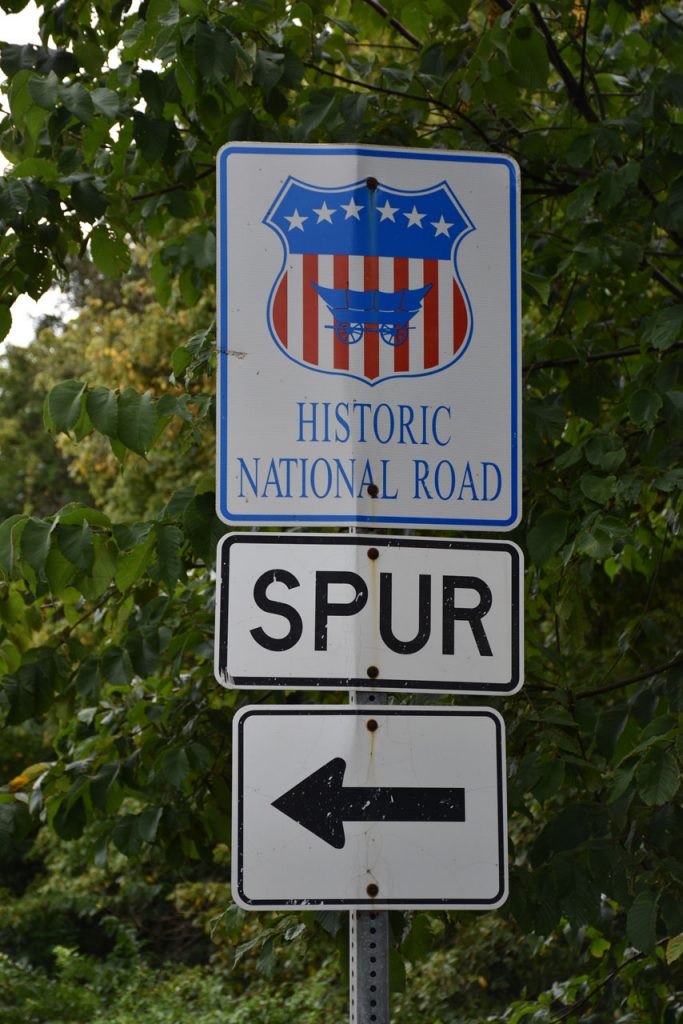
Good chance to view some of the original National Road.
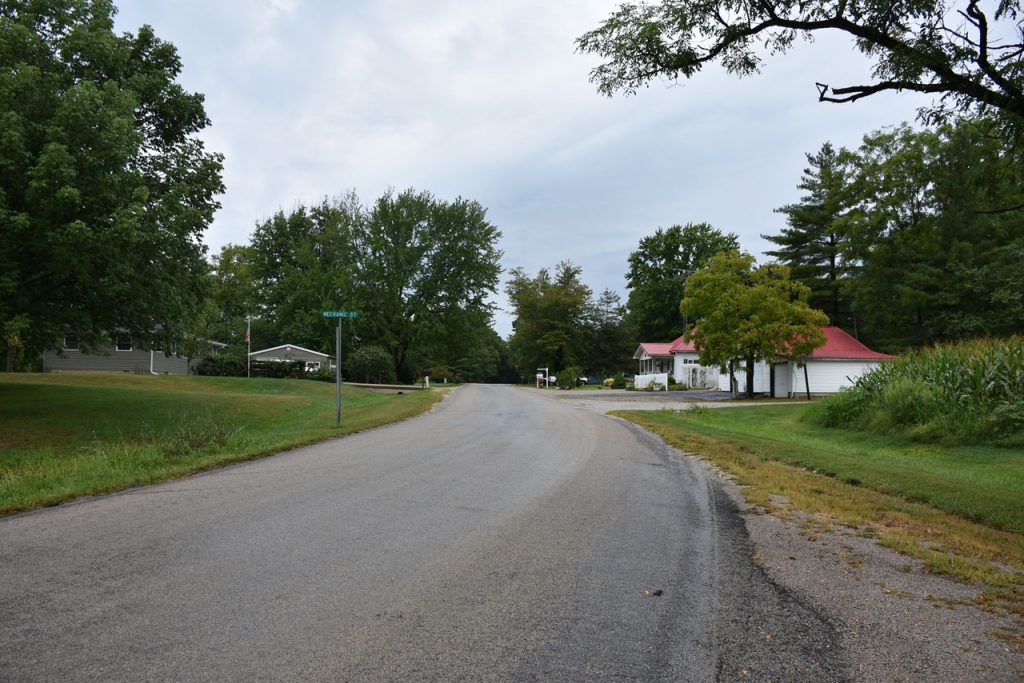
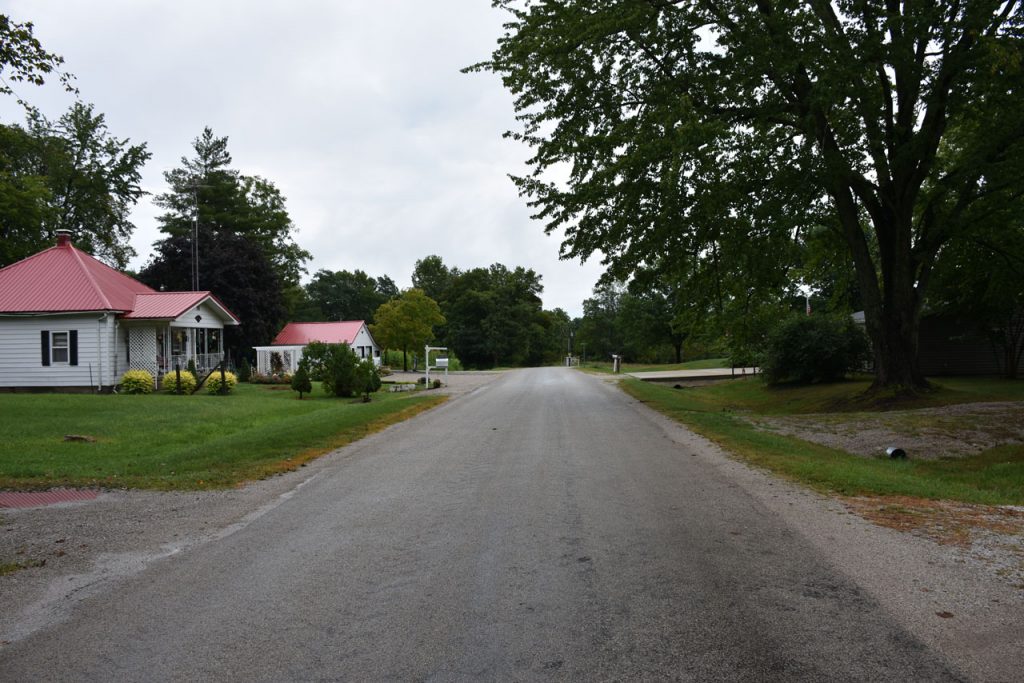
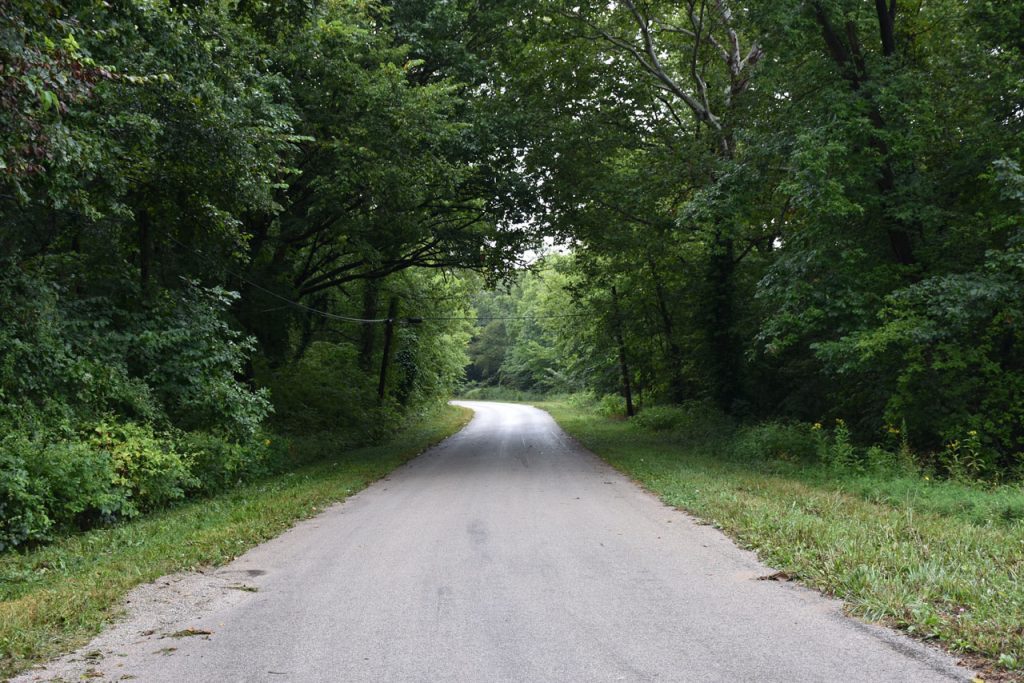
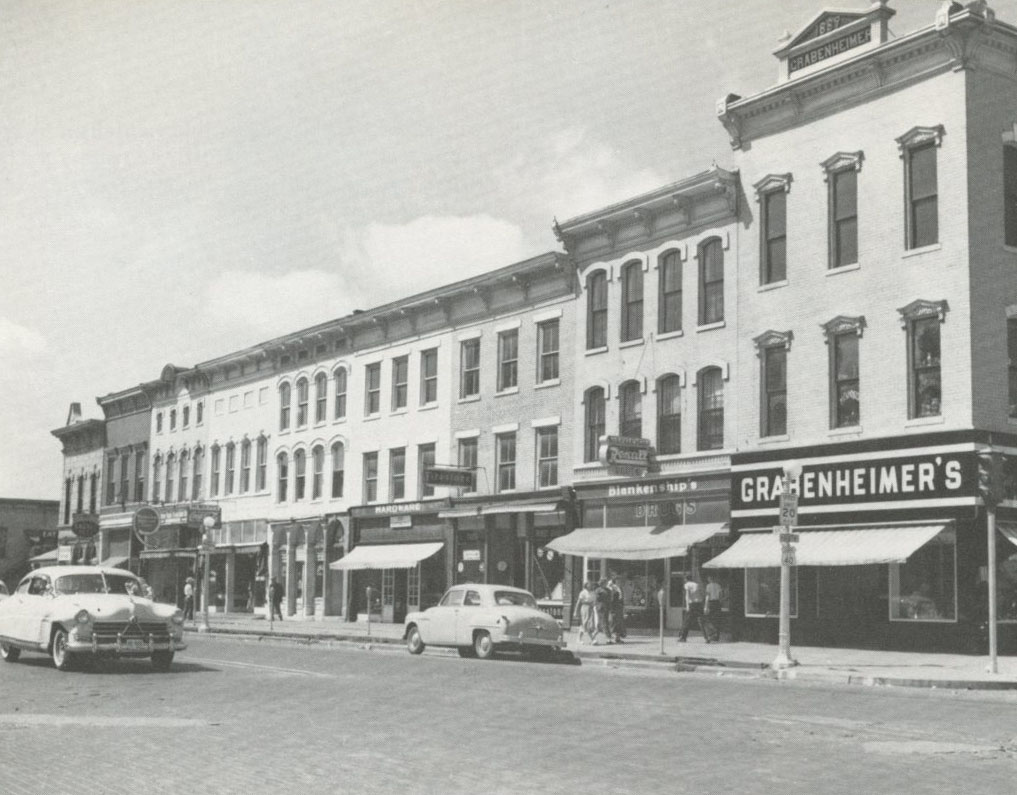
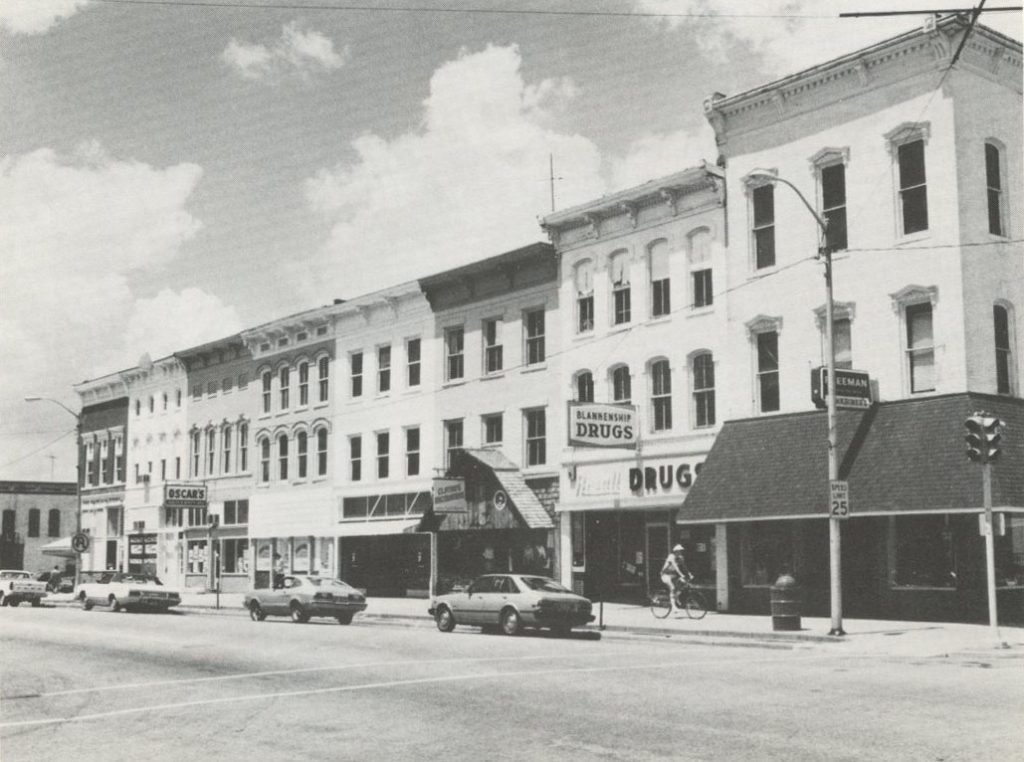
The next stop in the “U.S. 40 Today” book was Marshall IL, a small but vibrant town.
(Left, 1950, Stewart) (Right, 1980, Vales)
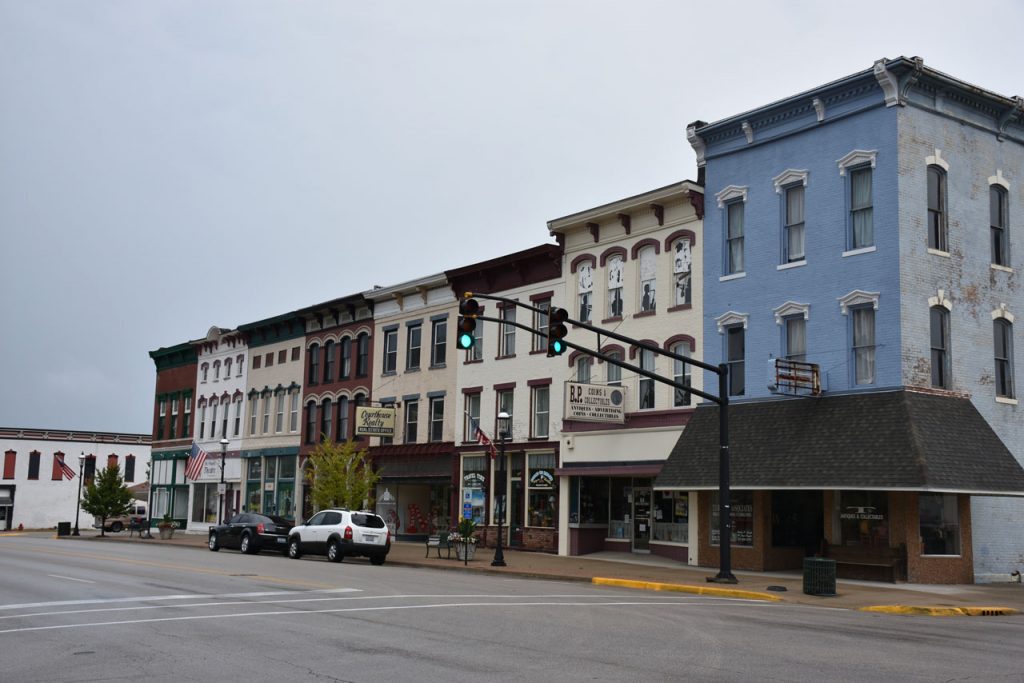

This is the only original stone bridge still used on the National Road.
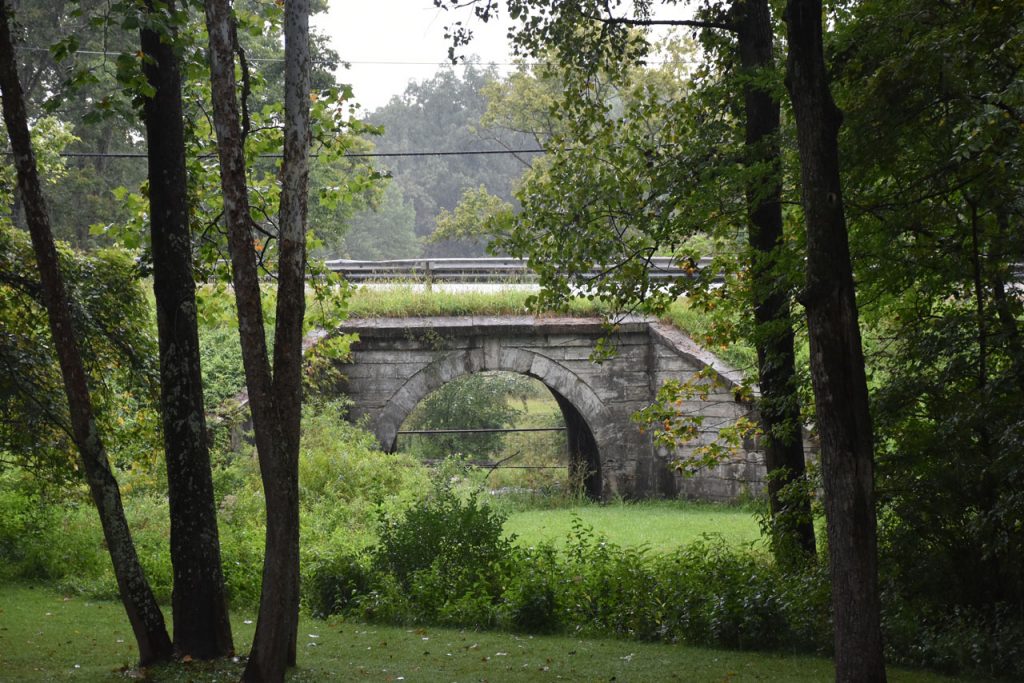
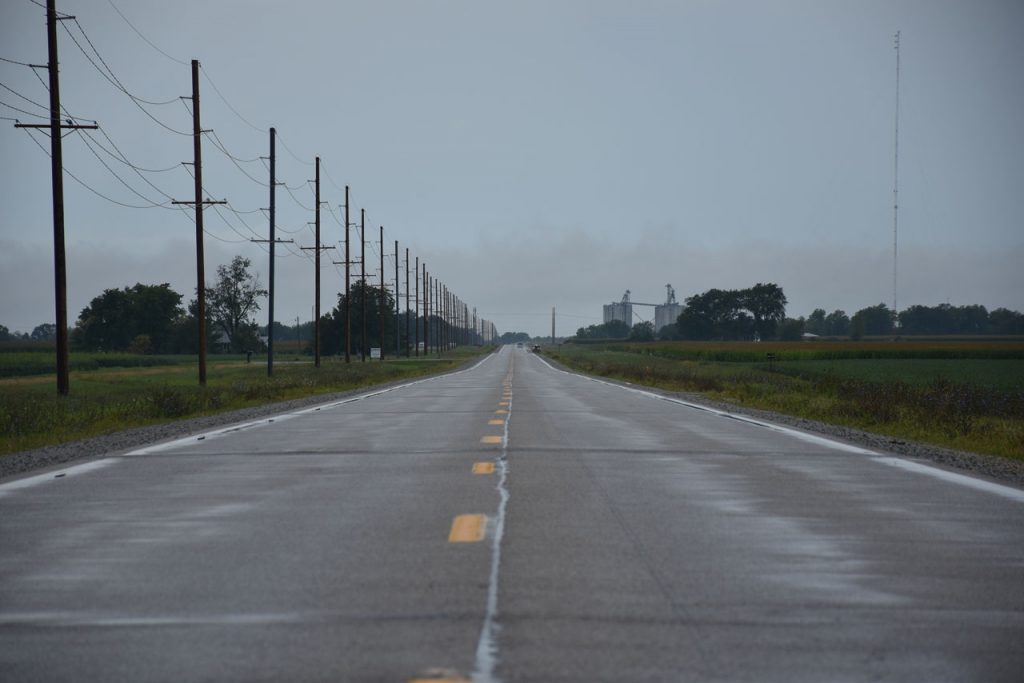
The roads are getting straighter and straighter. Clouds are getting darker by the minute.
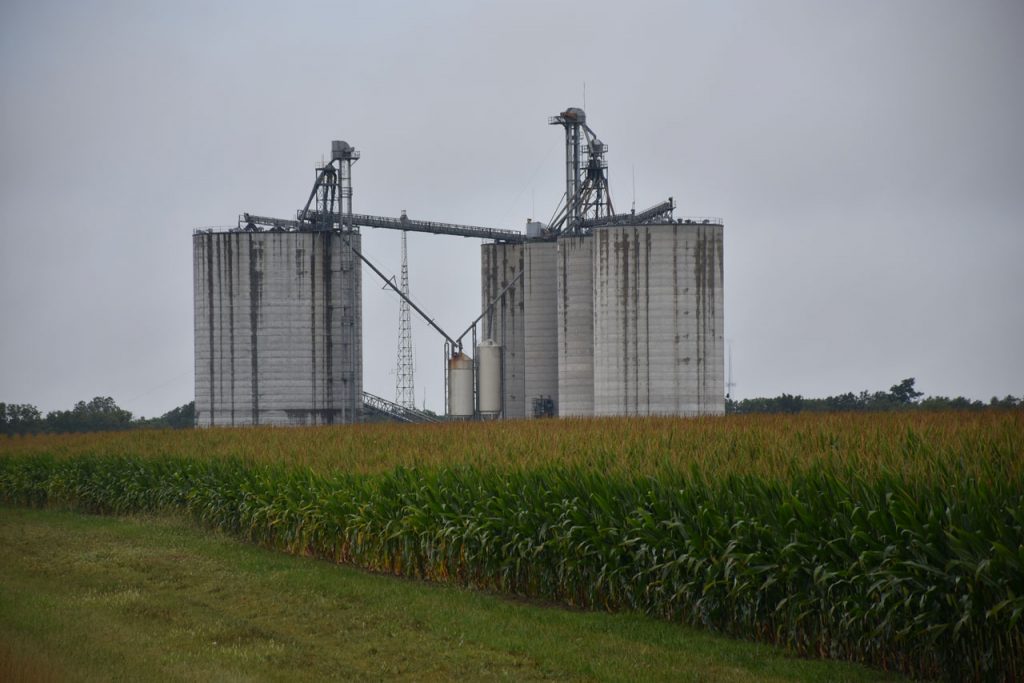
The next stop was not planned until just a few days before I left. Watching the evening news, the last 5-minute spot featured a small Midwest town that decided to build “big”. They built a giant wooden rocking chair and the world’s largest wind chime. Interesting.
When I looked up where the town of Casey IL was located, lo and behold, it was right on old Rt 40. Time for a short detour!

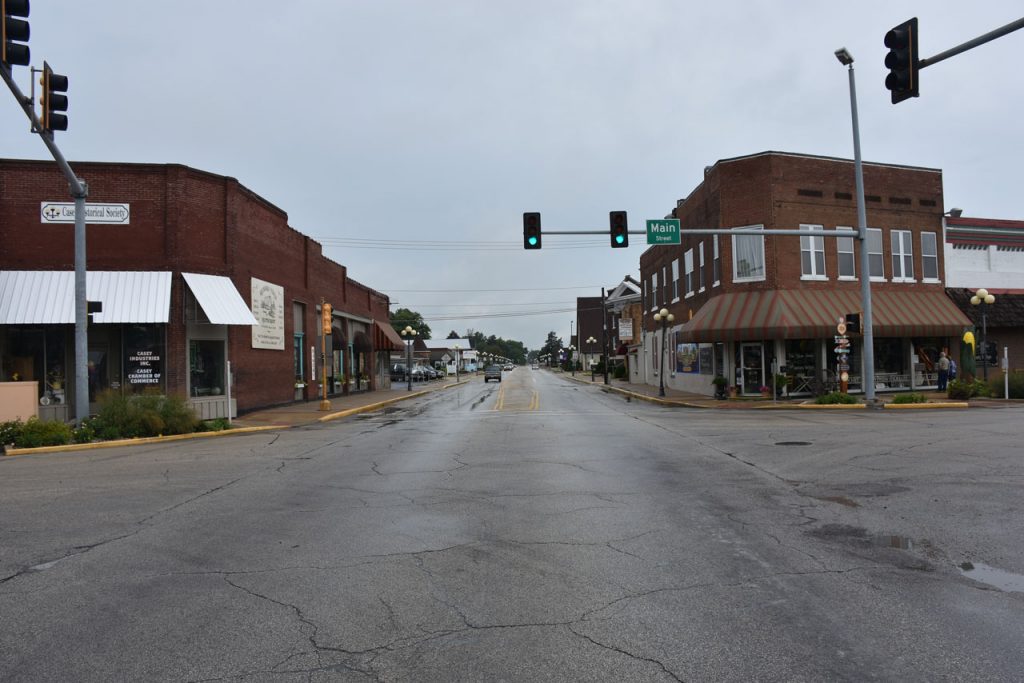
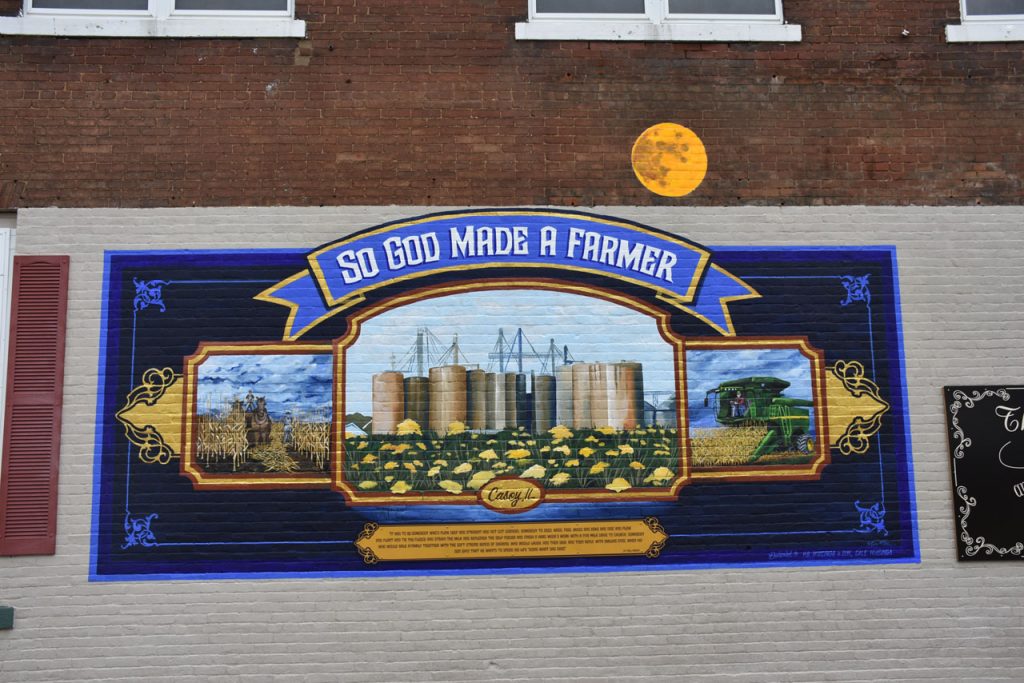

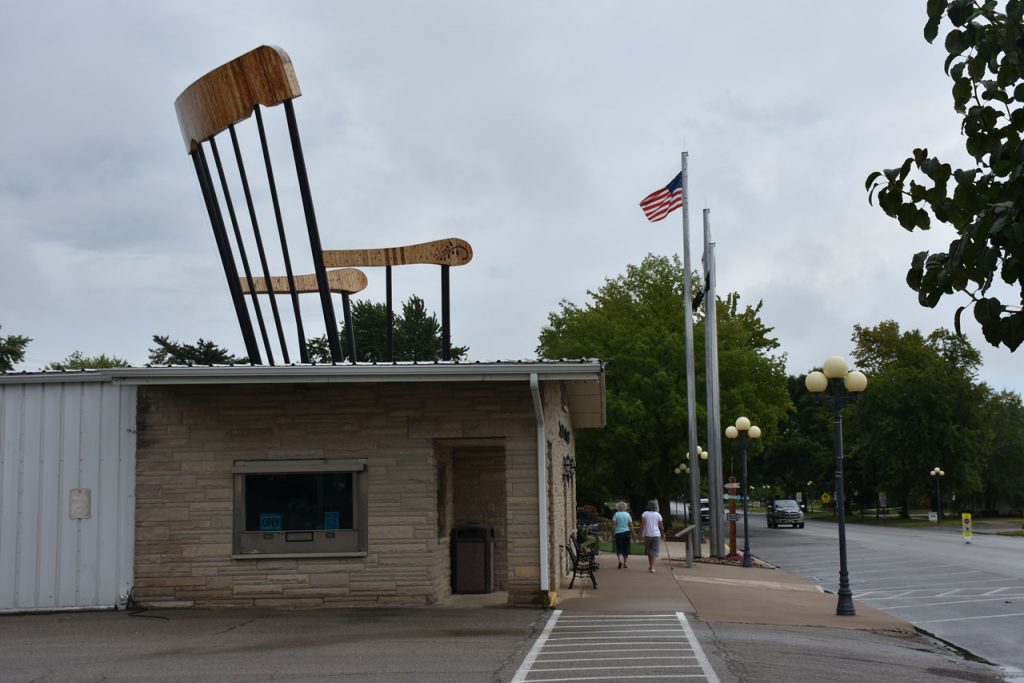
Hard to hide a thing like that in a small town.
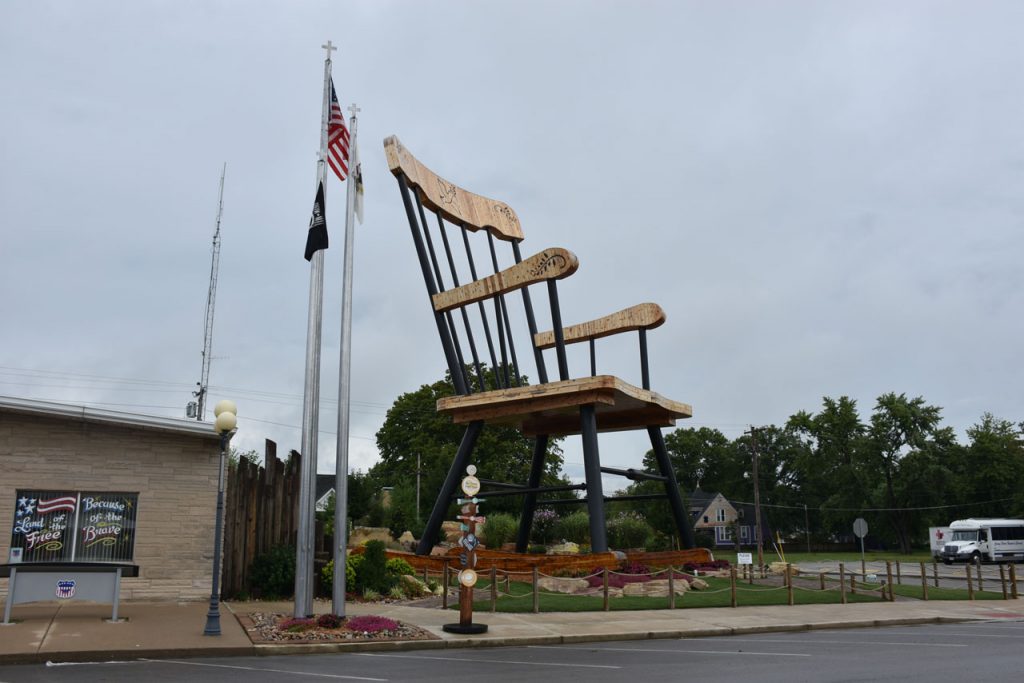
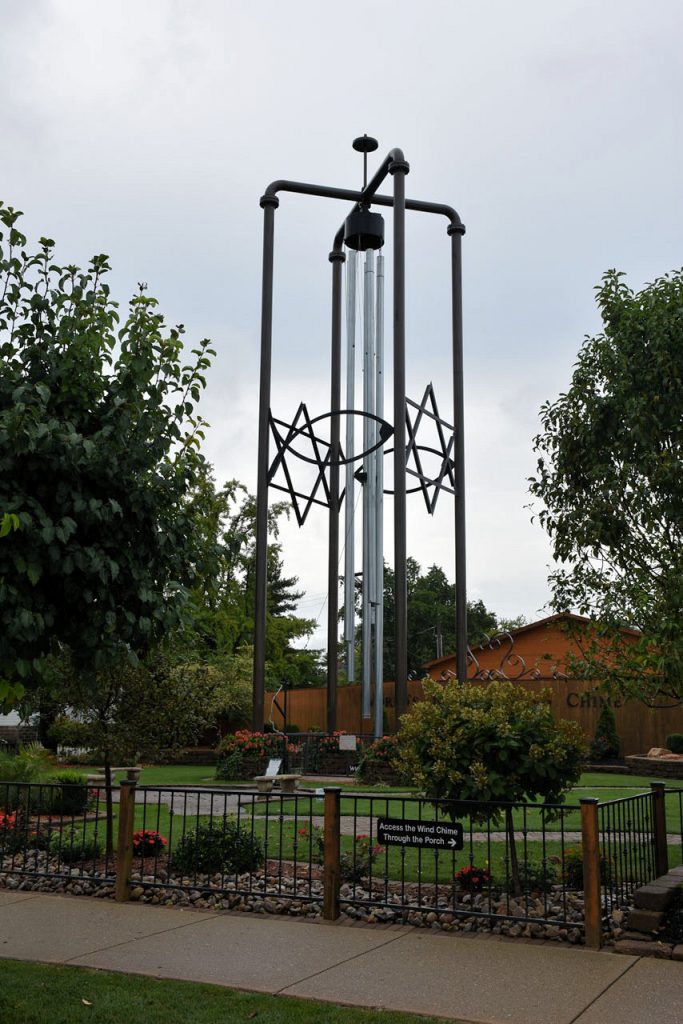
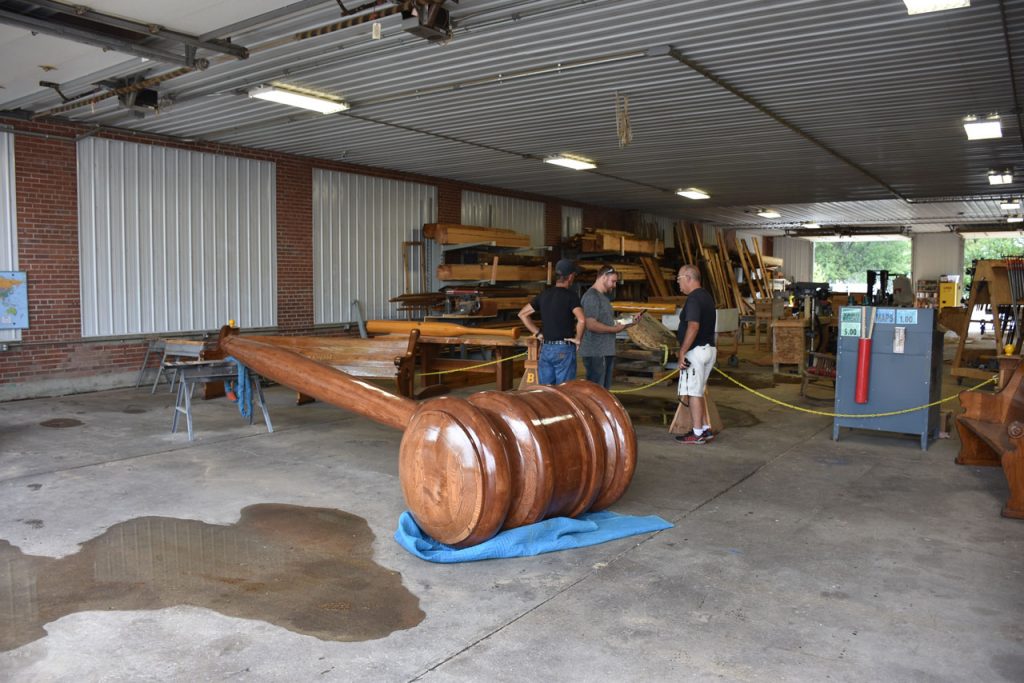
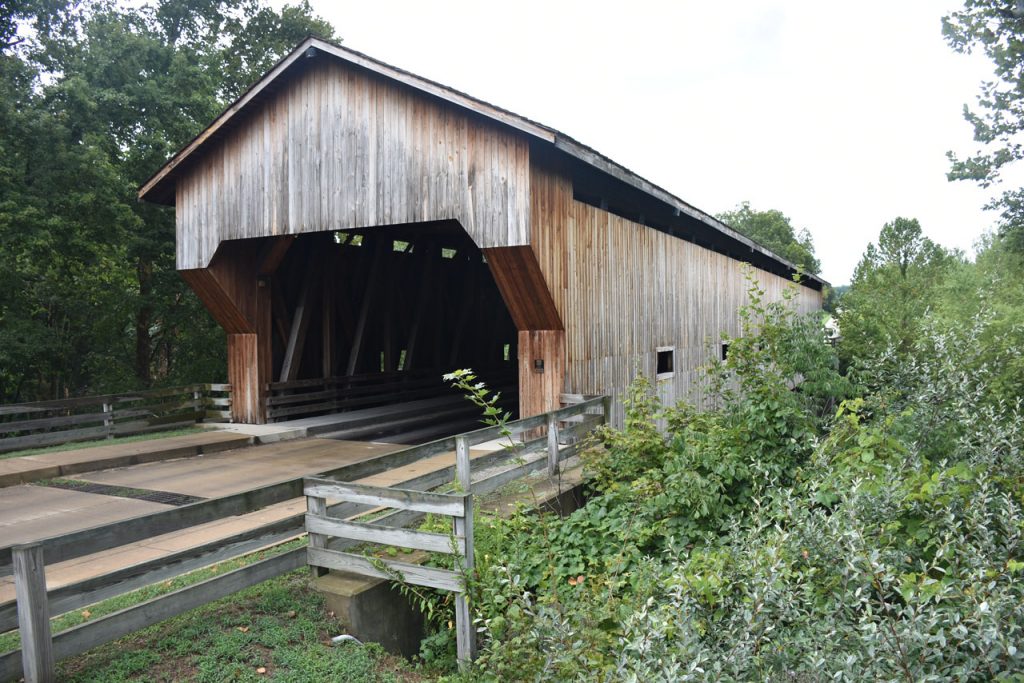
http://www.waymarking.com/waymarks/WM2AAG_Cumberland_County_Covered_Bridge_Greenup_IL
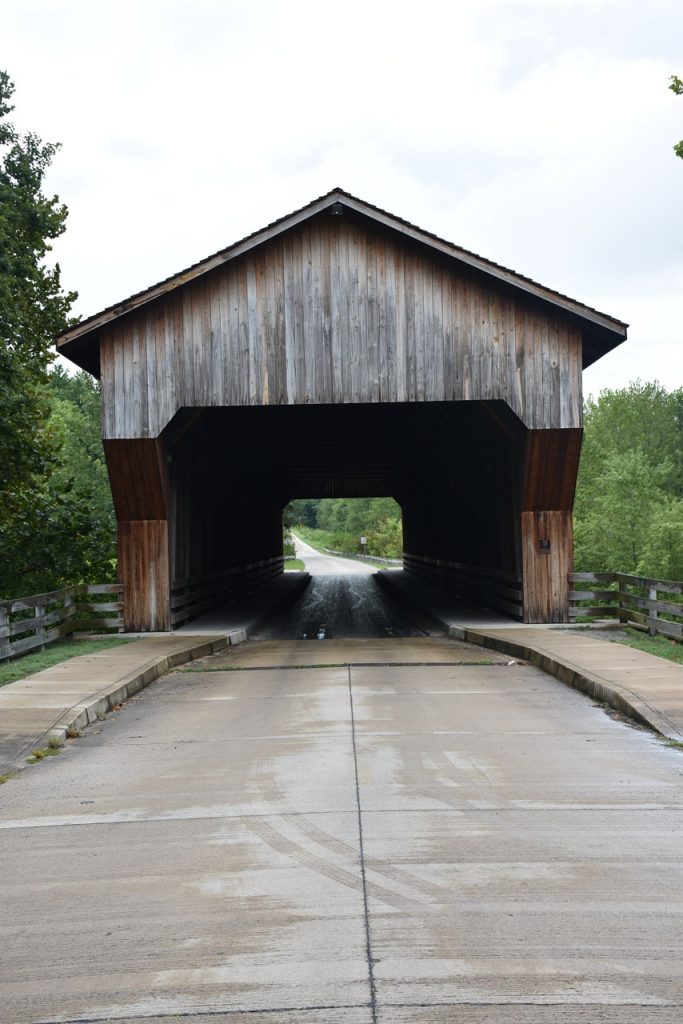
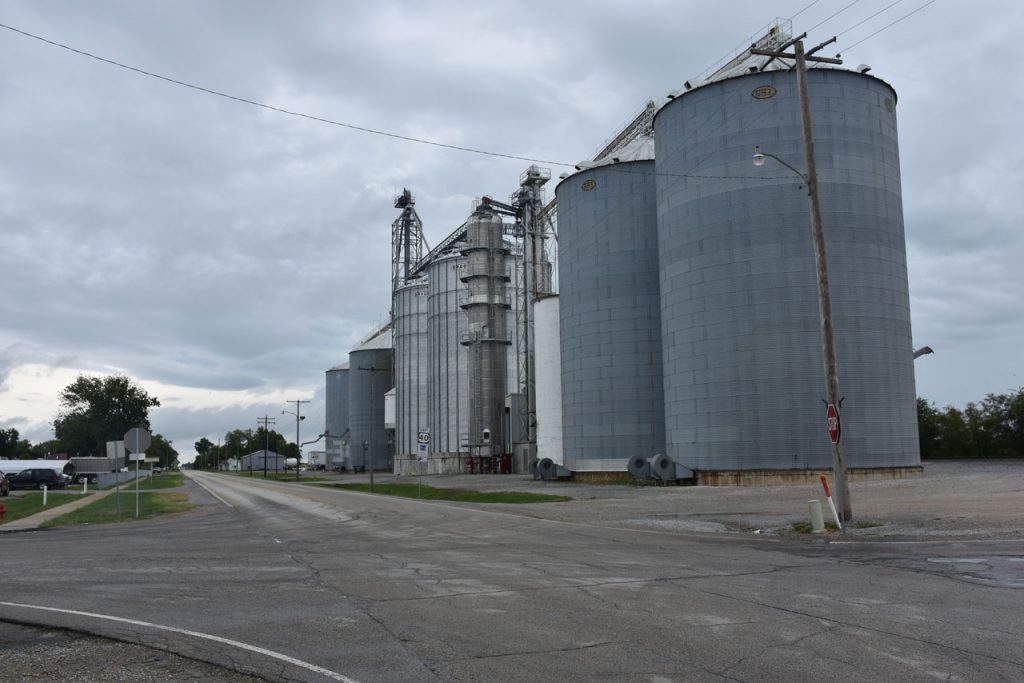
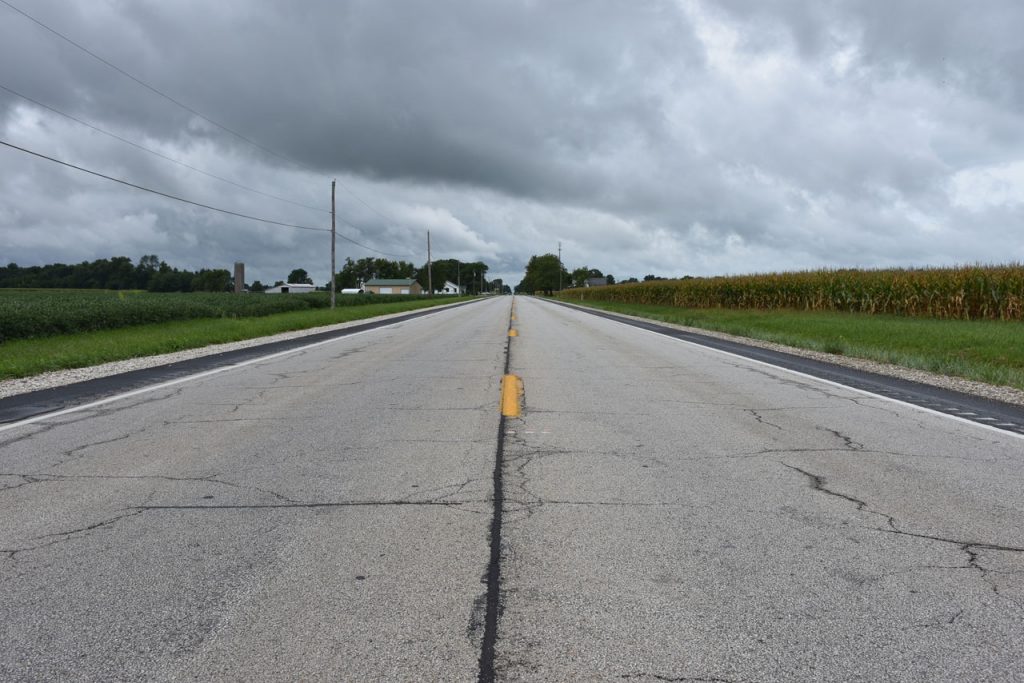
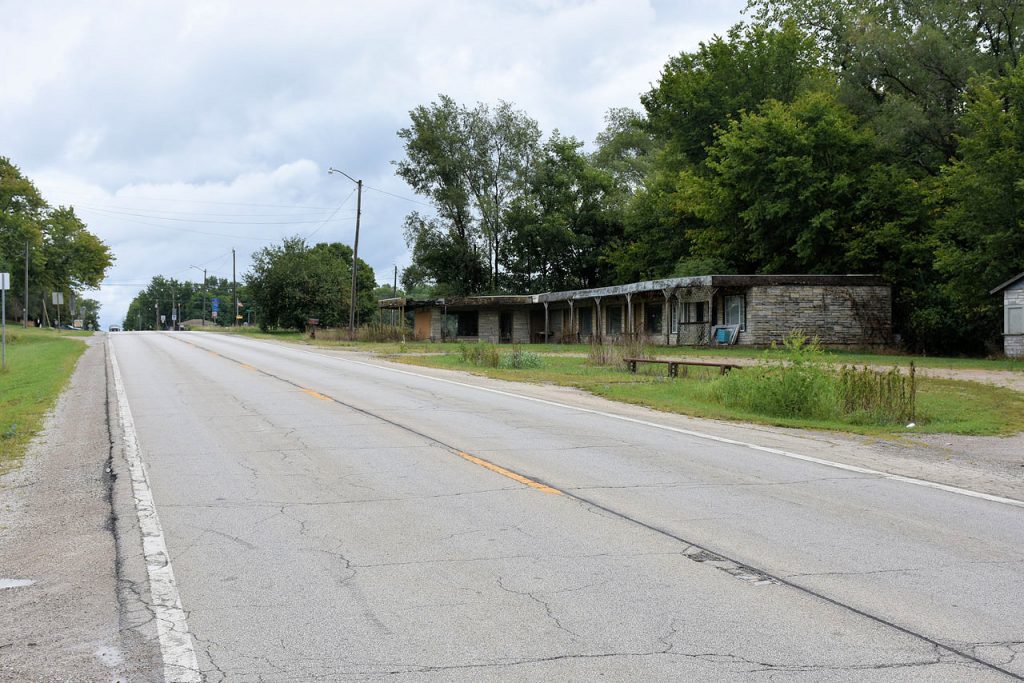
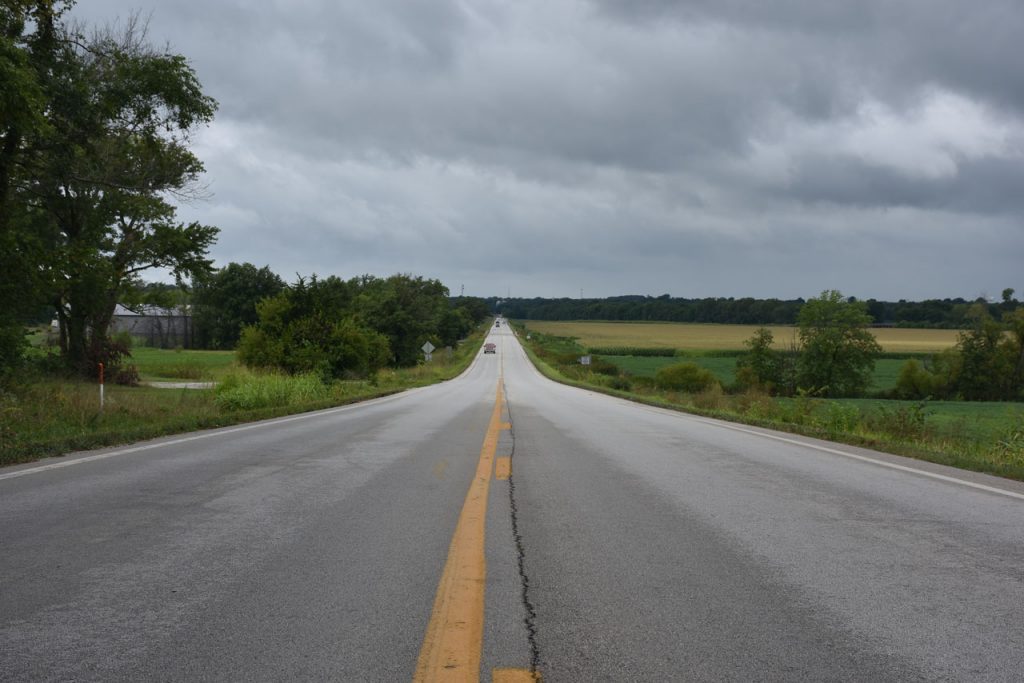
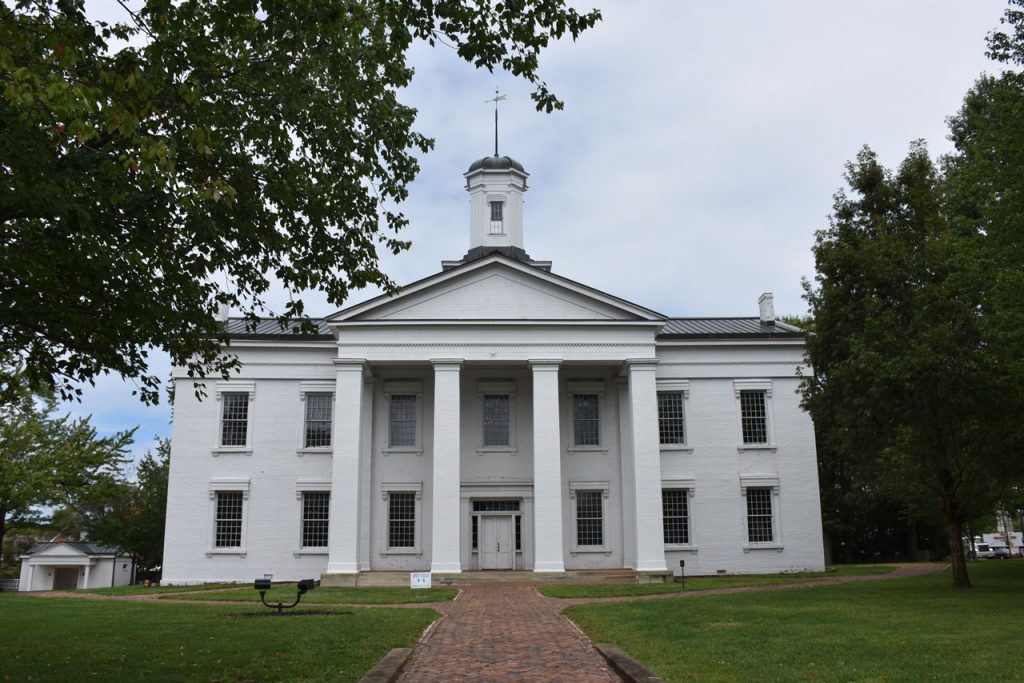
End of the National Road is about 100 feet to my left.
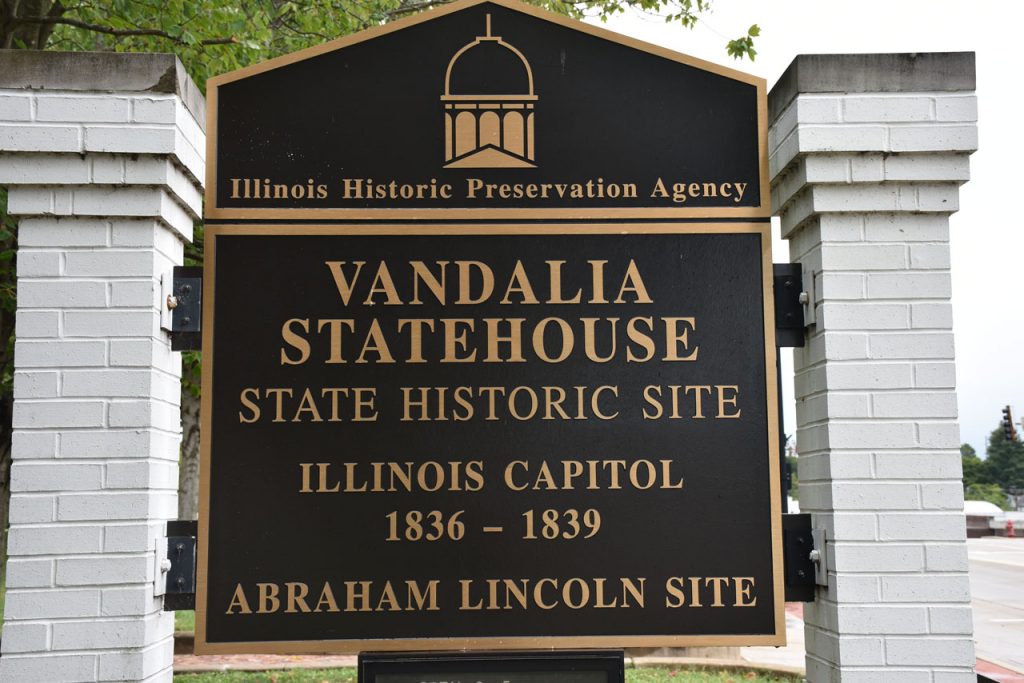
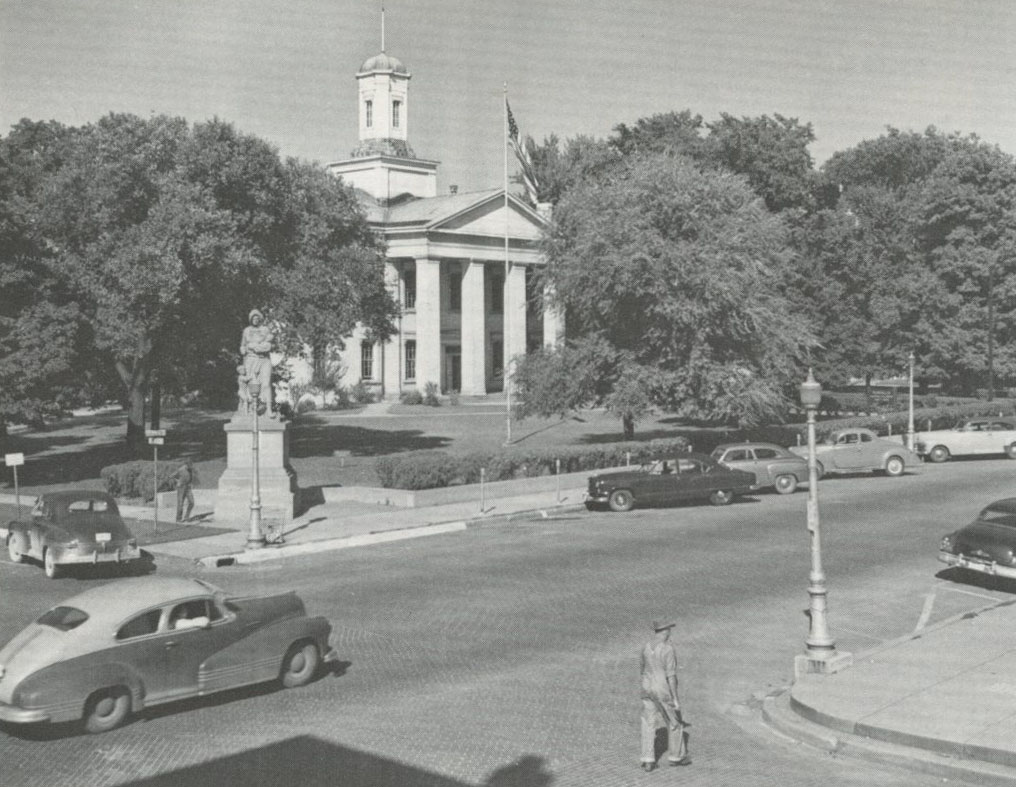
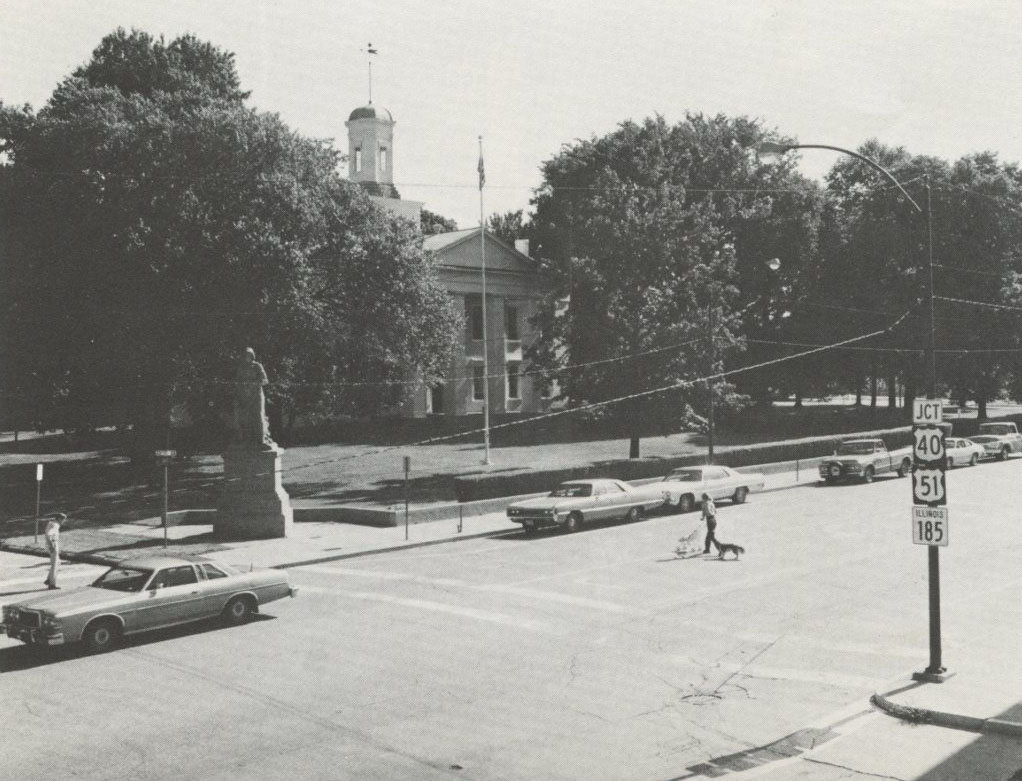
Vandalia – Original terminus of the National Road. Madonna Of The Trail was the end point.
(Left, 1950, Stewart) (Right, 1980, Vales)
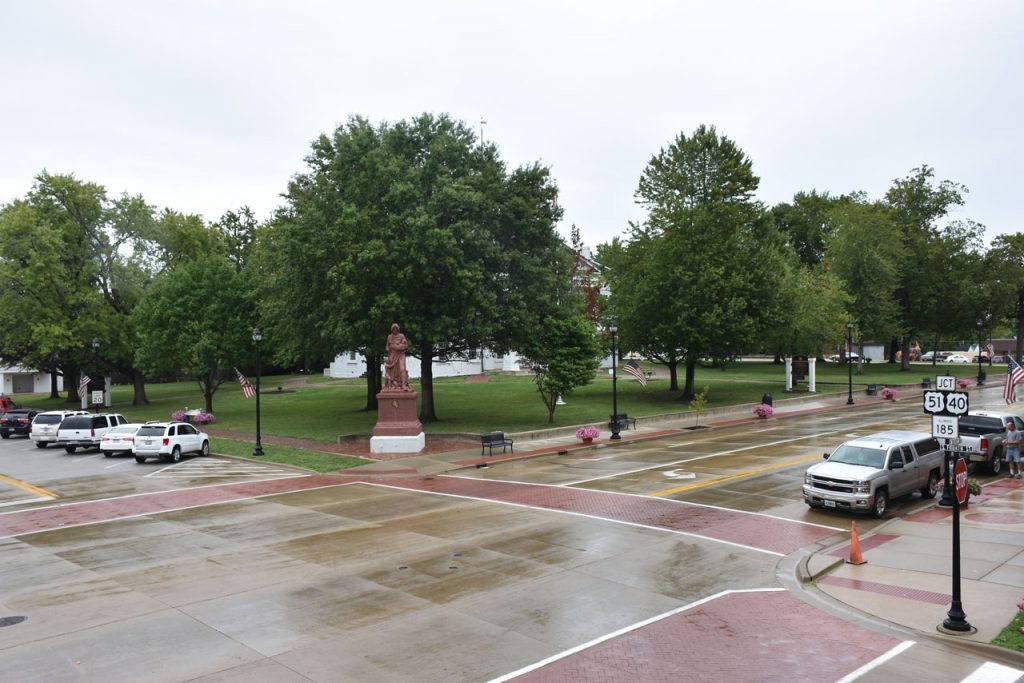
From the original photos above, I noticed they were taken at a raised location.
On the building diagonally across the street were fire escape stairs coming down the side.
I went in the antique shop, showed them the original photos, and they gave me permission to climb the steps.
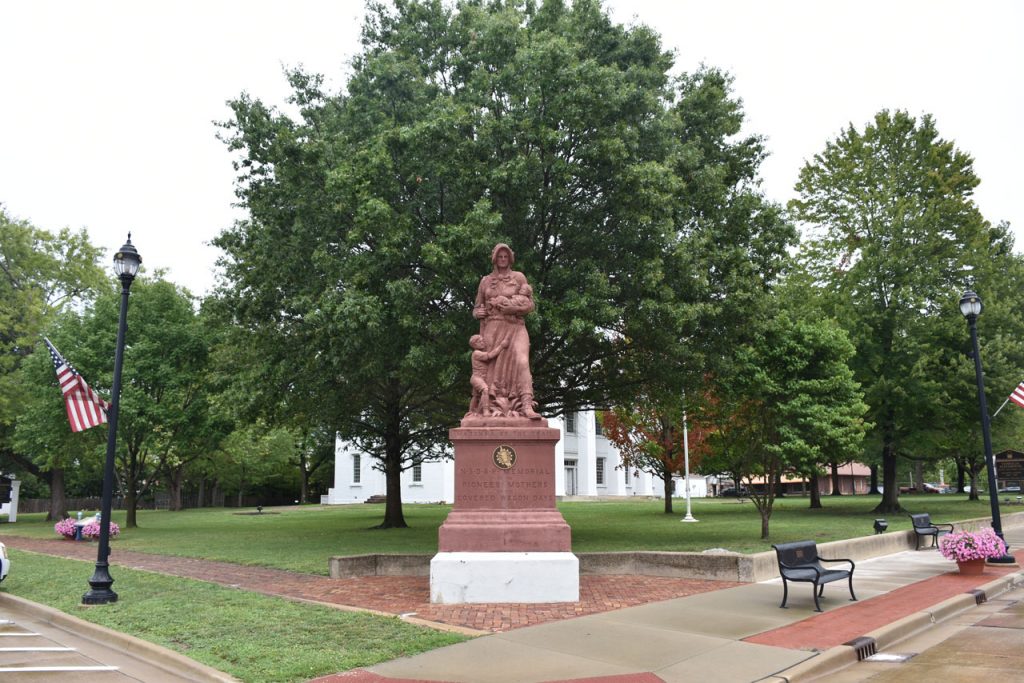
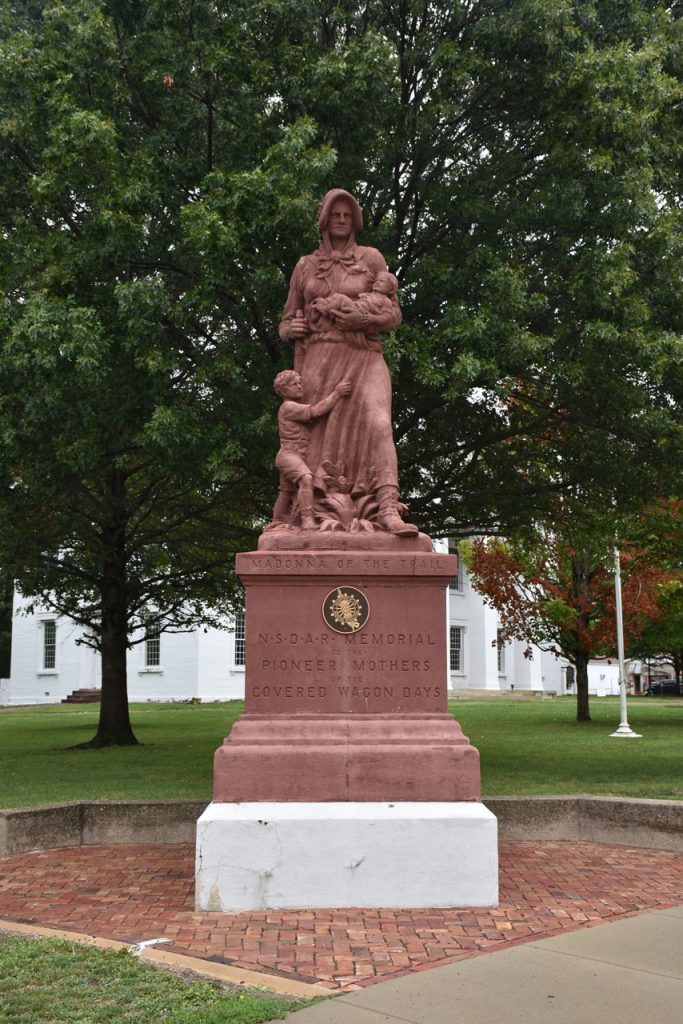
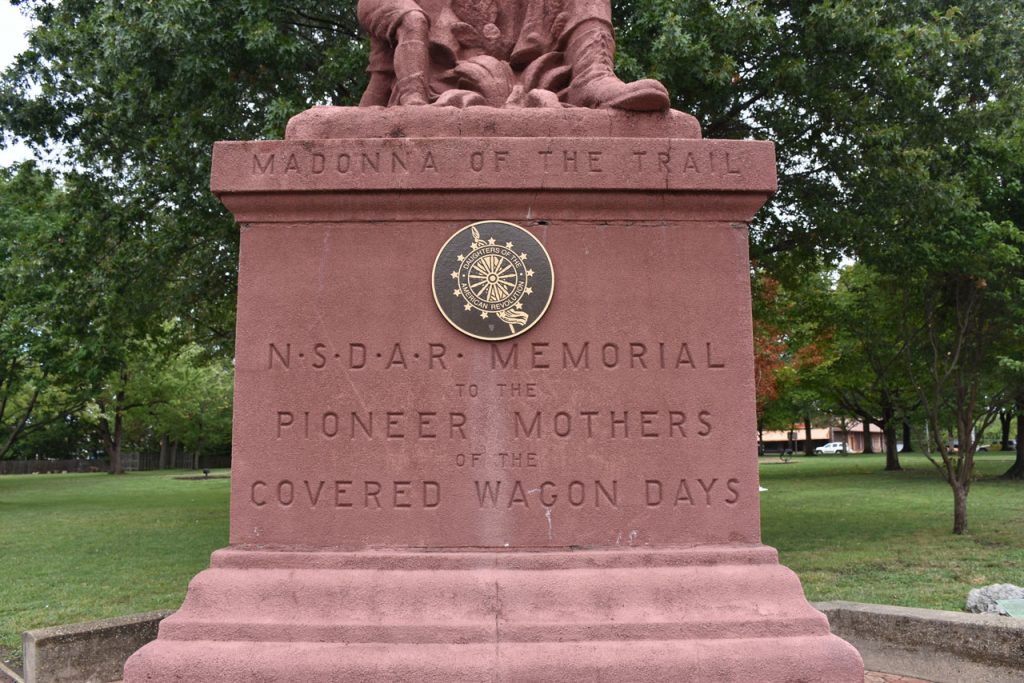
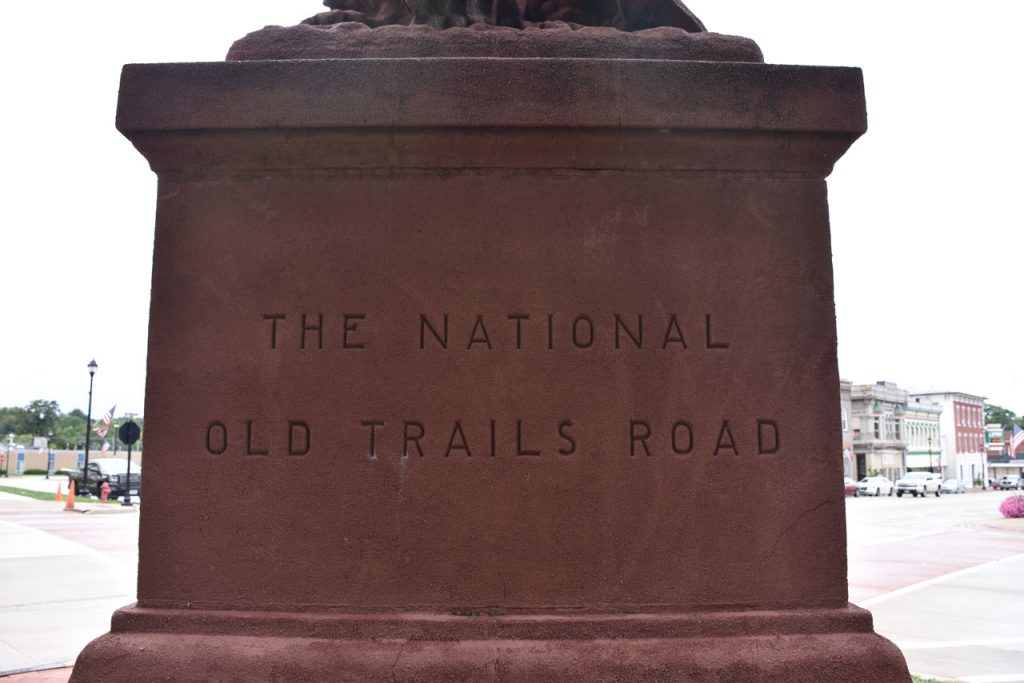
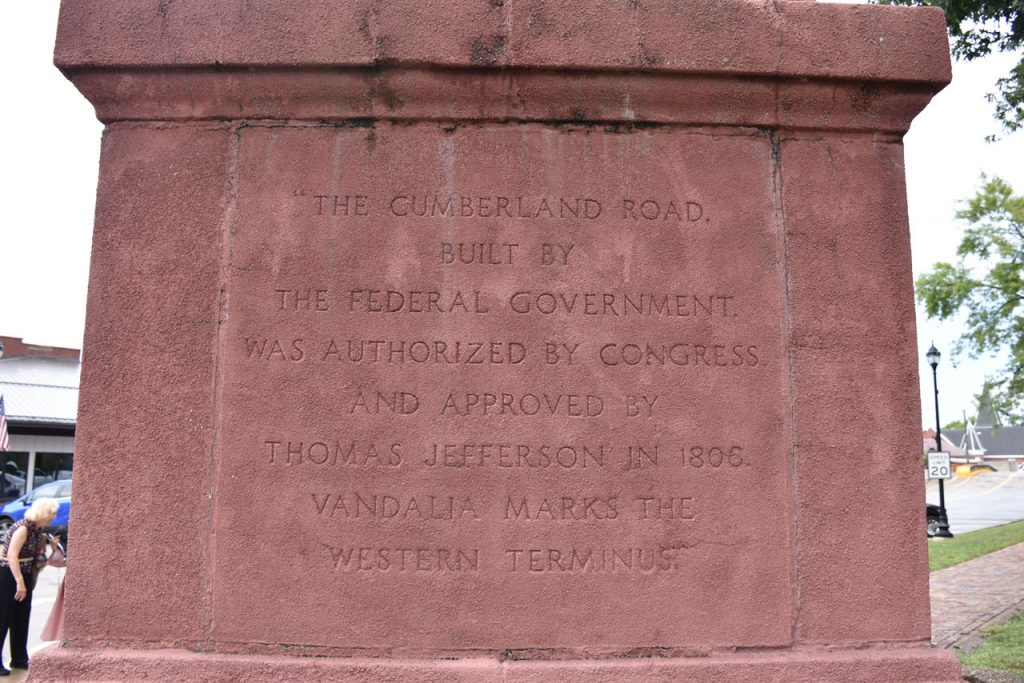

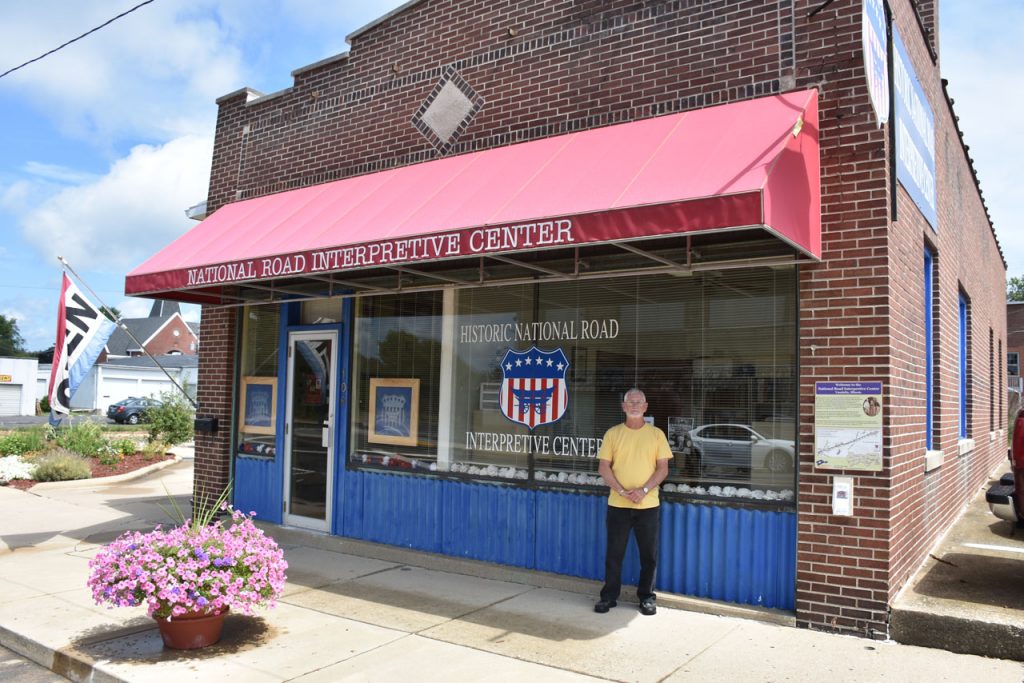
Jerry was very helpful. Stop by and say hi!
http://nationalroadvandalia.org/
Hope you enjoyed traveling Rt 40 (National Road)
